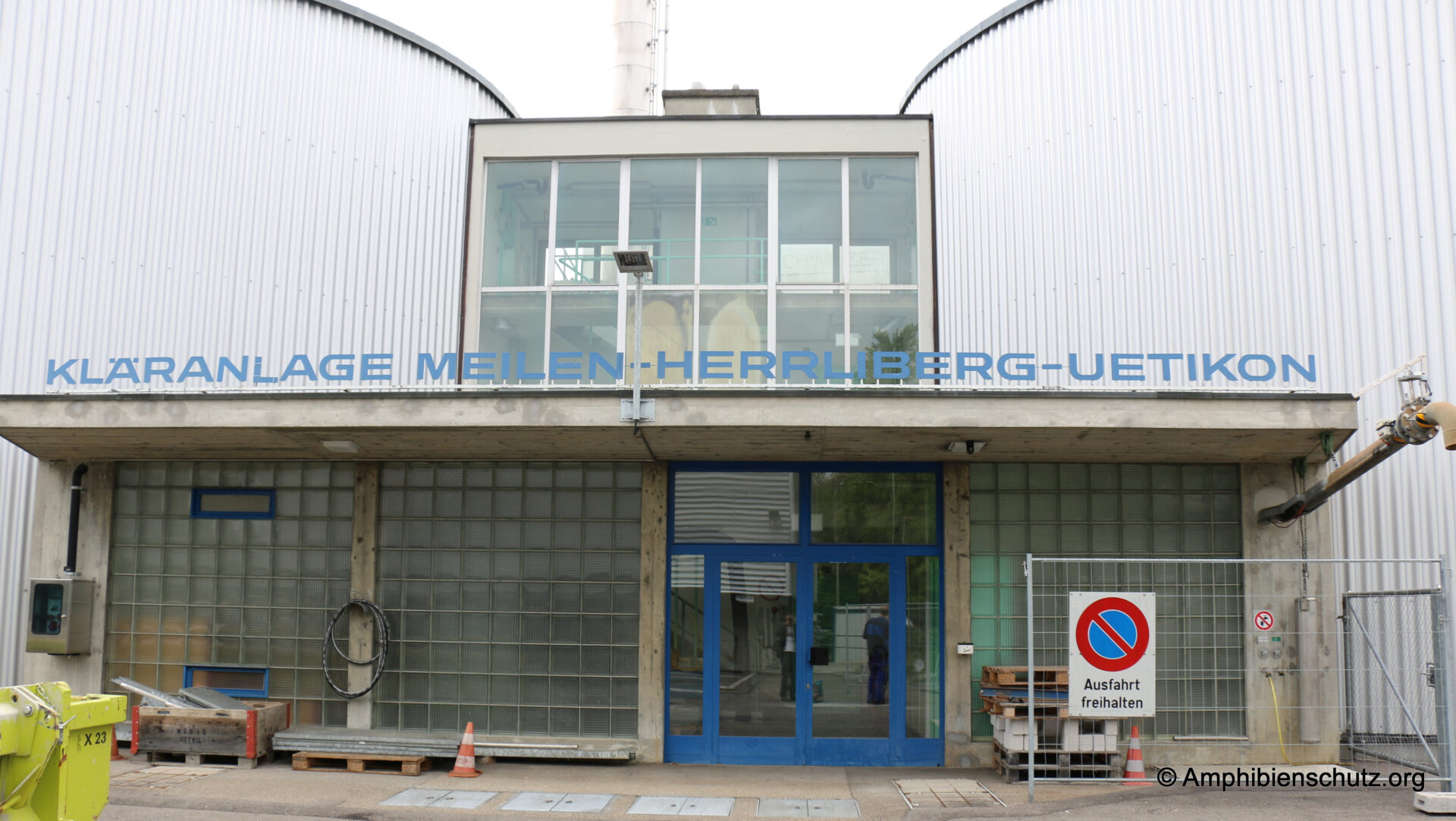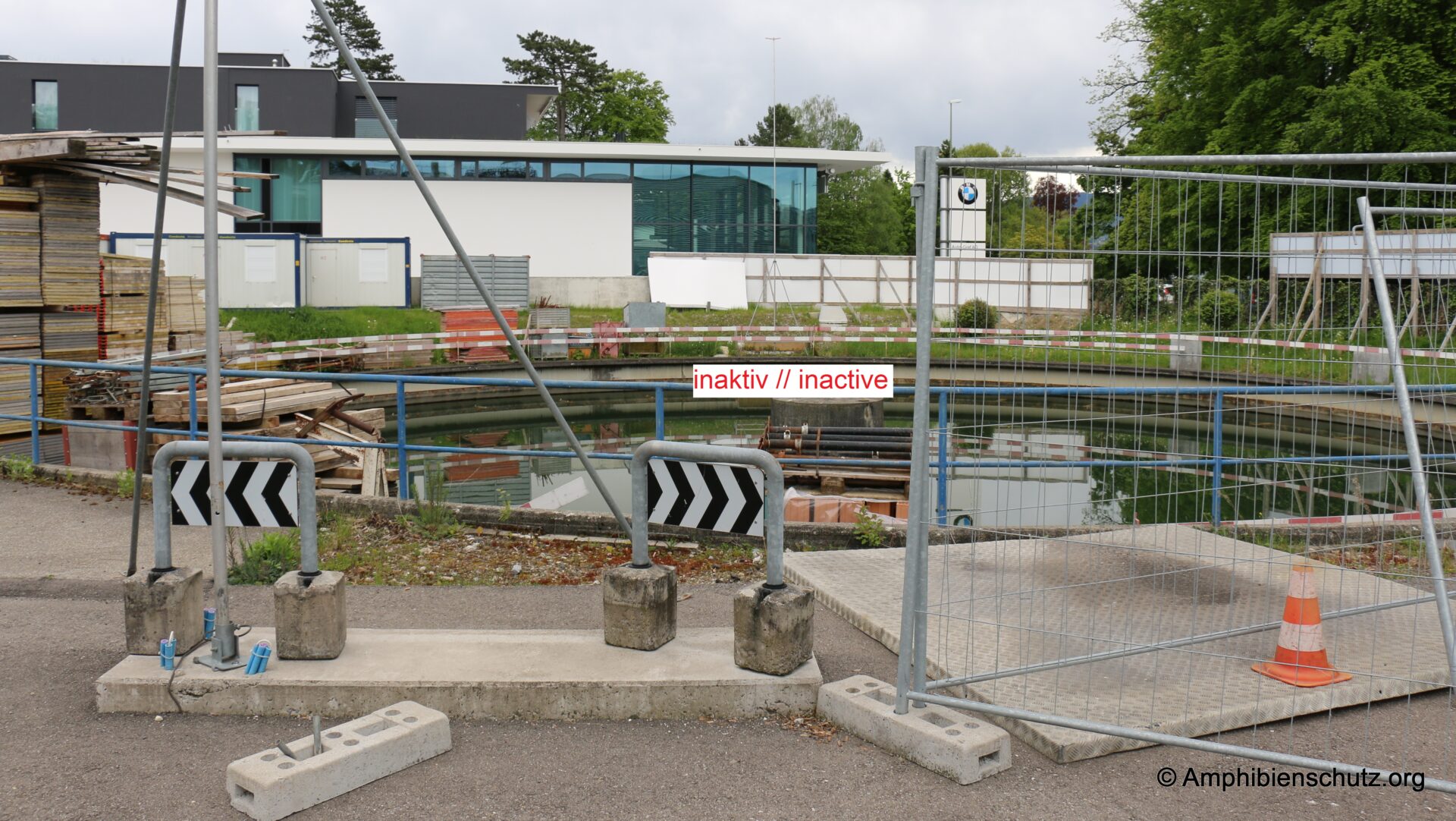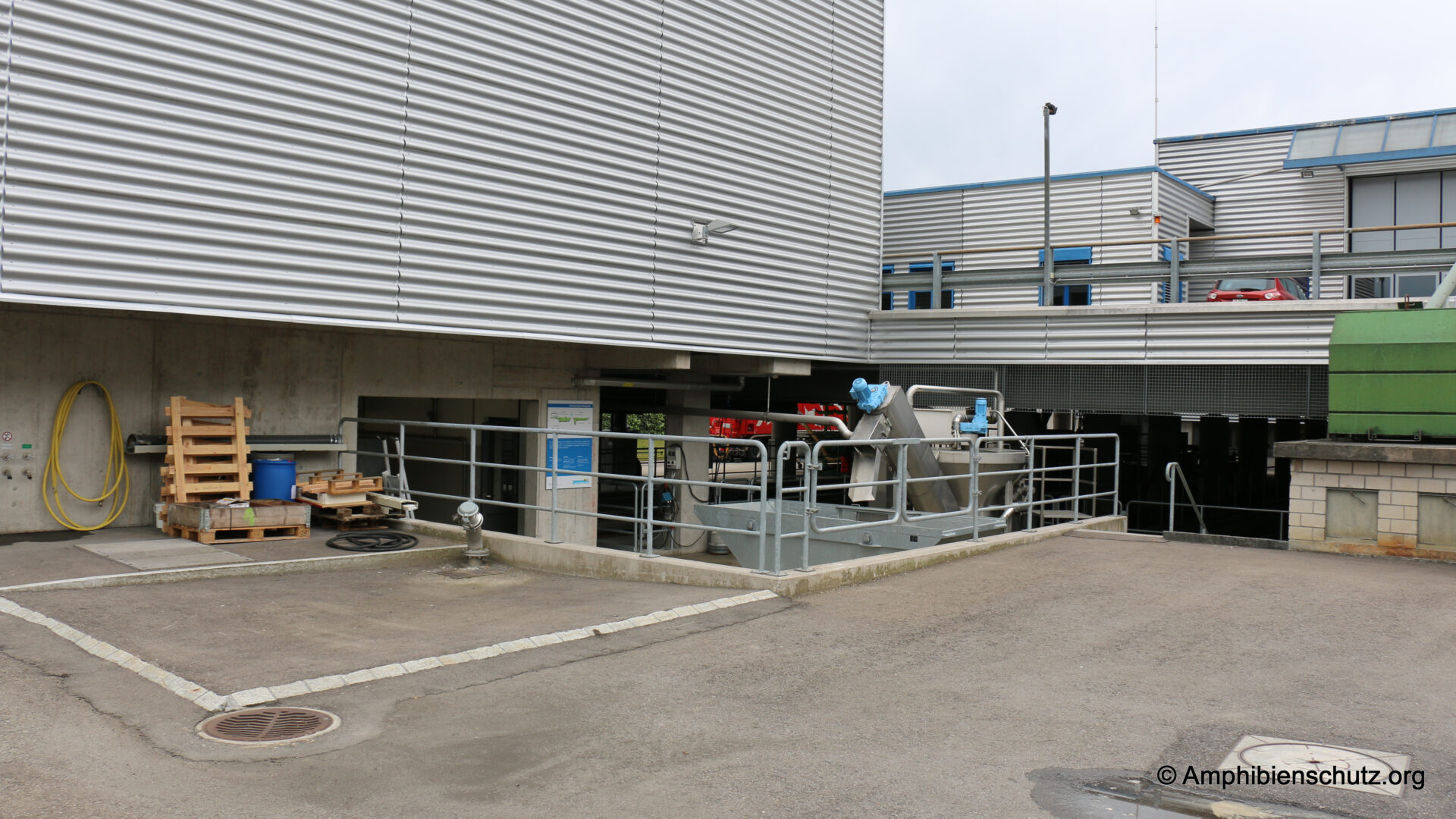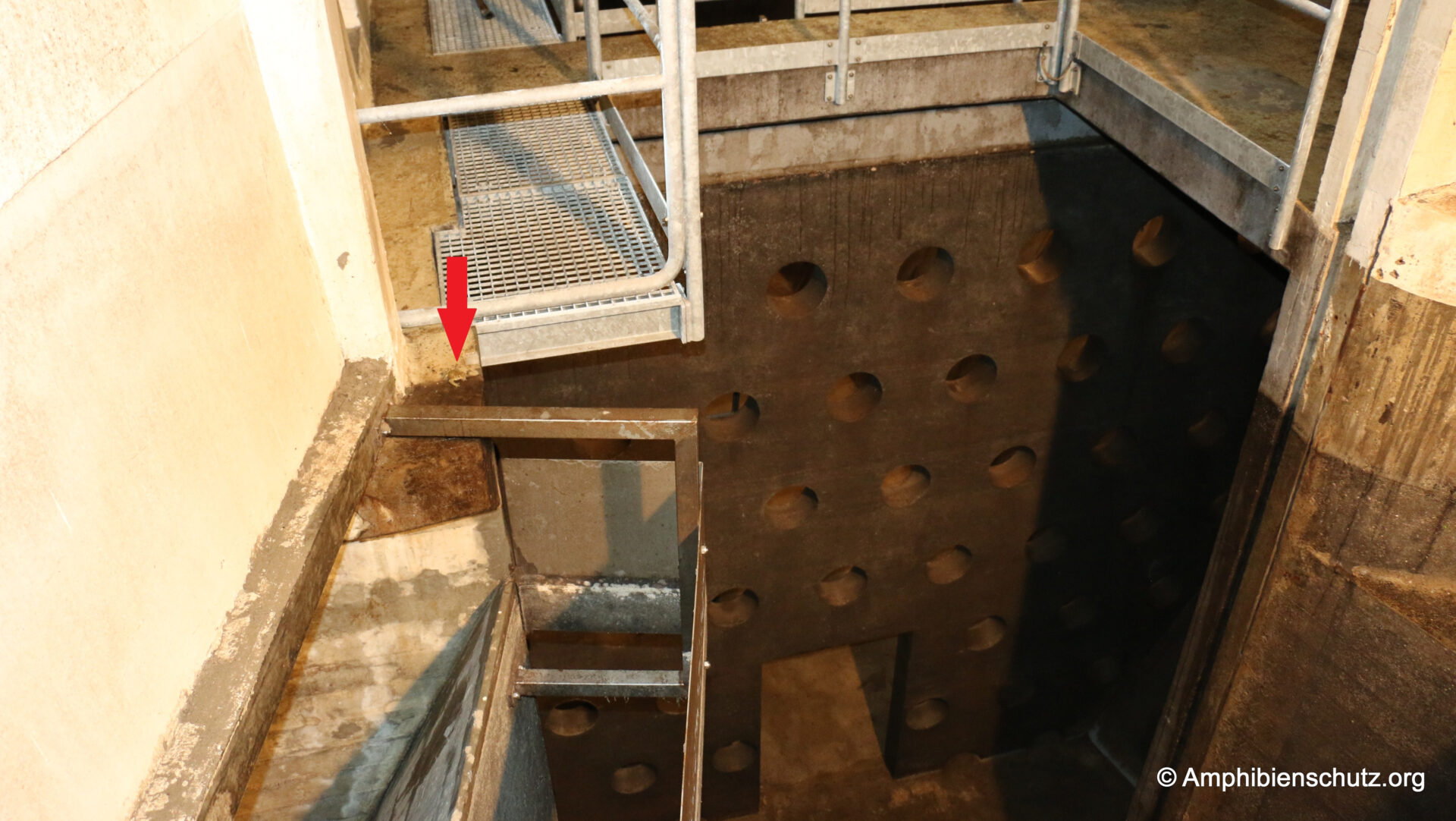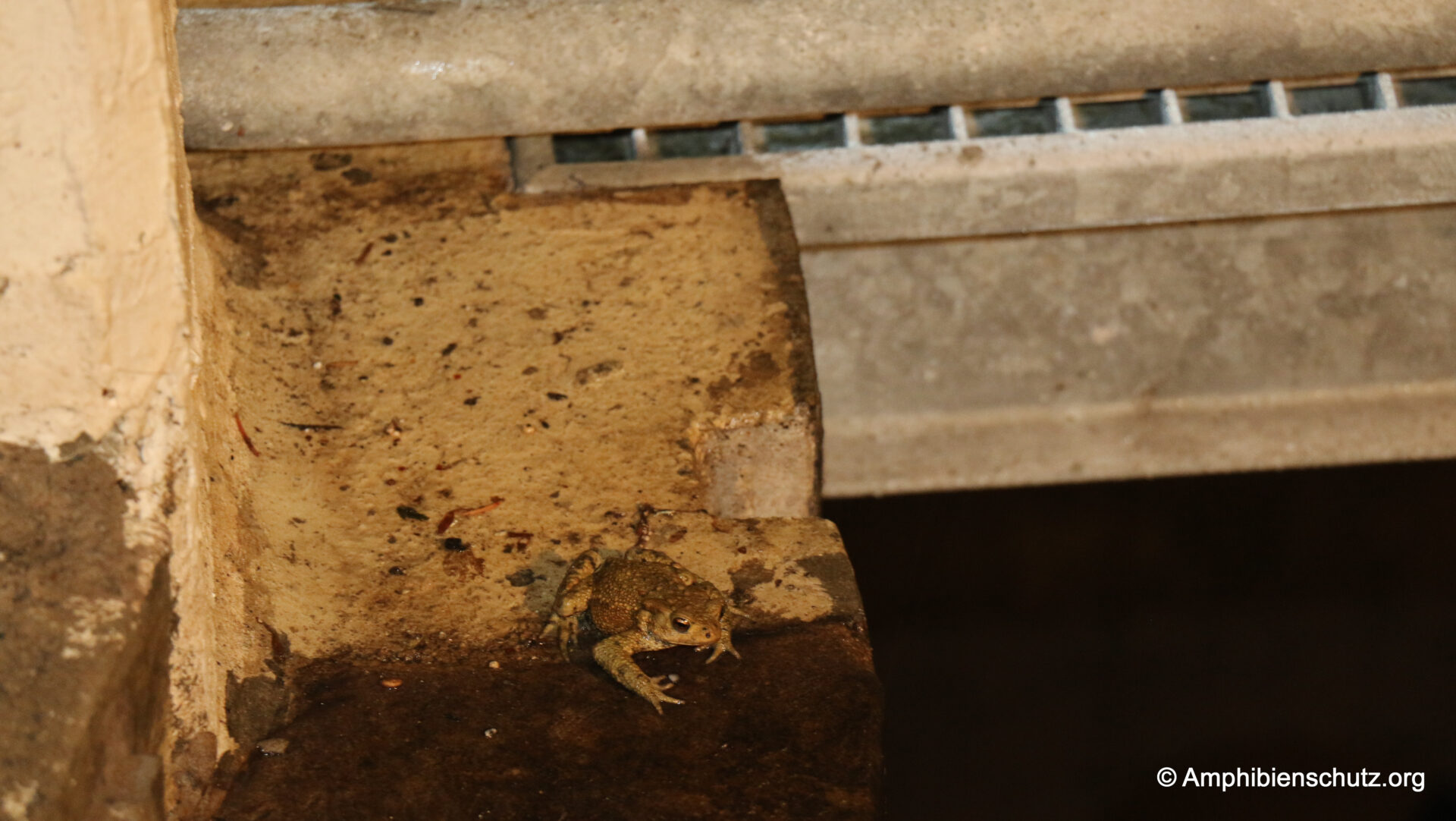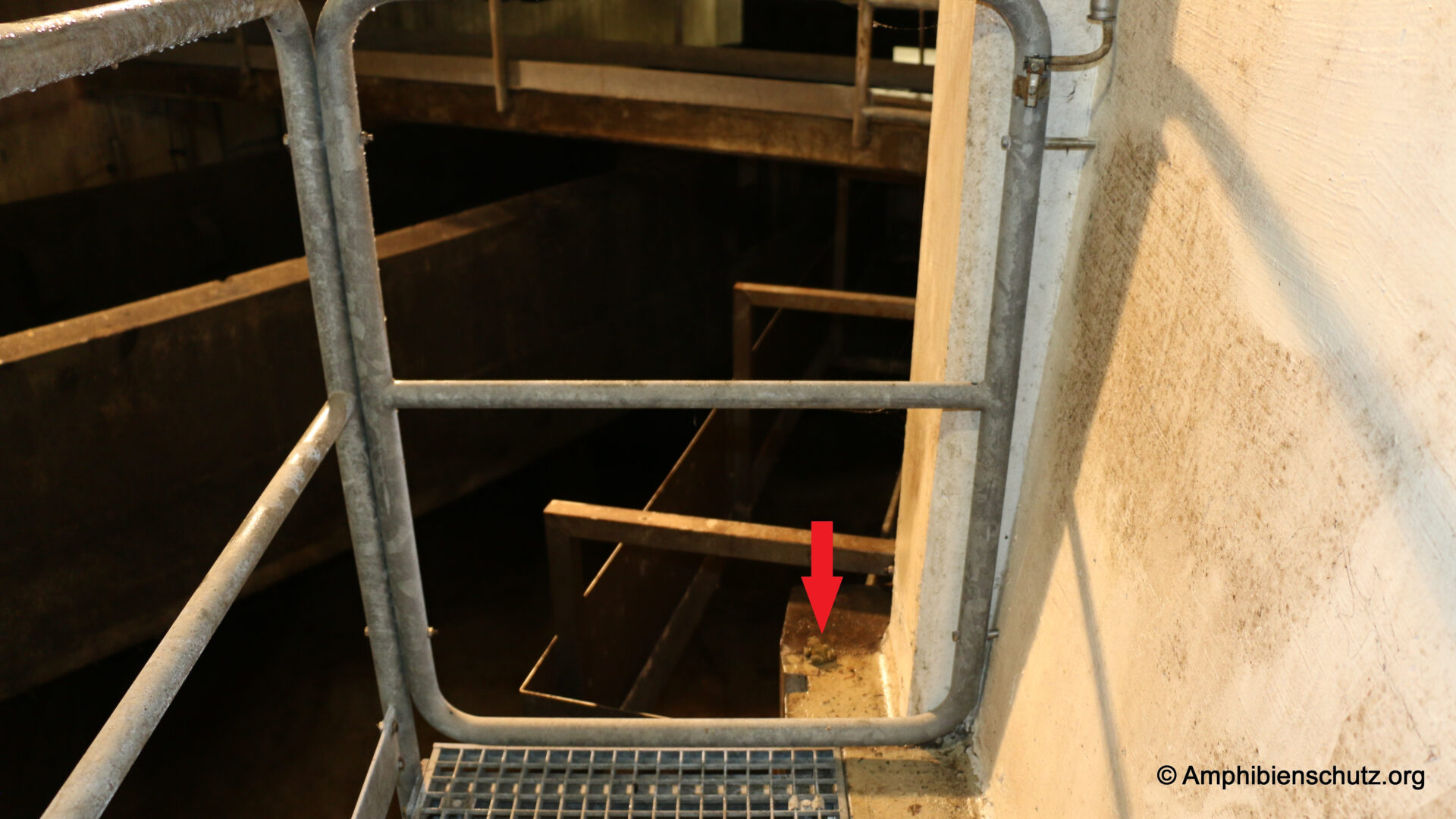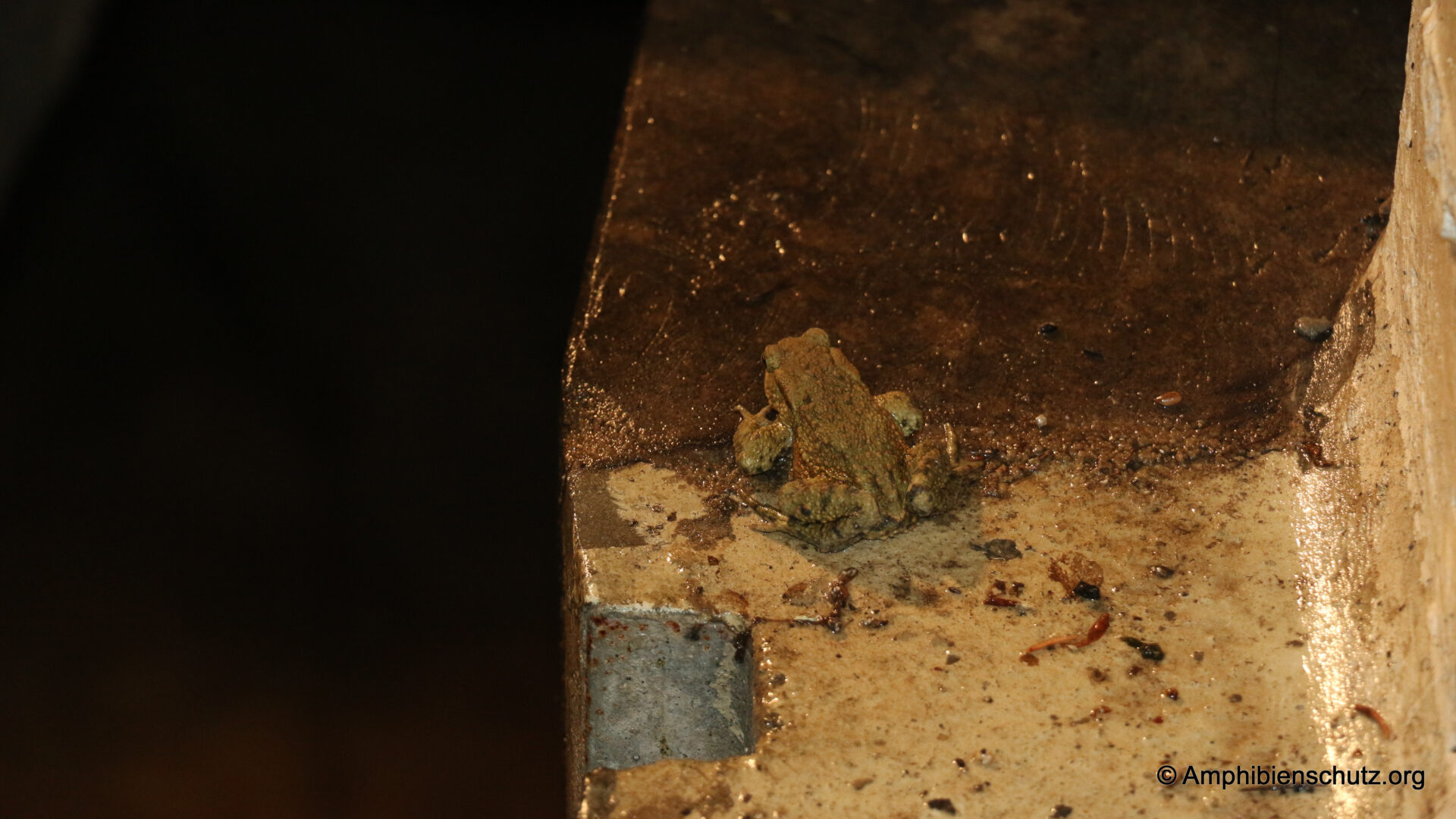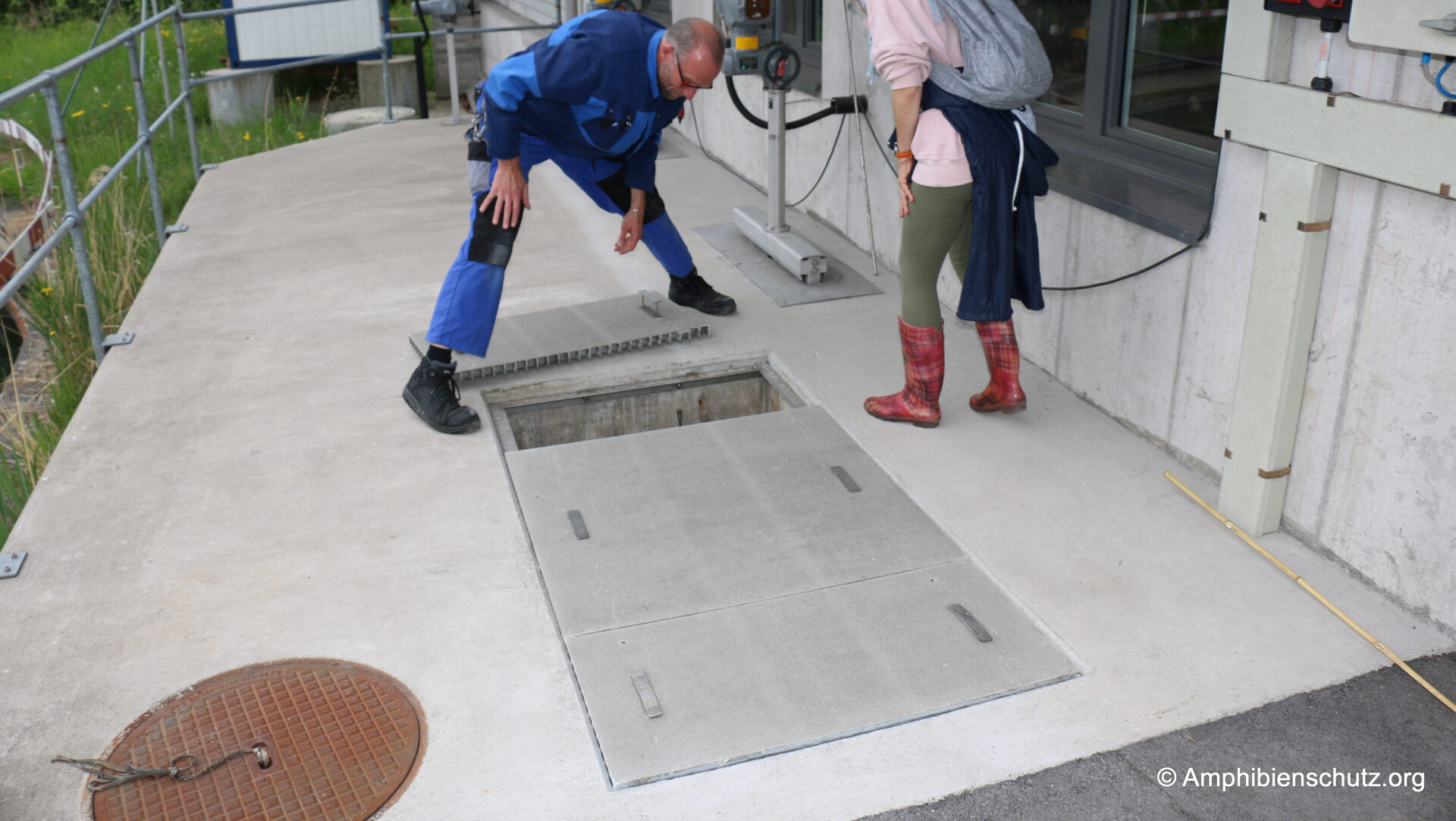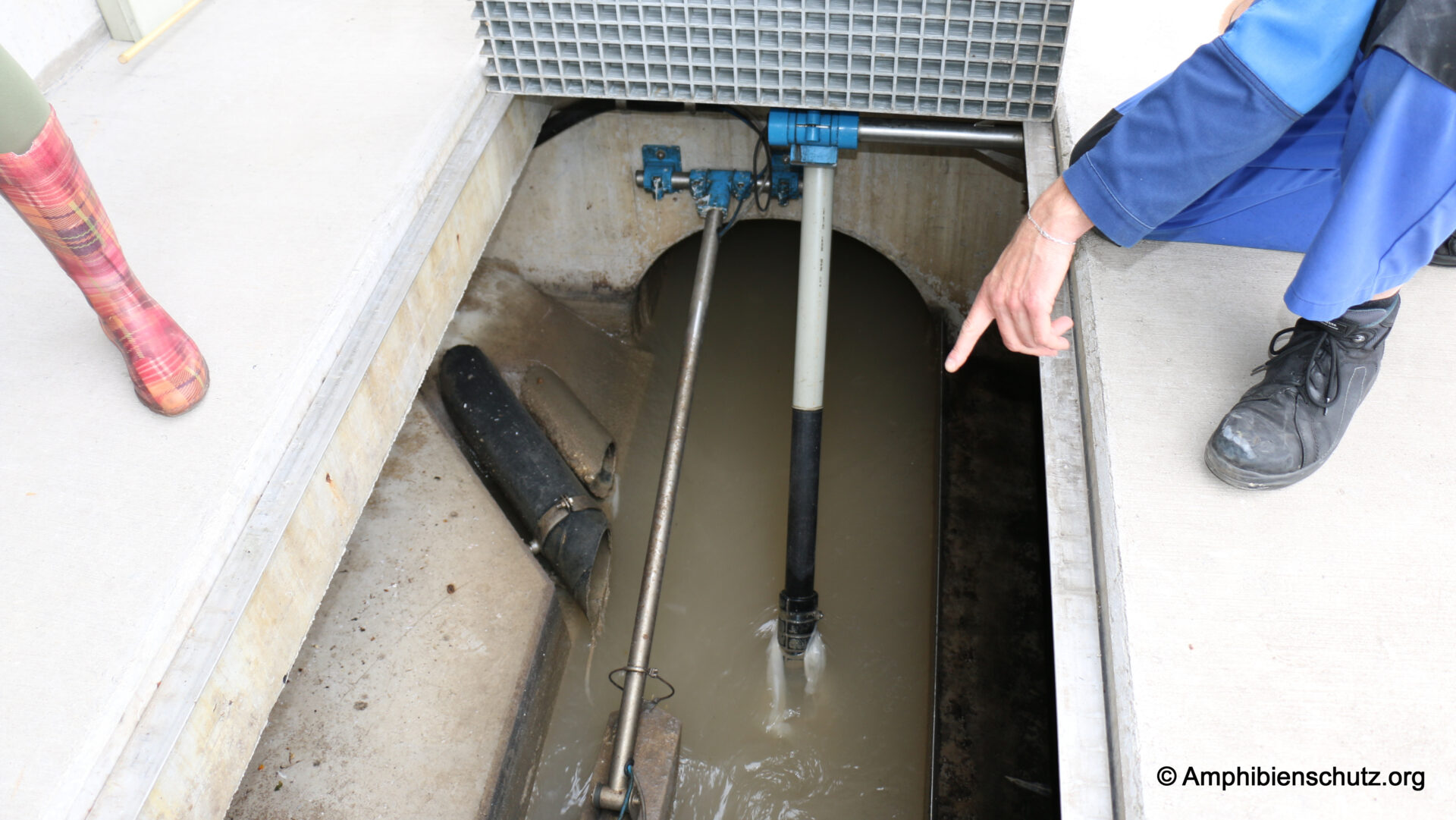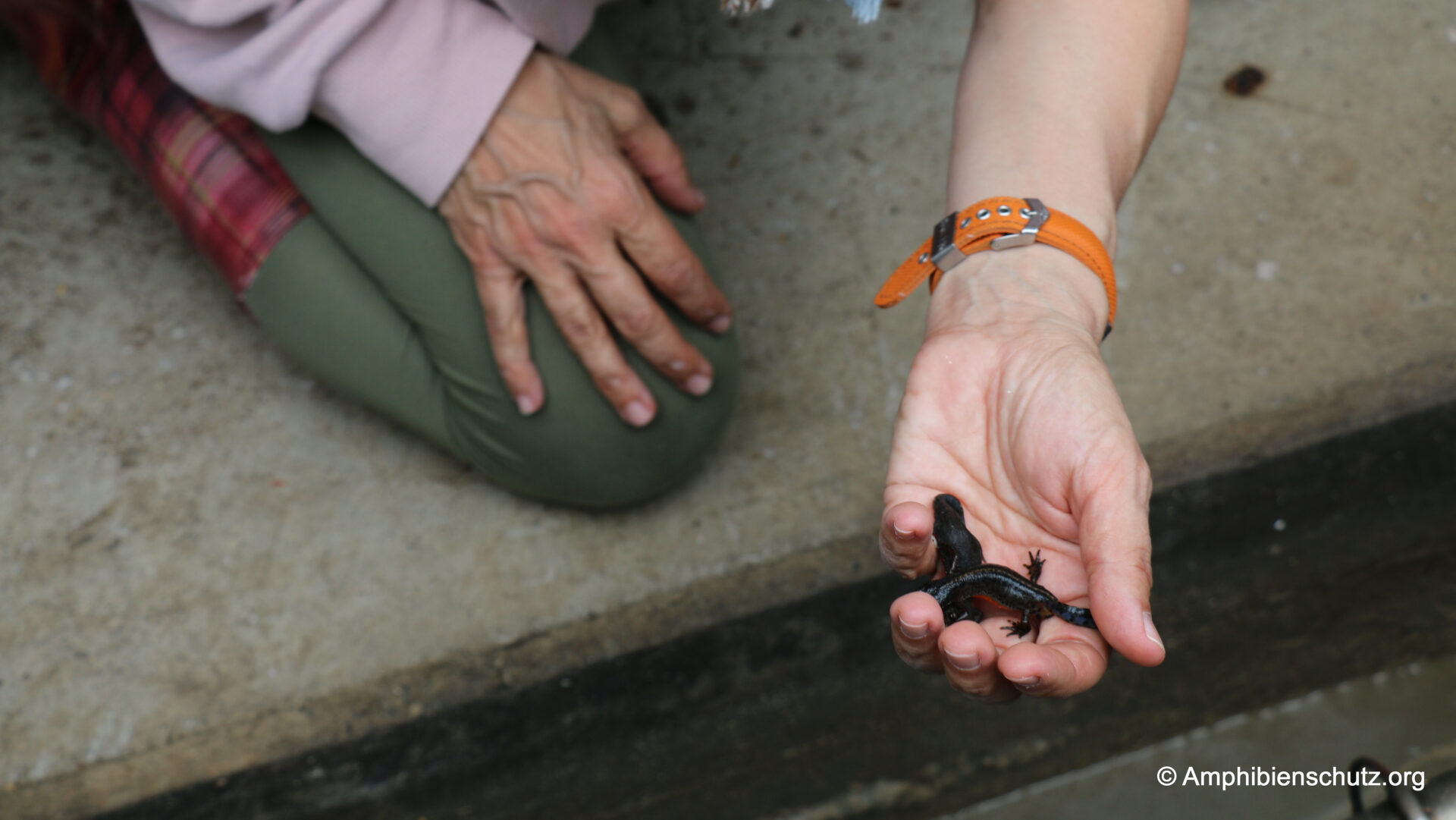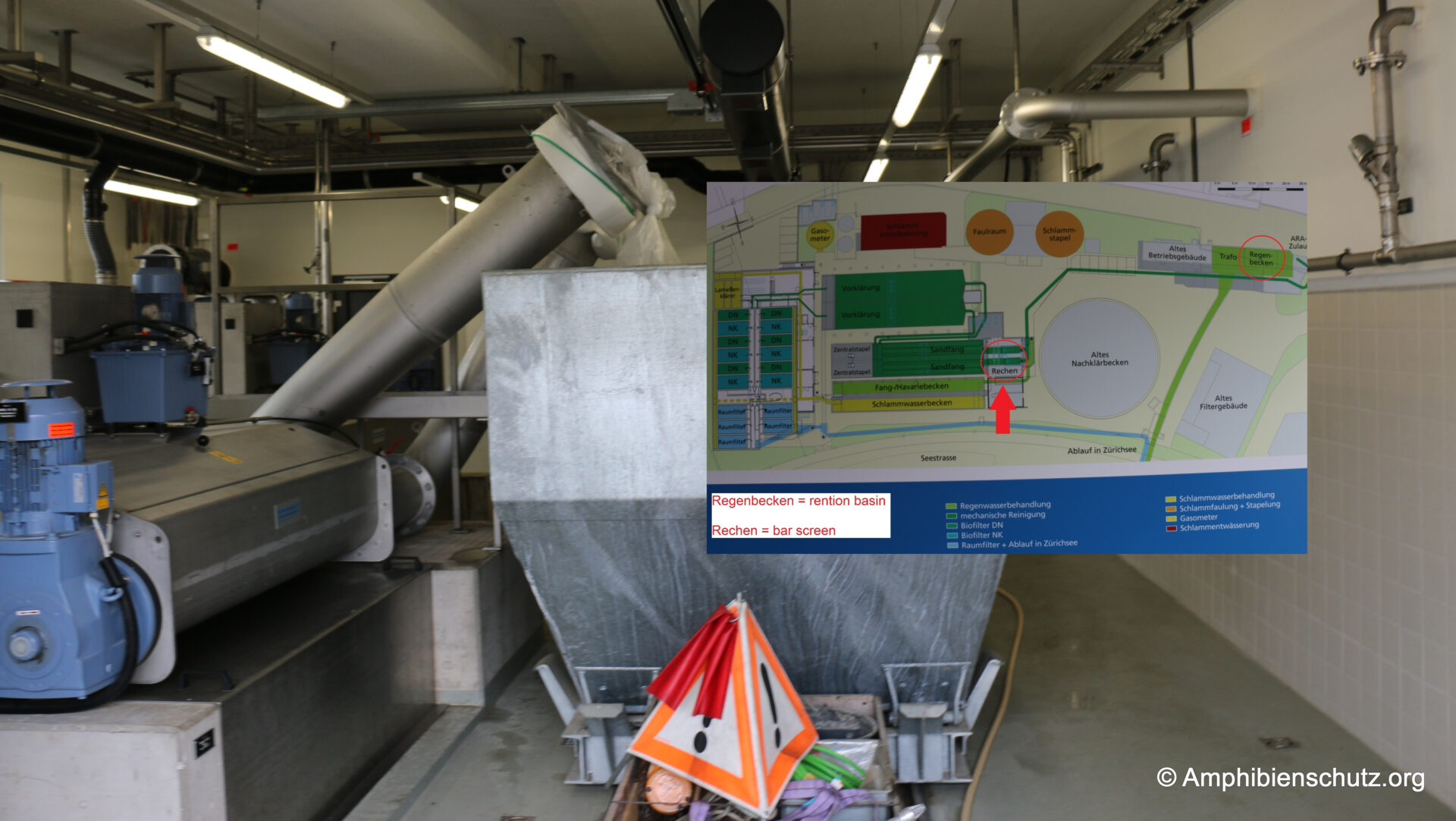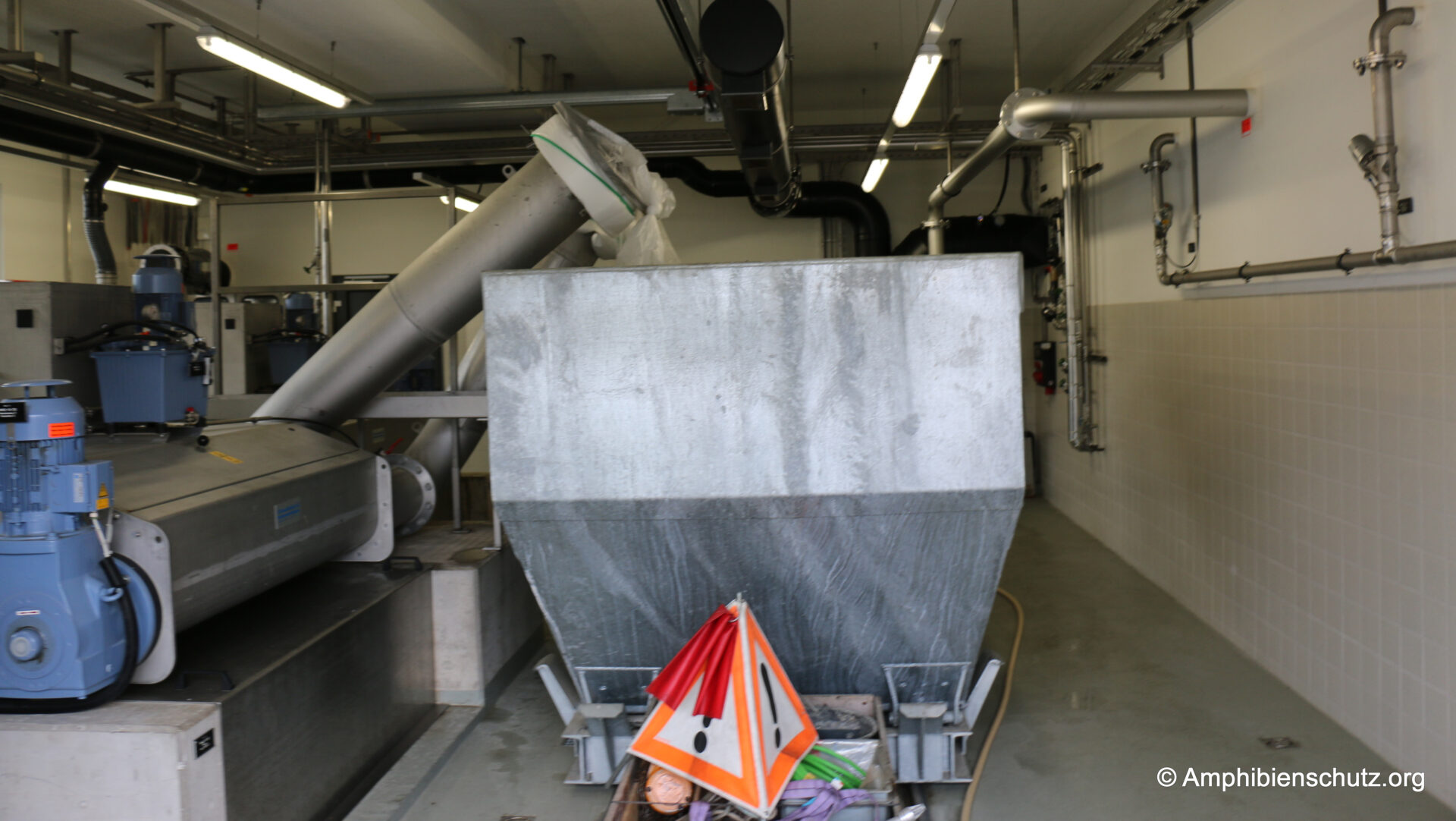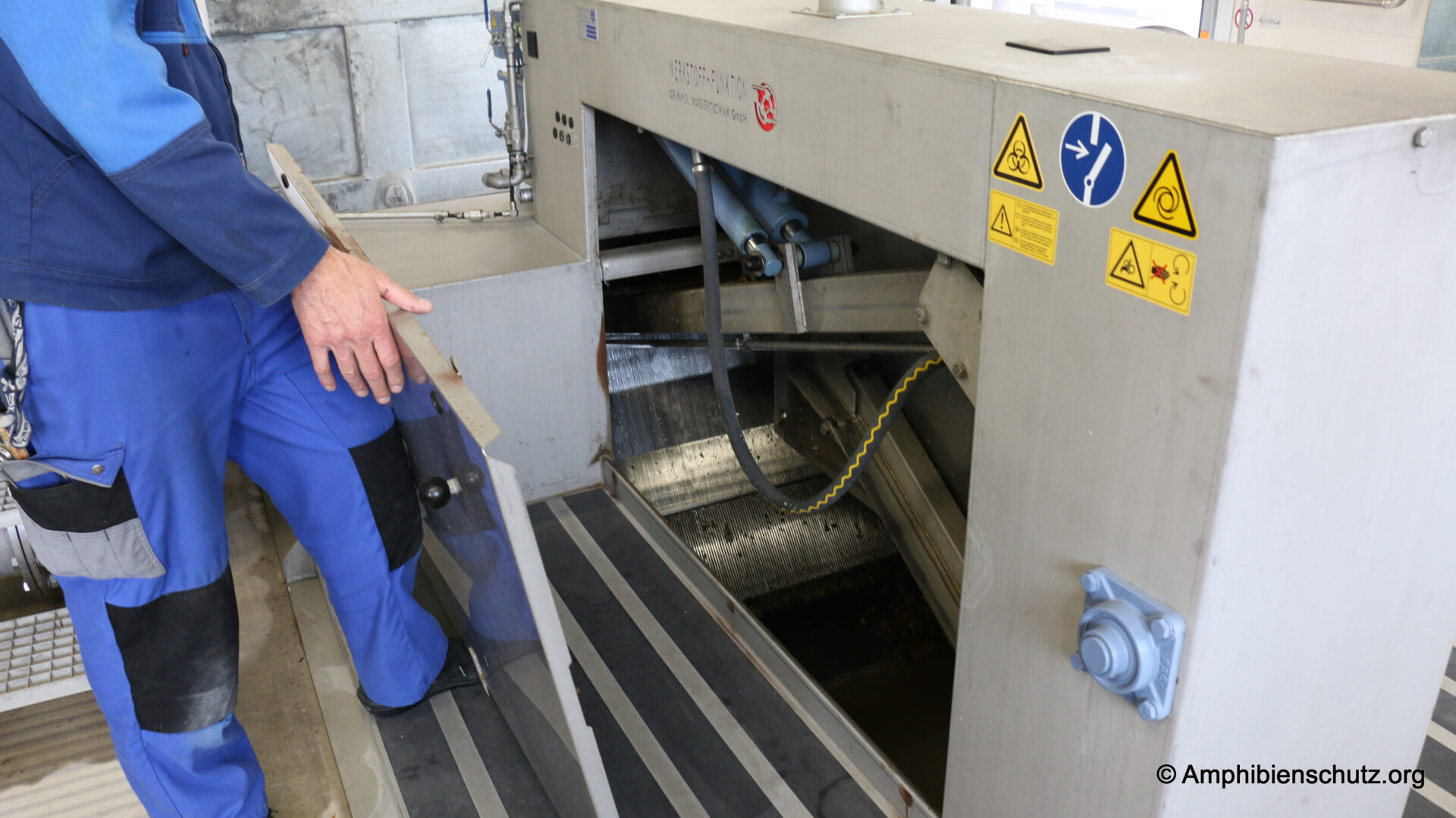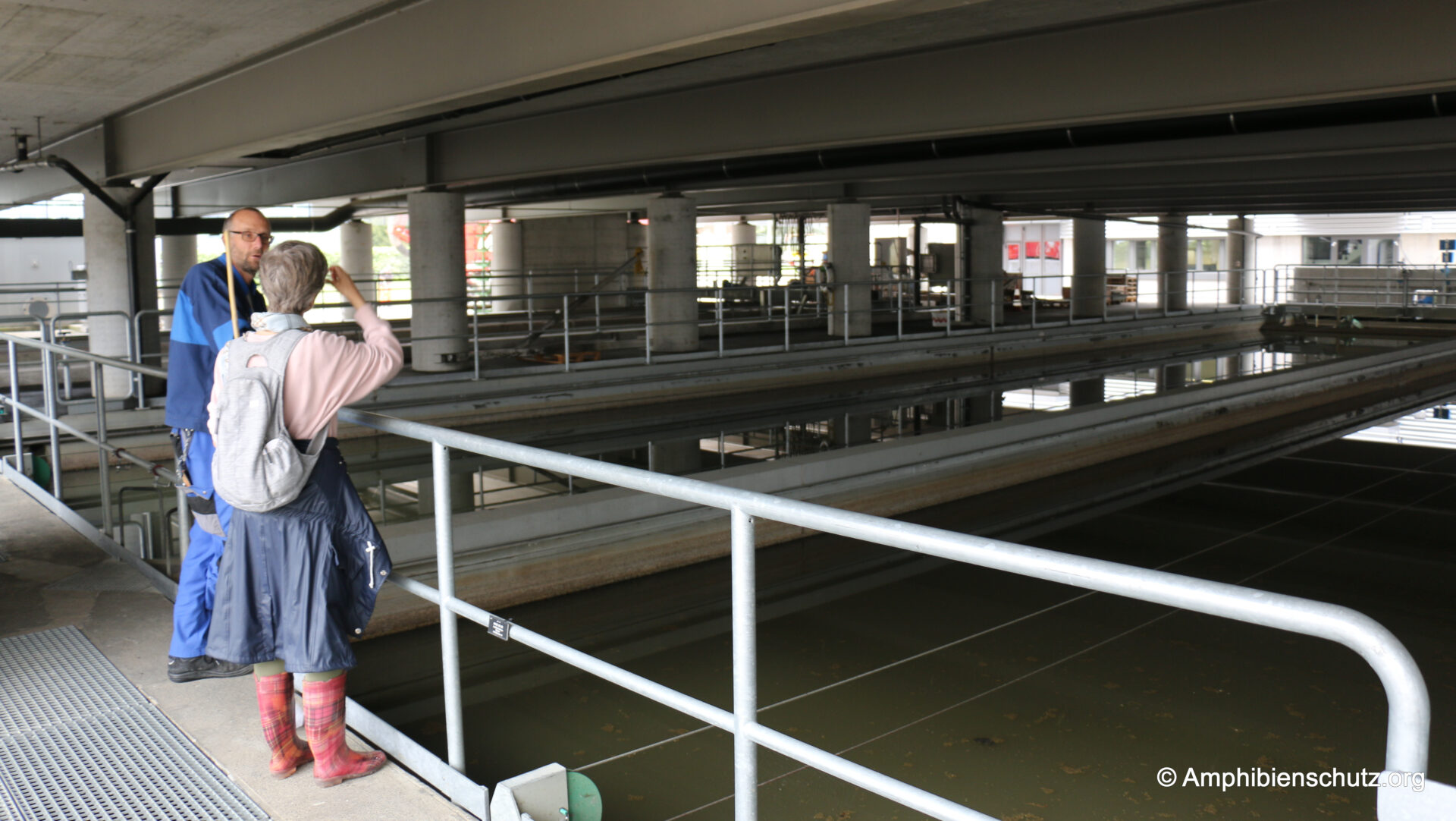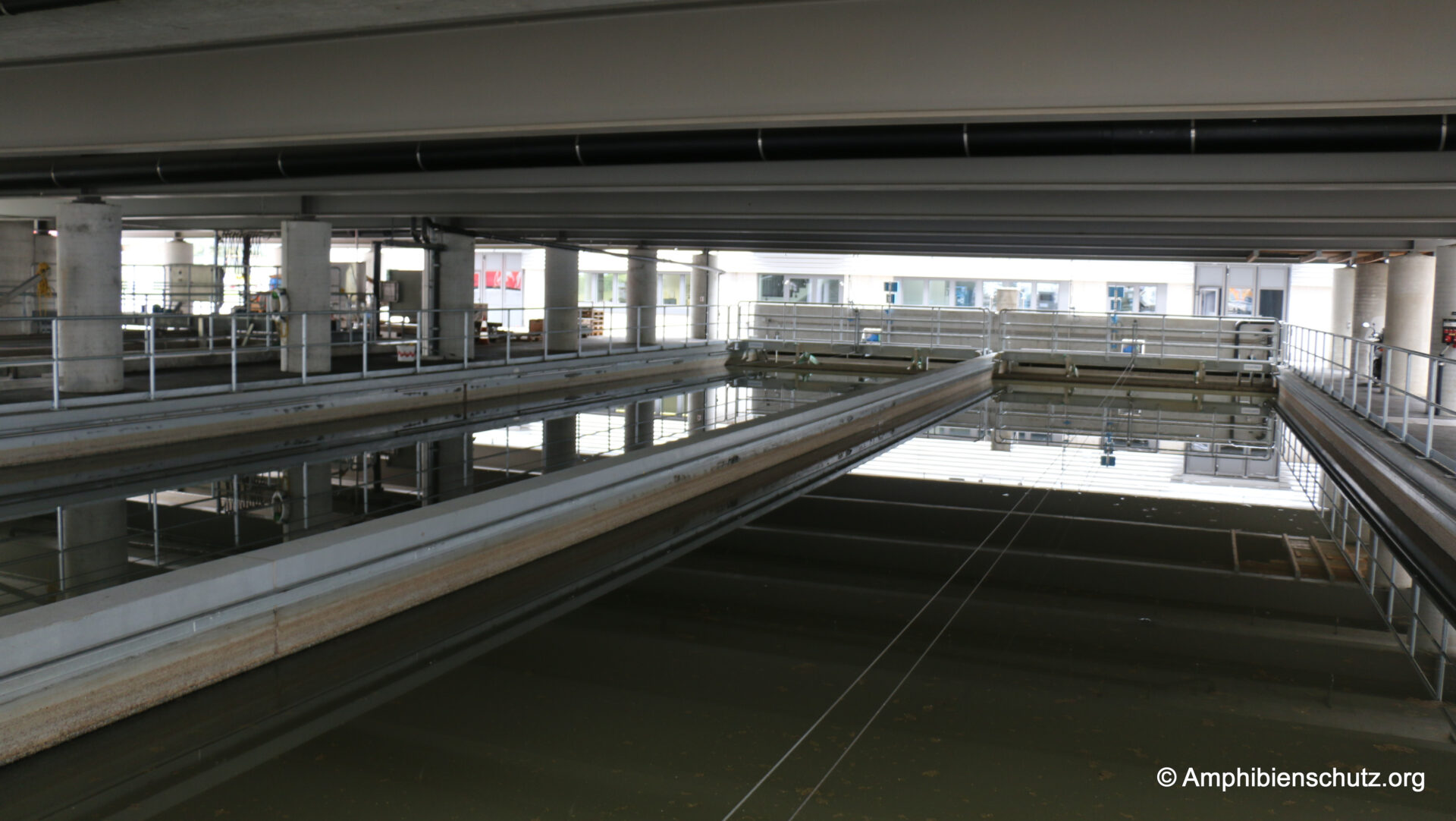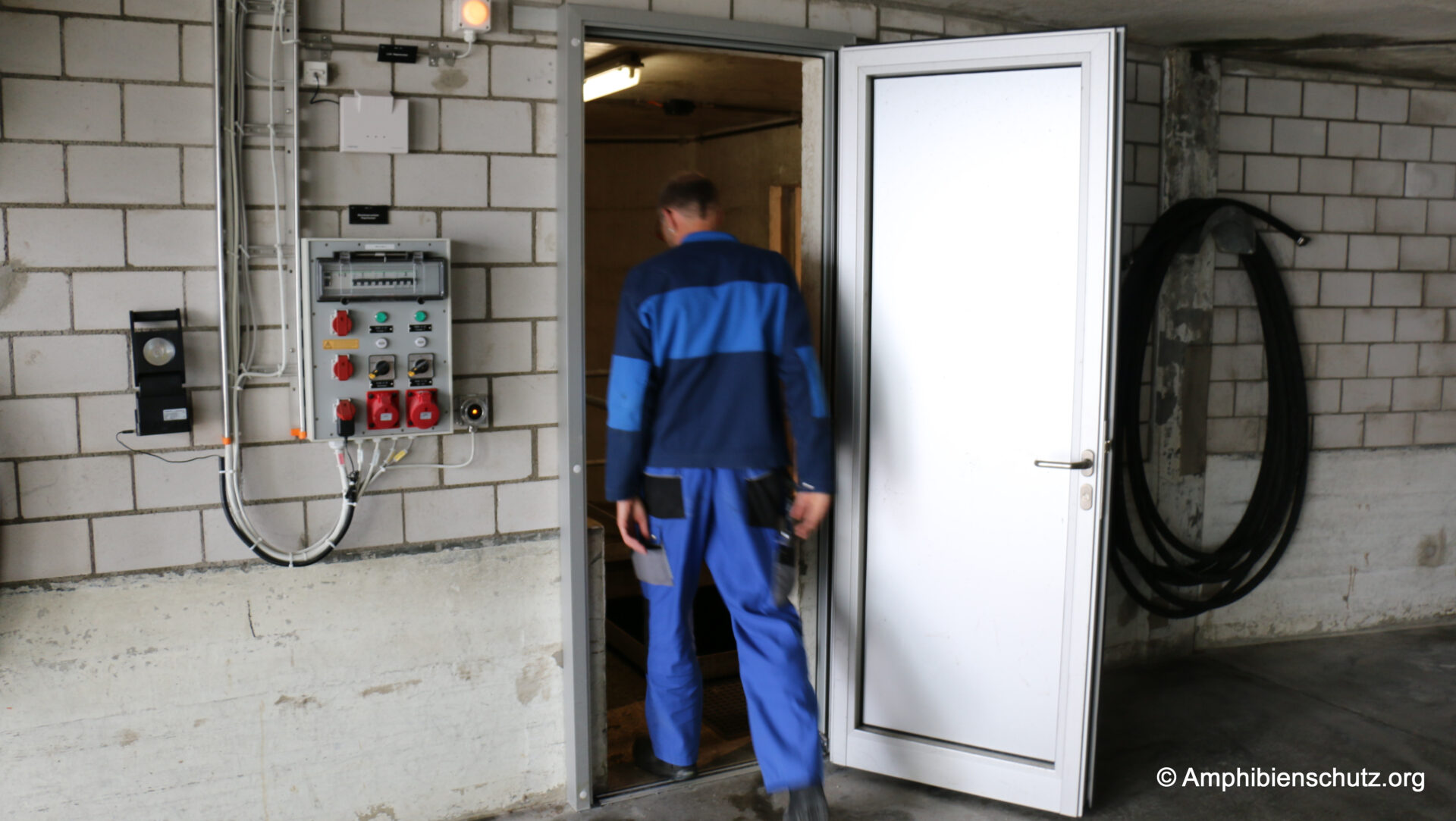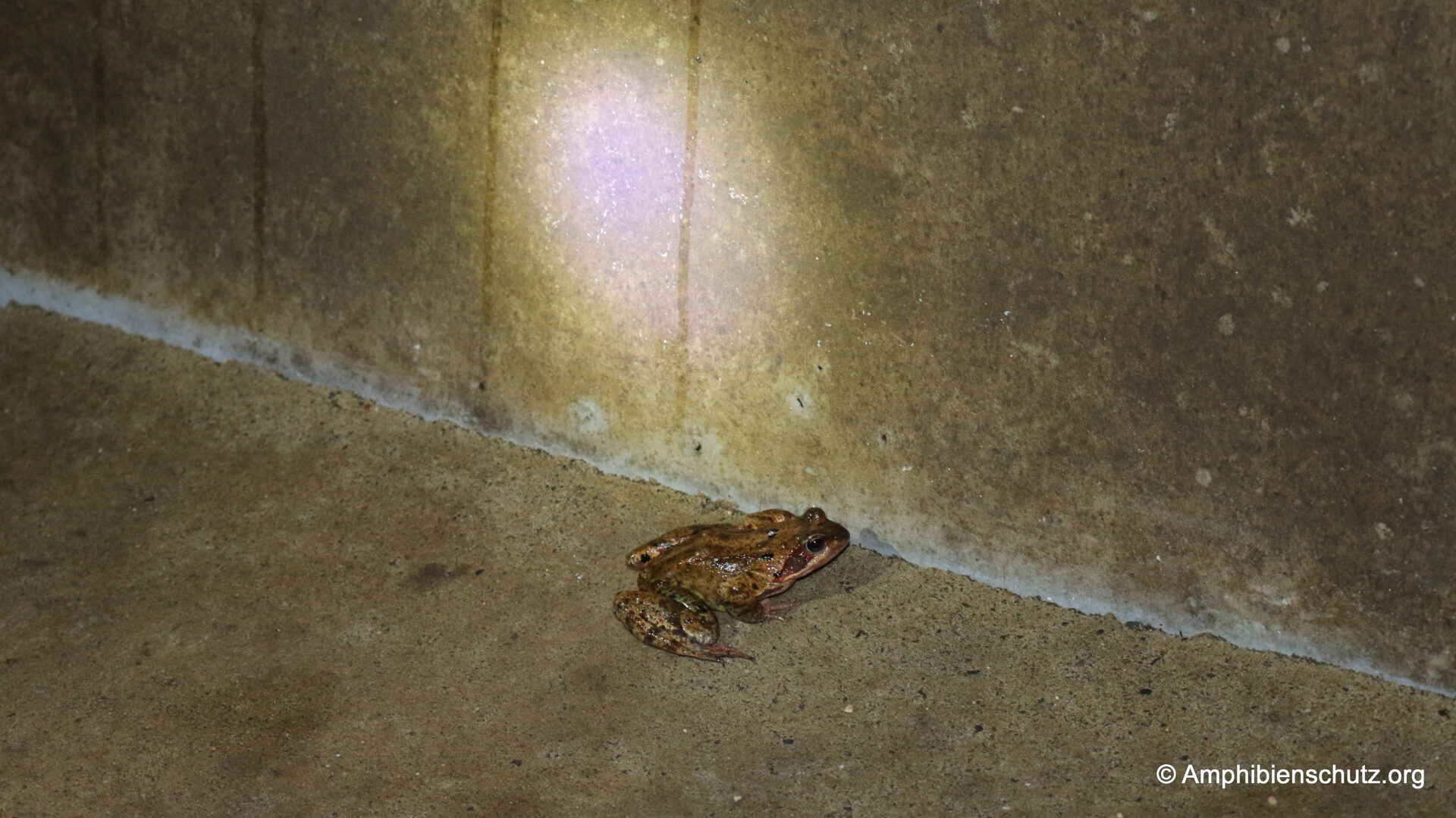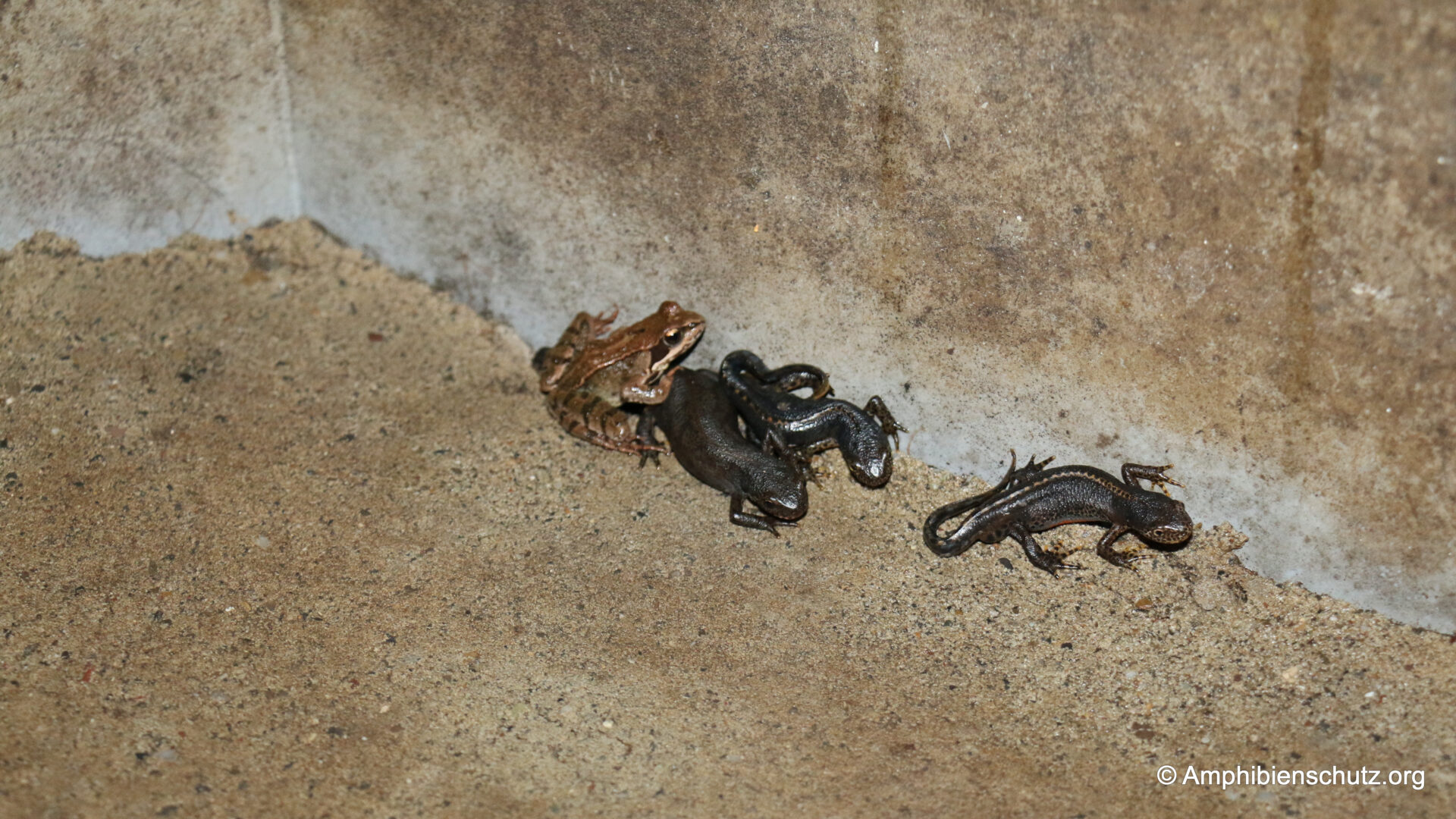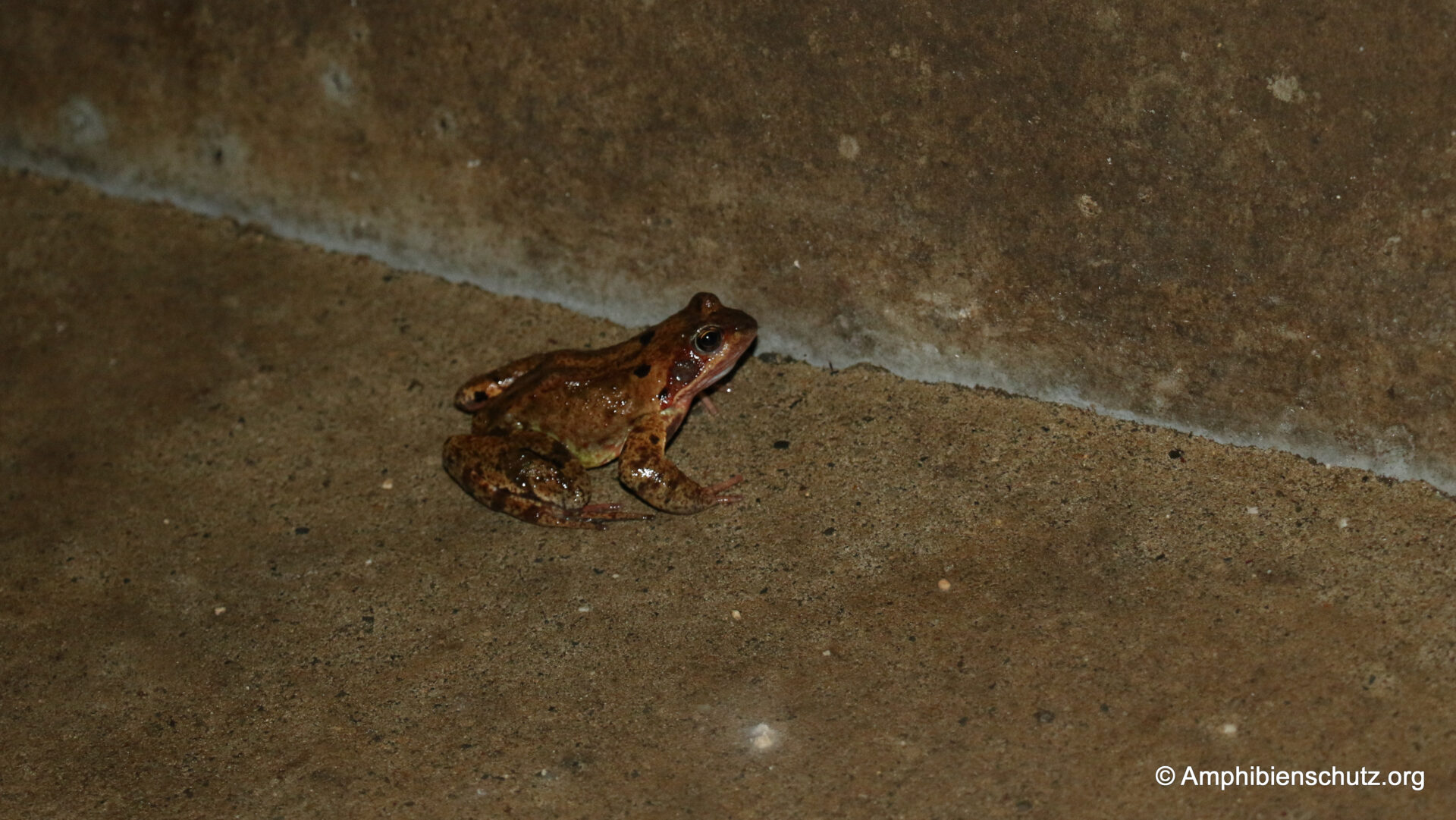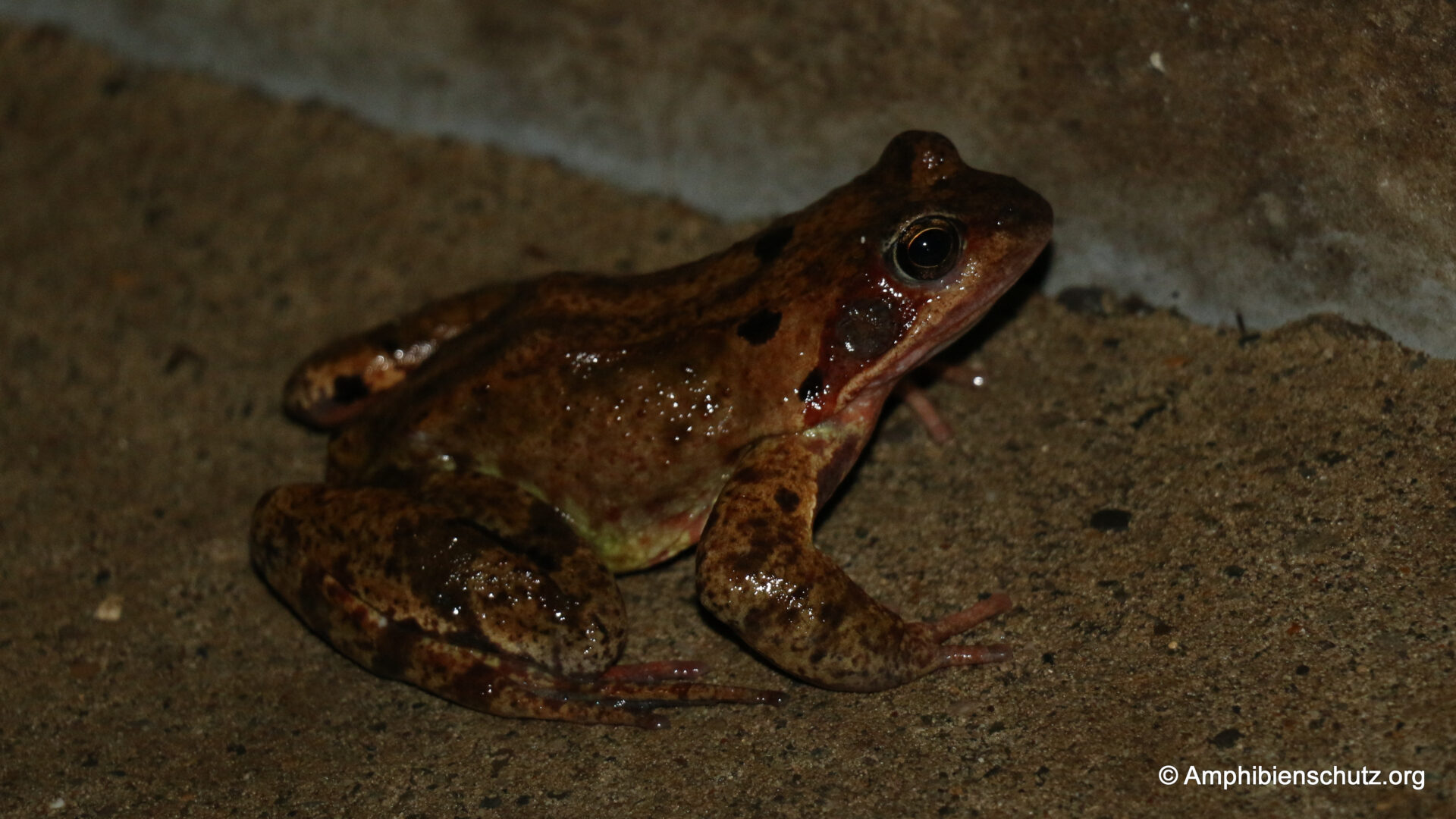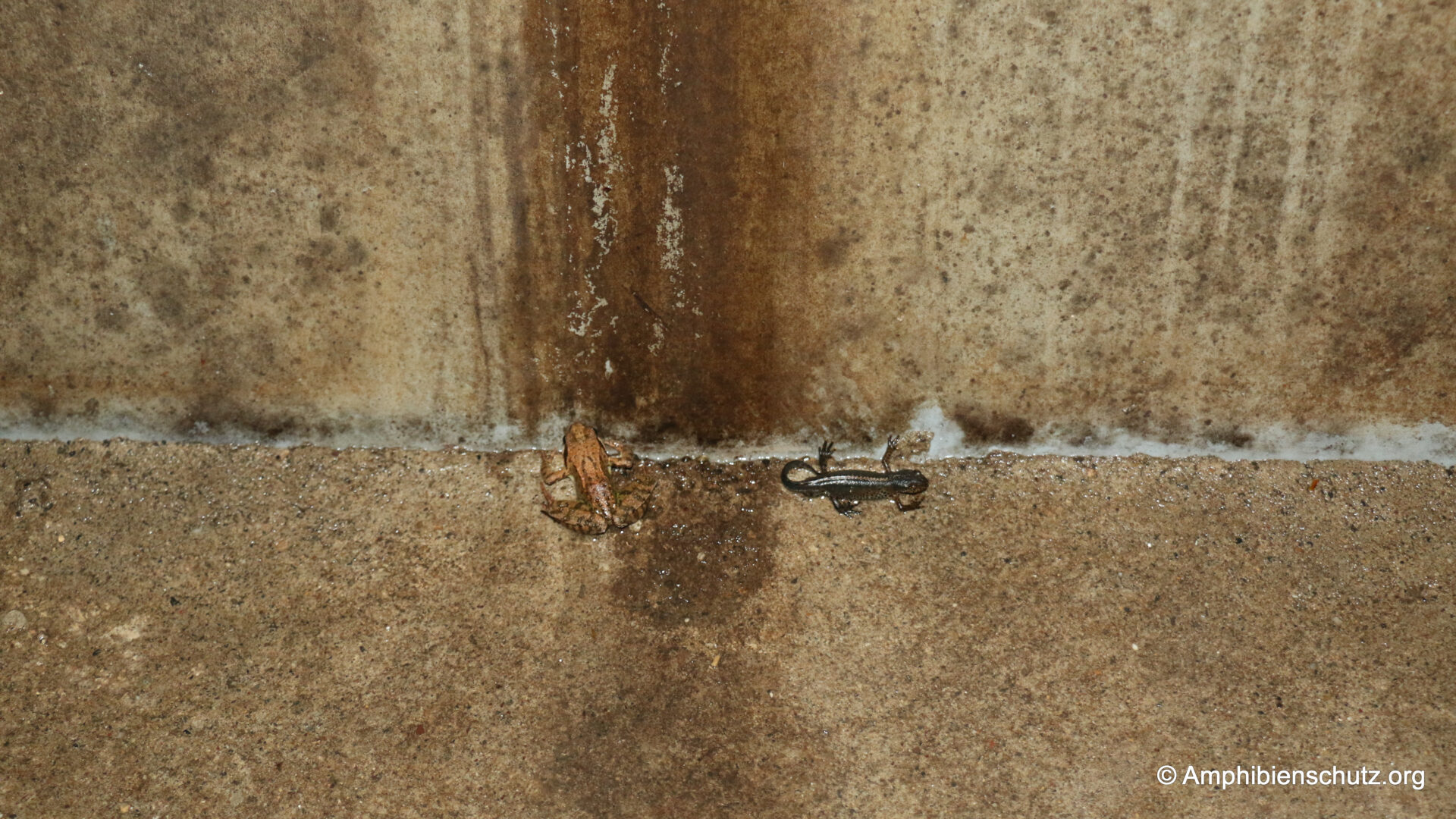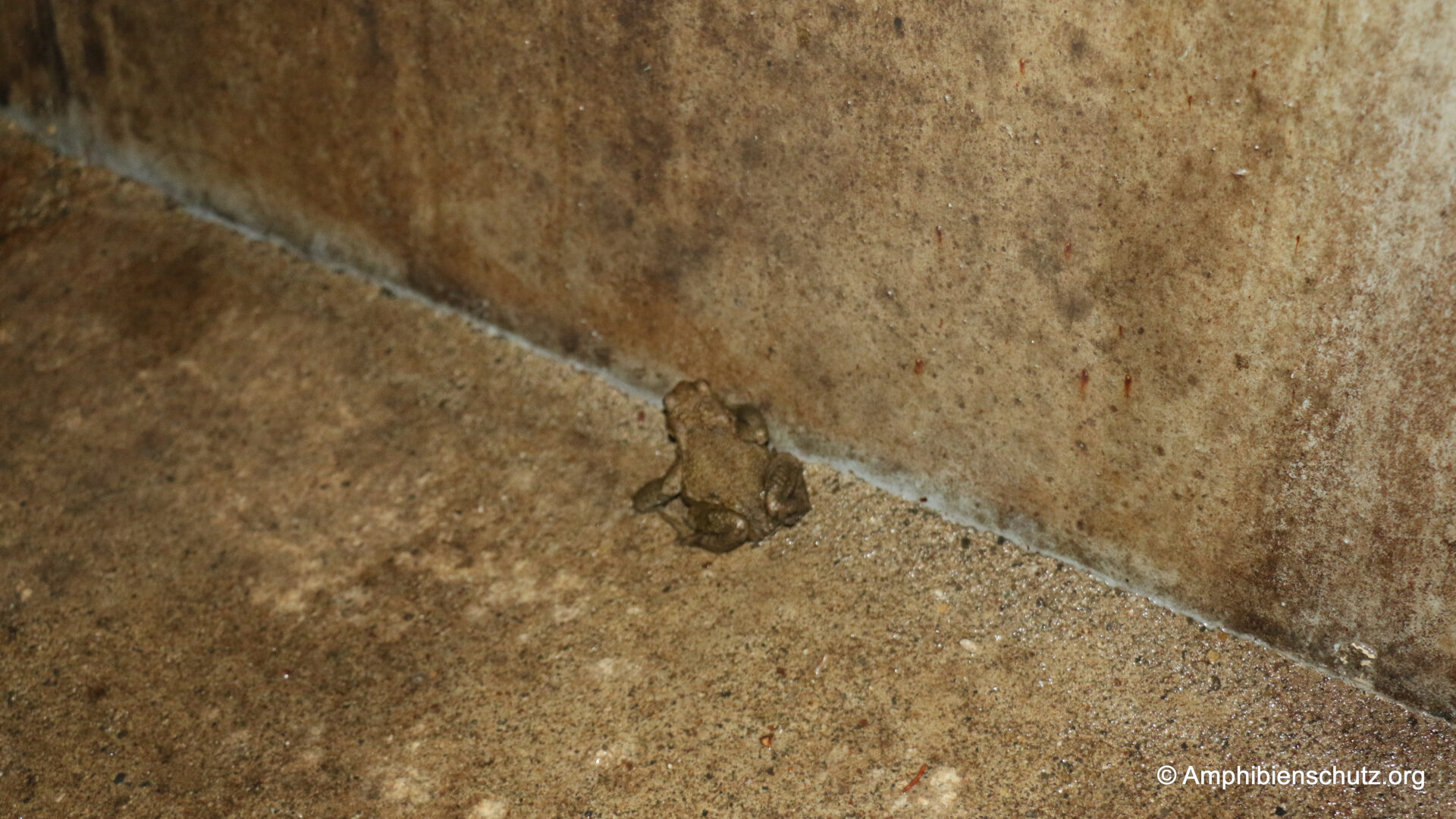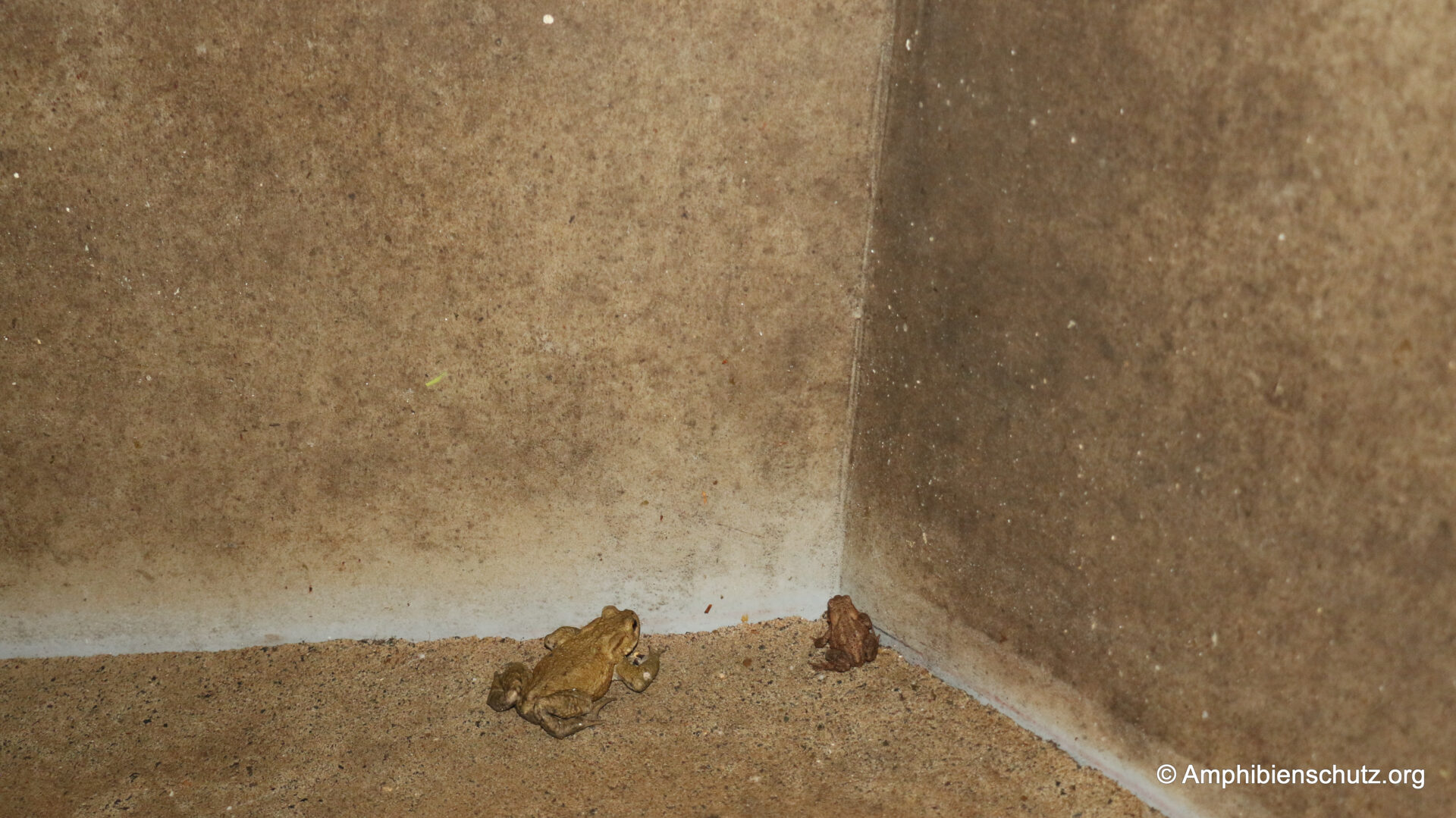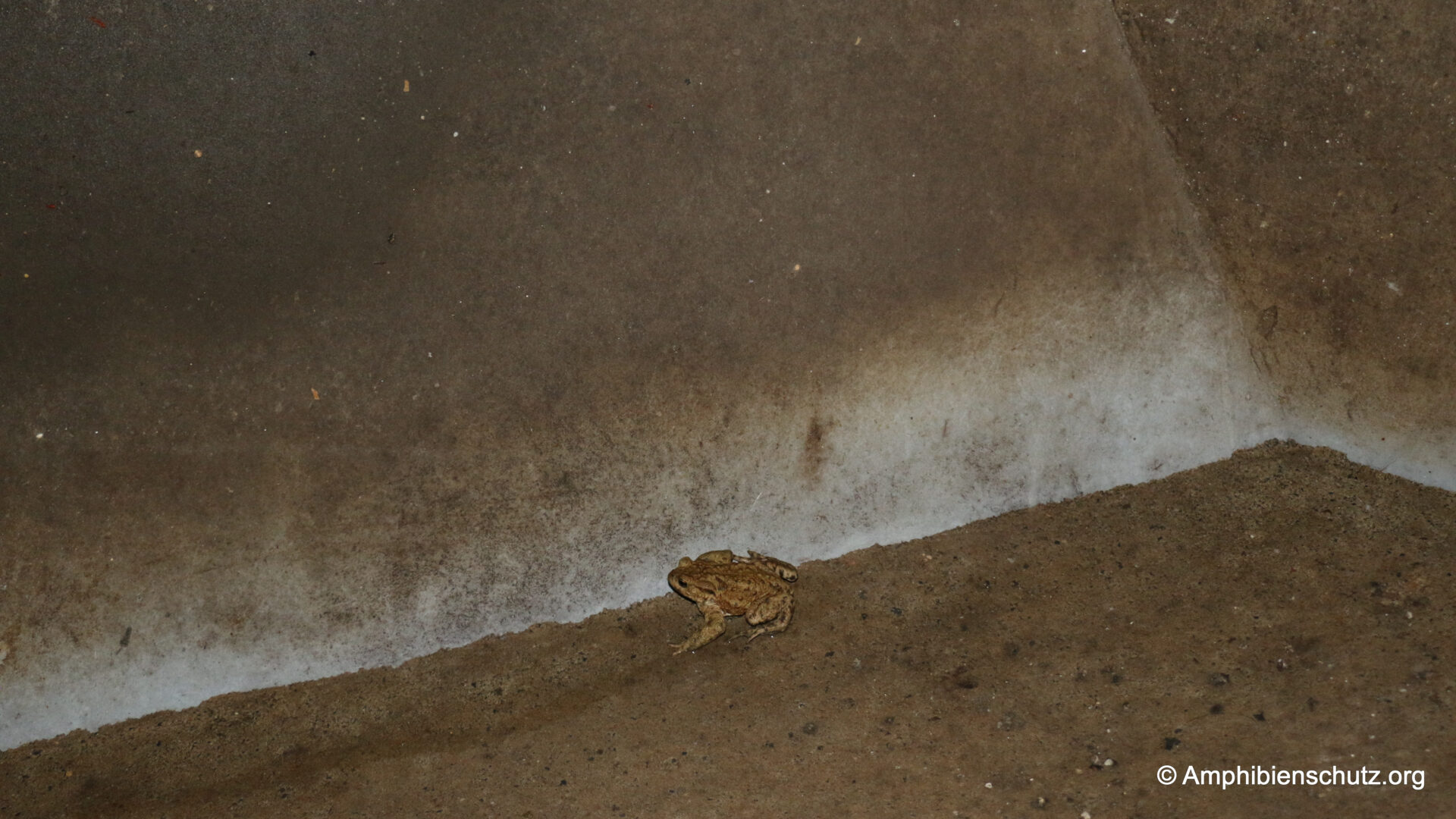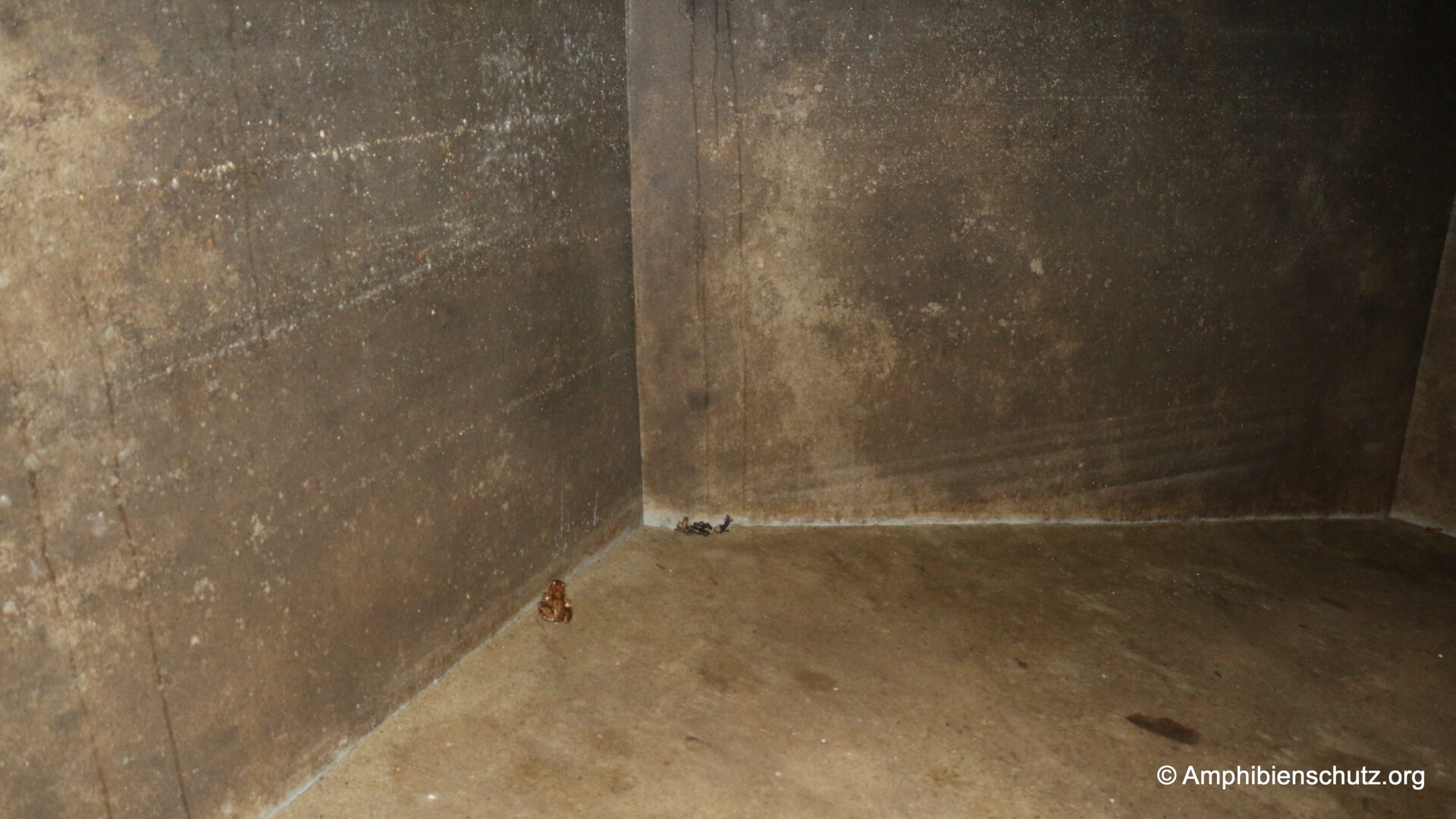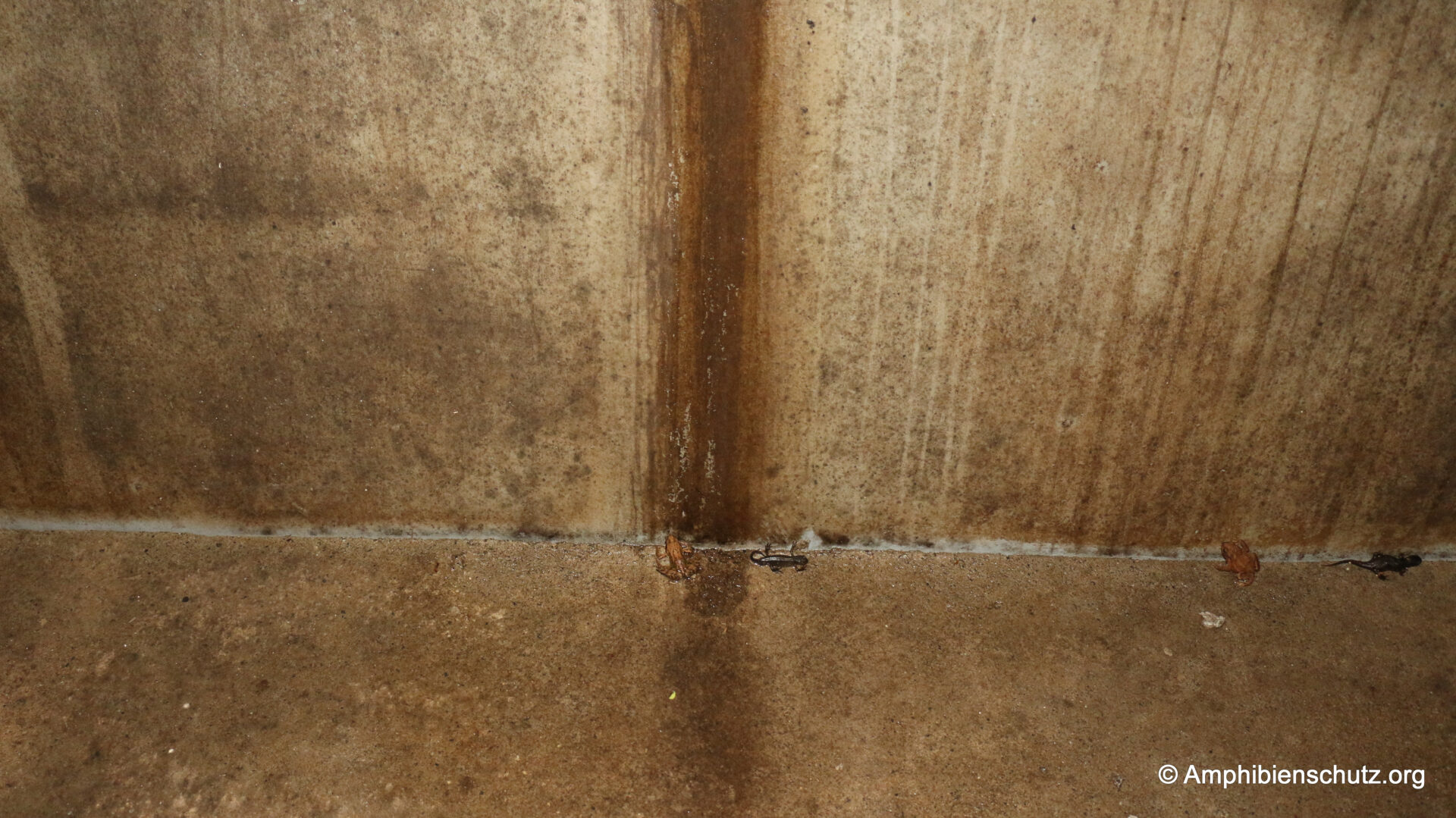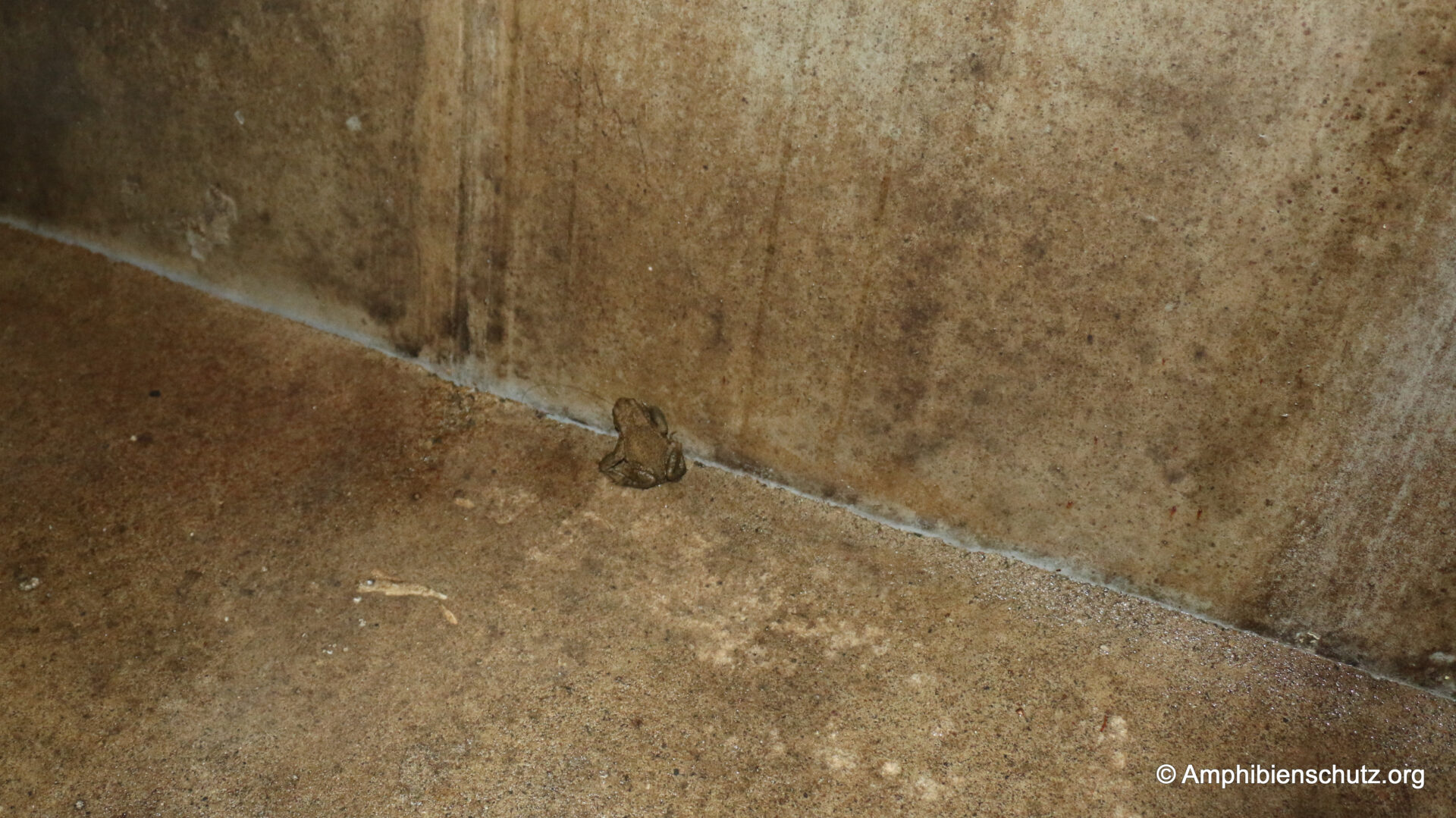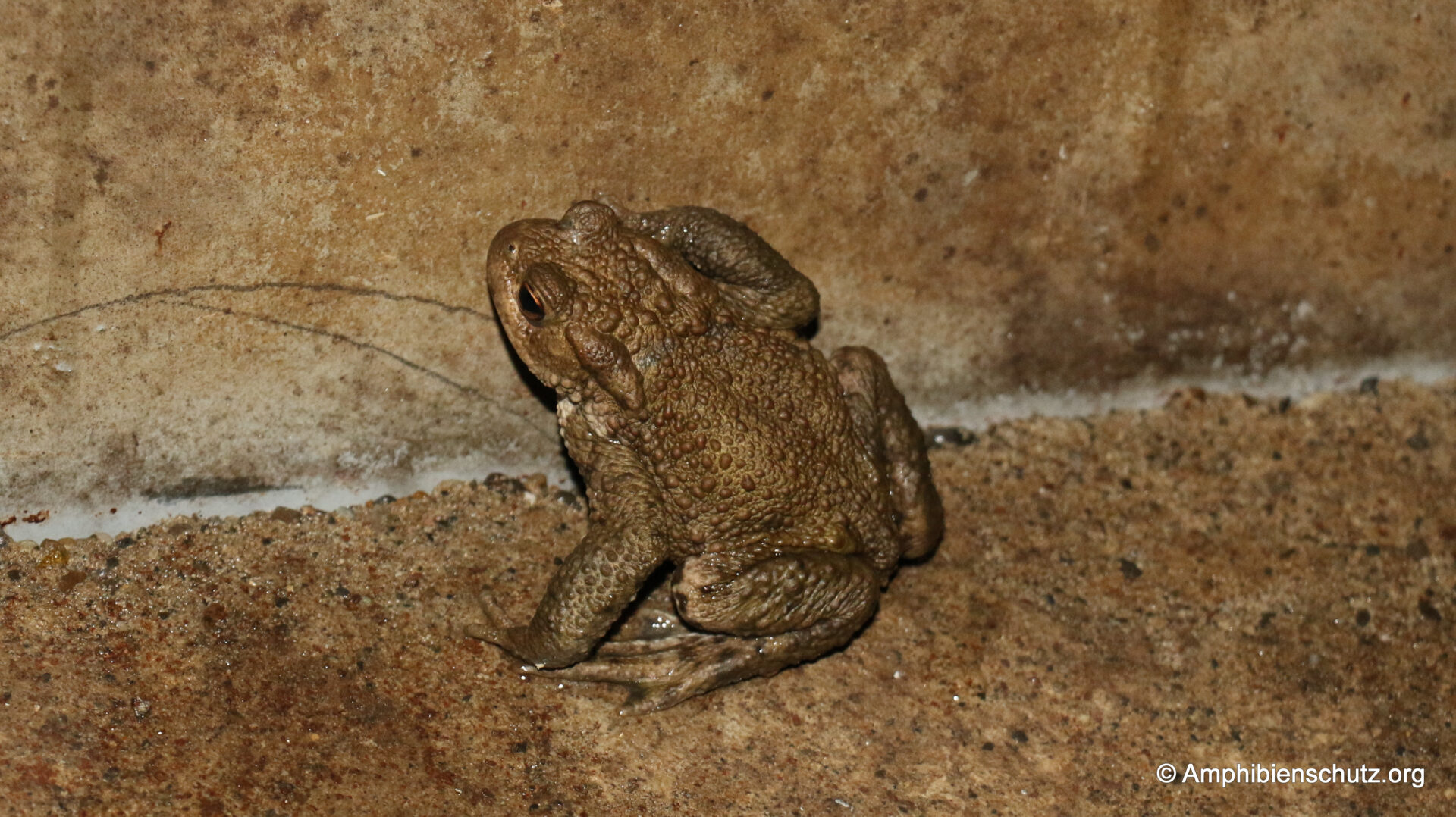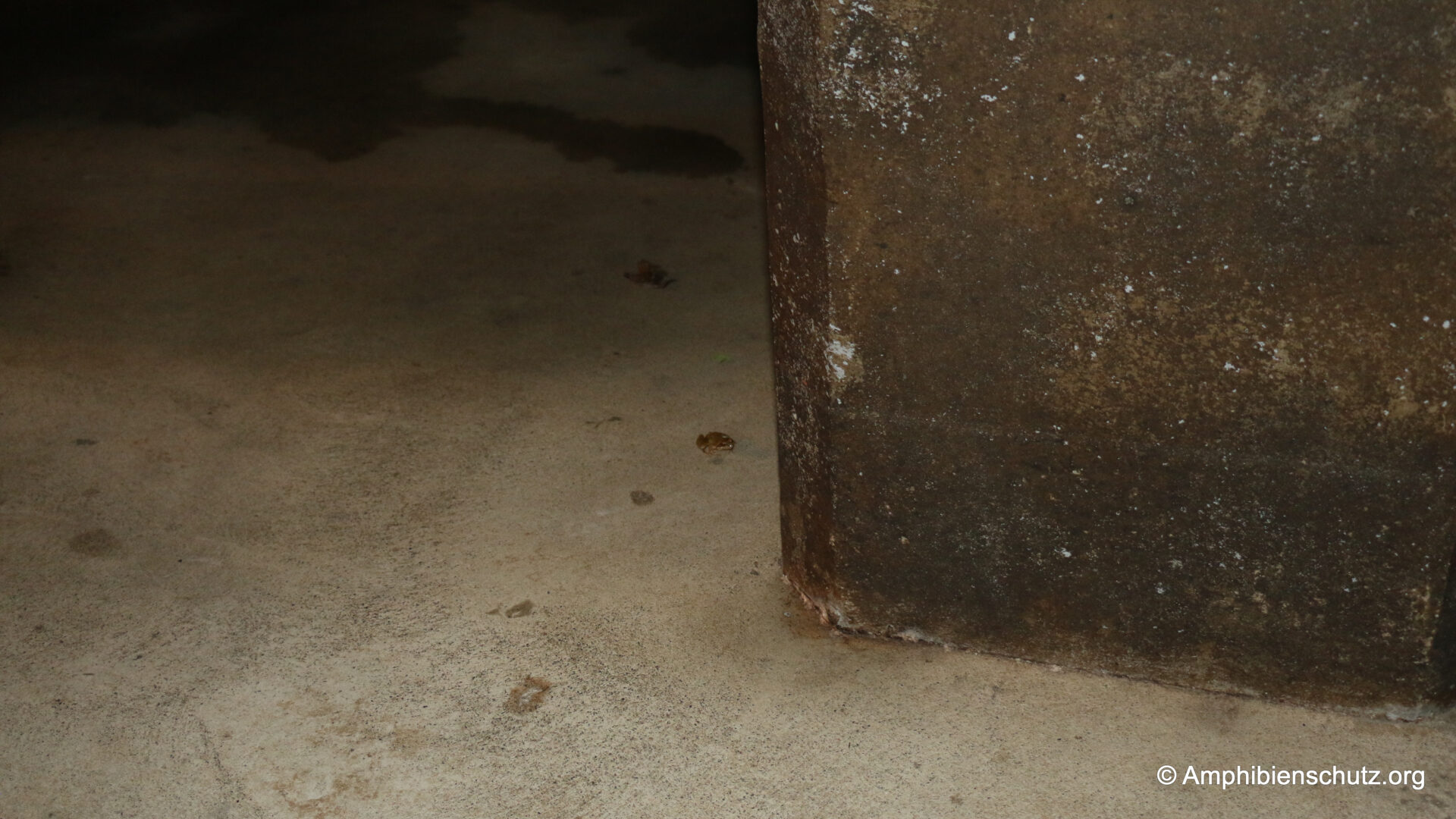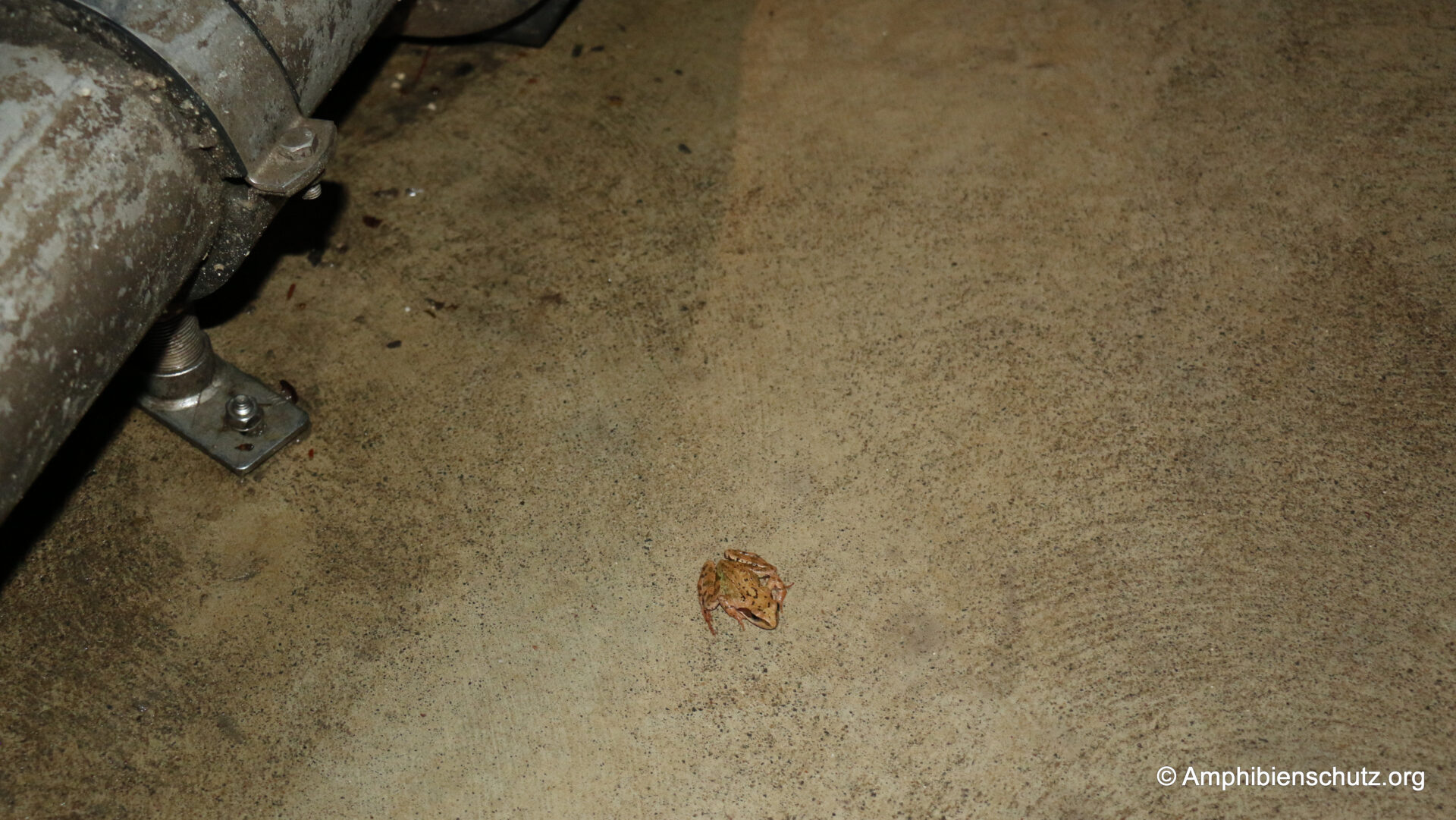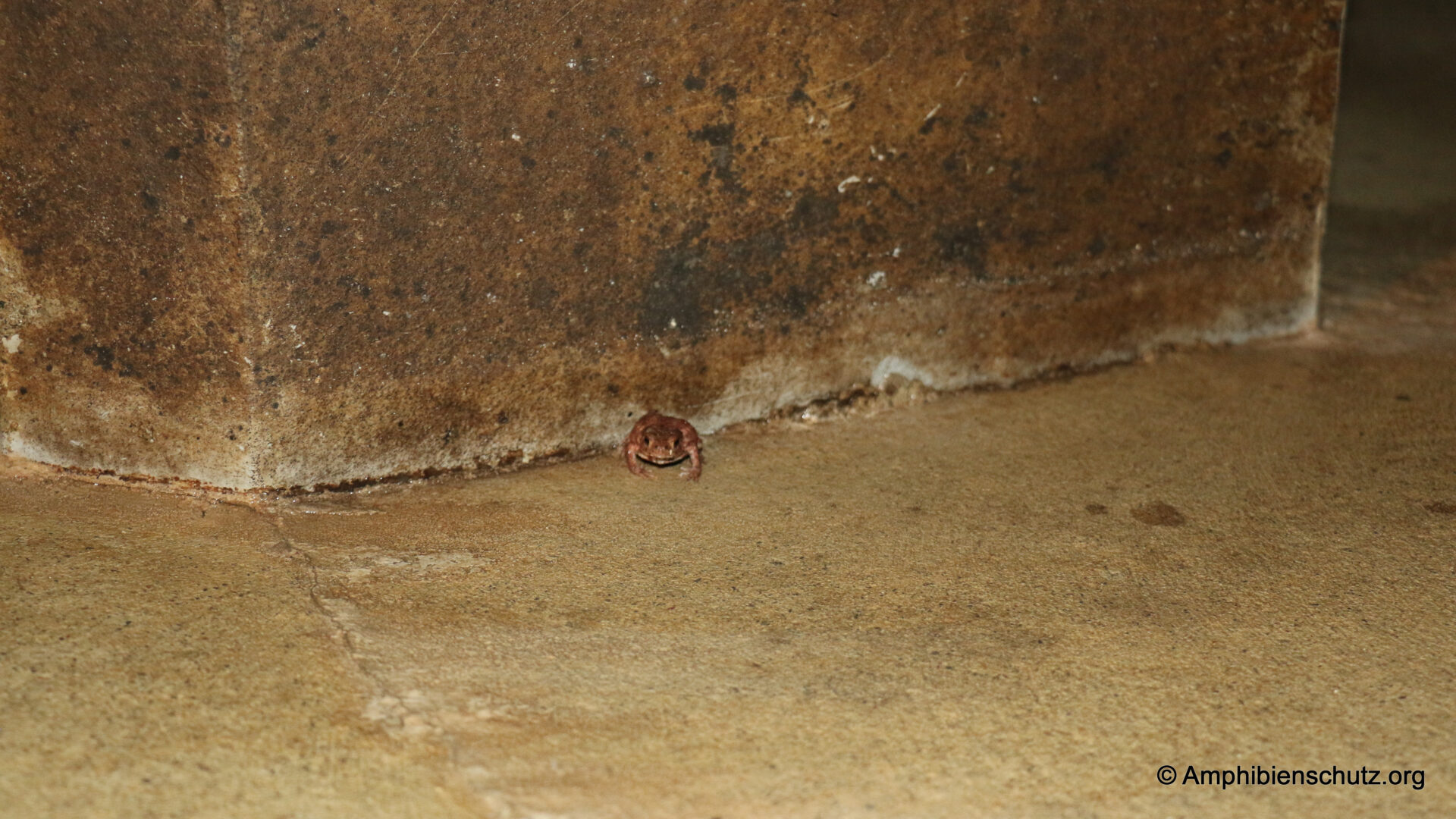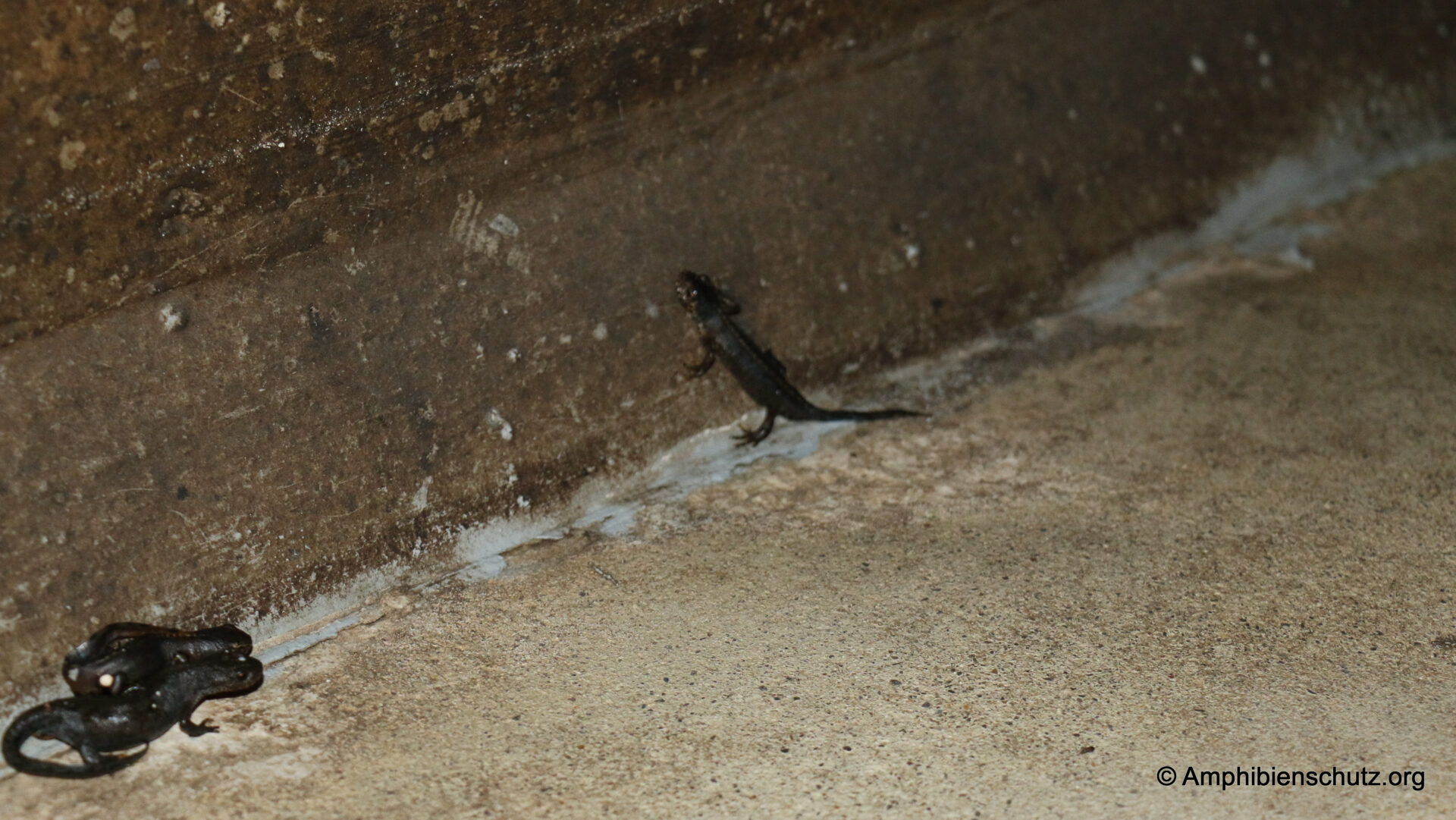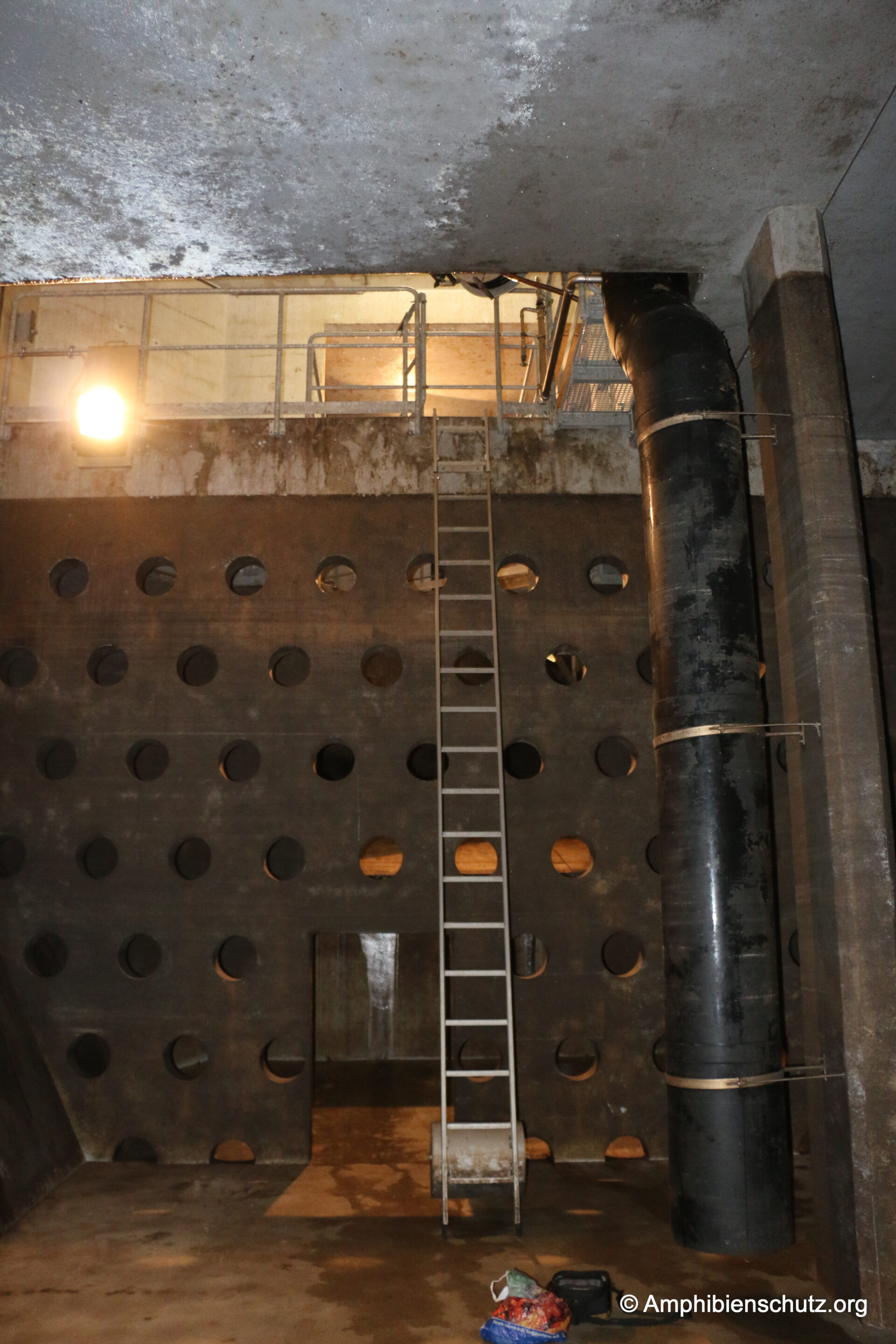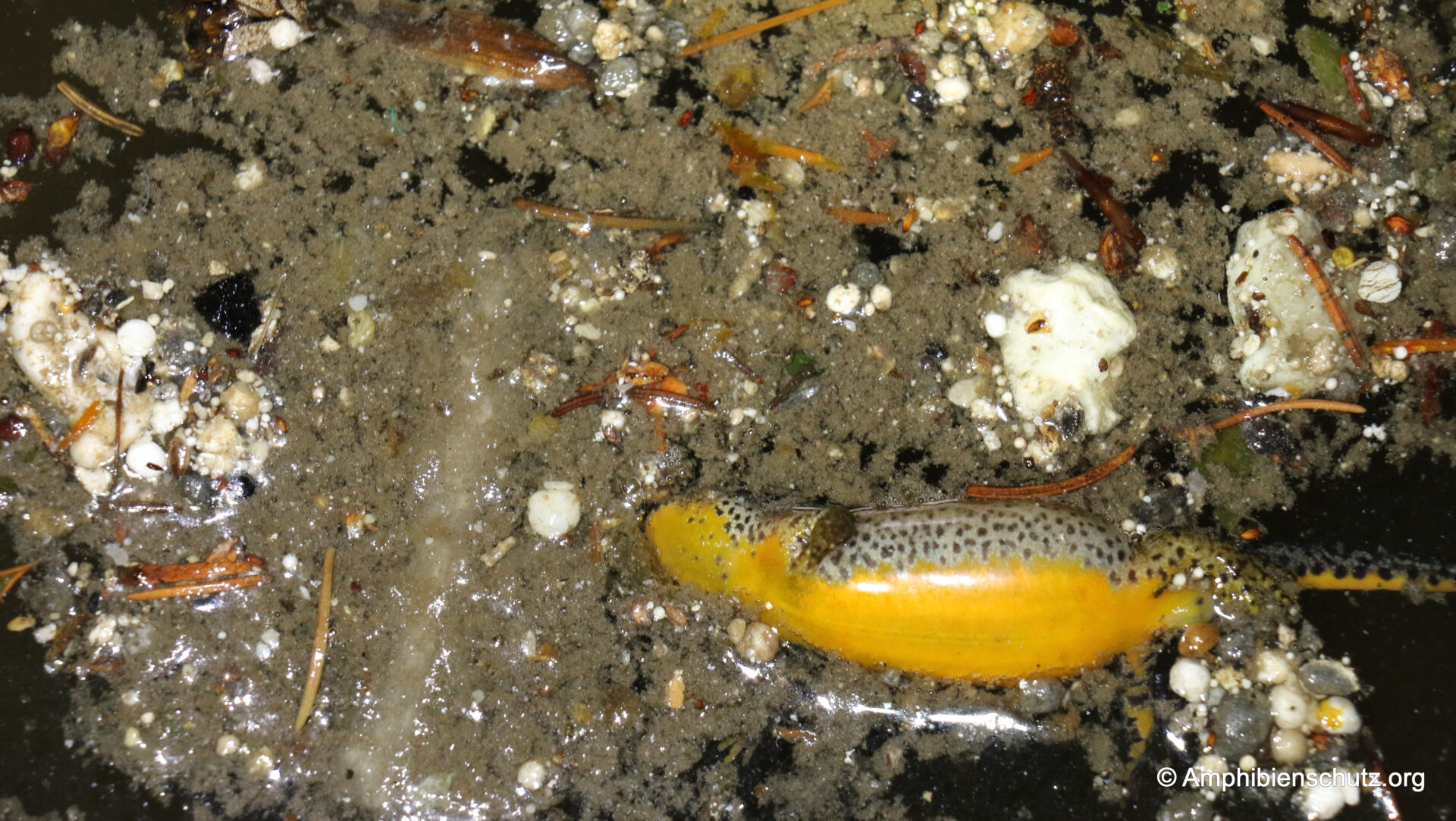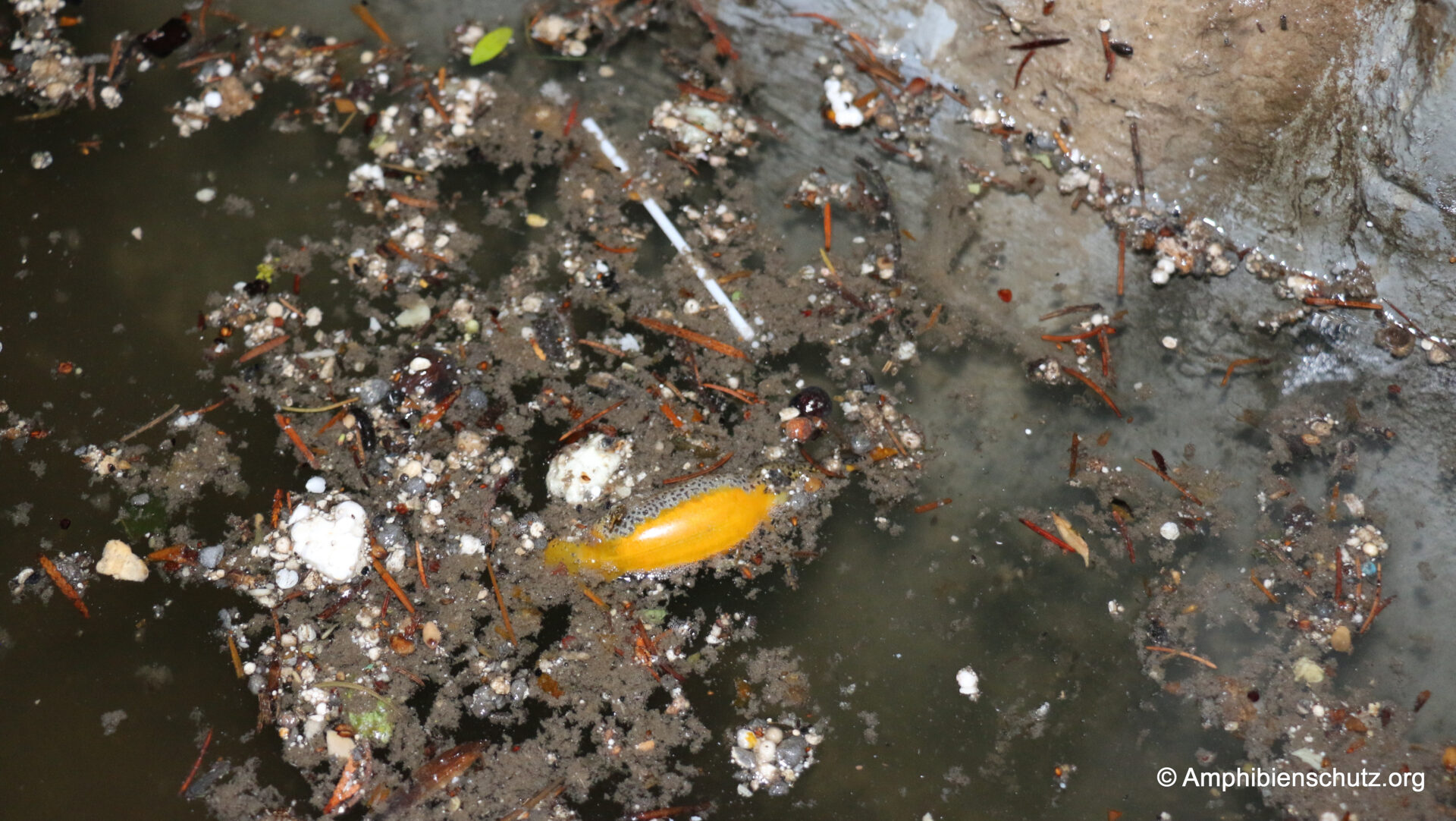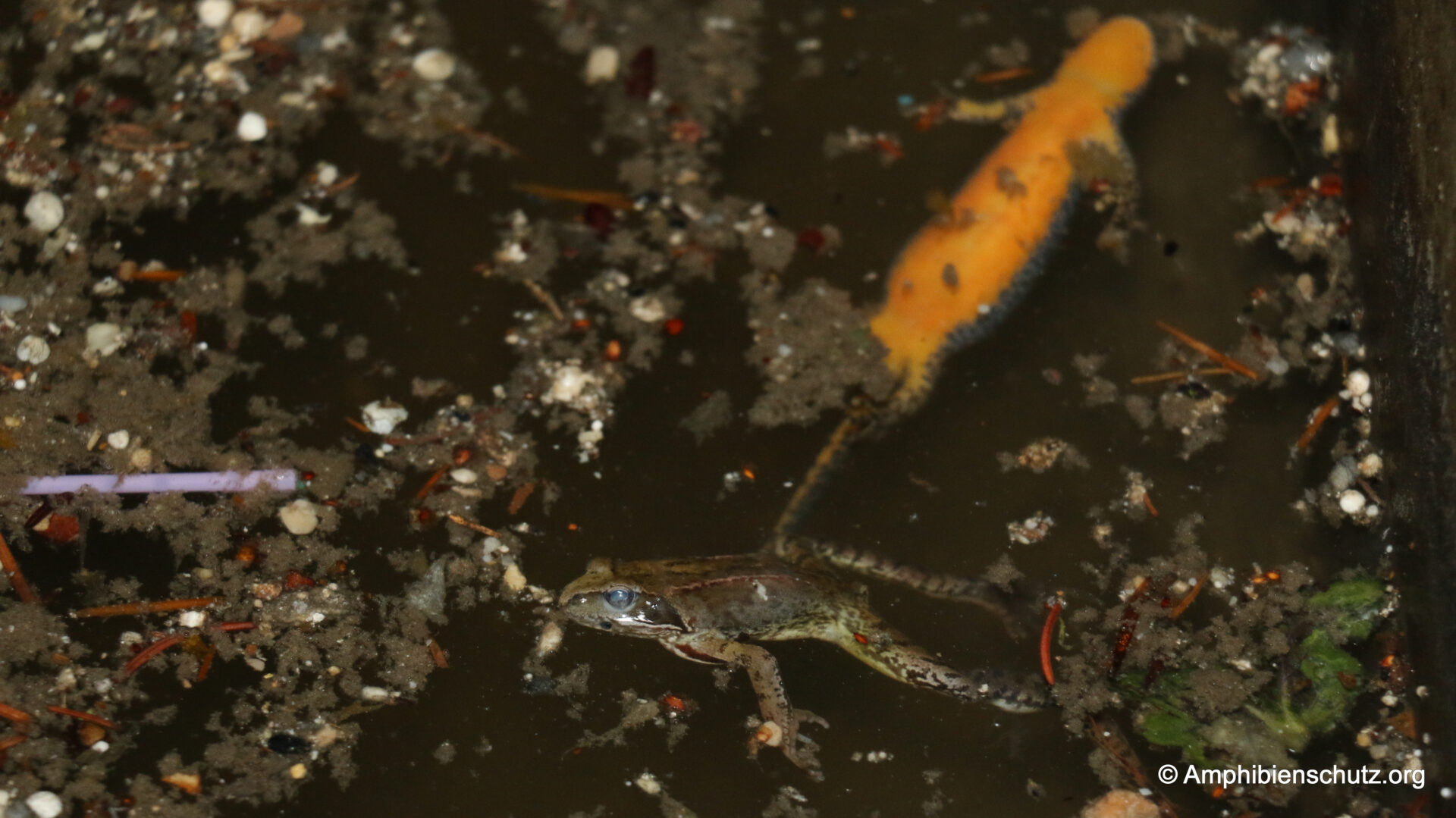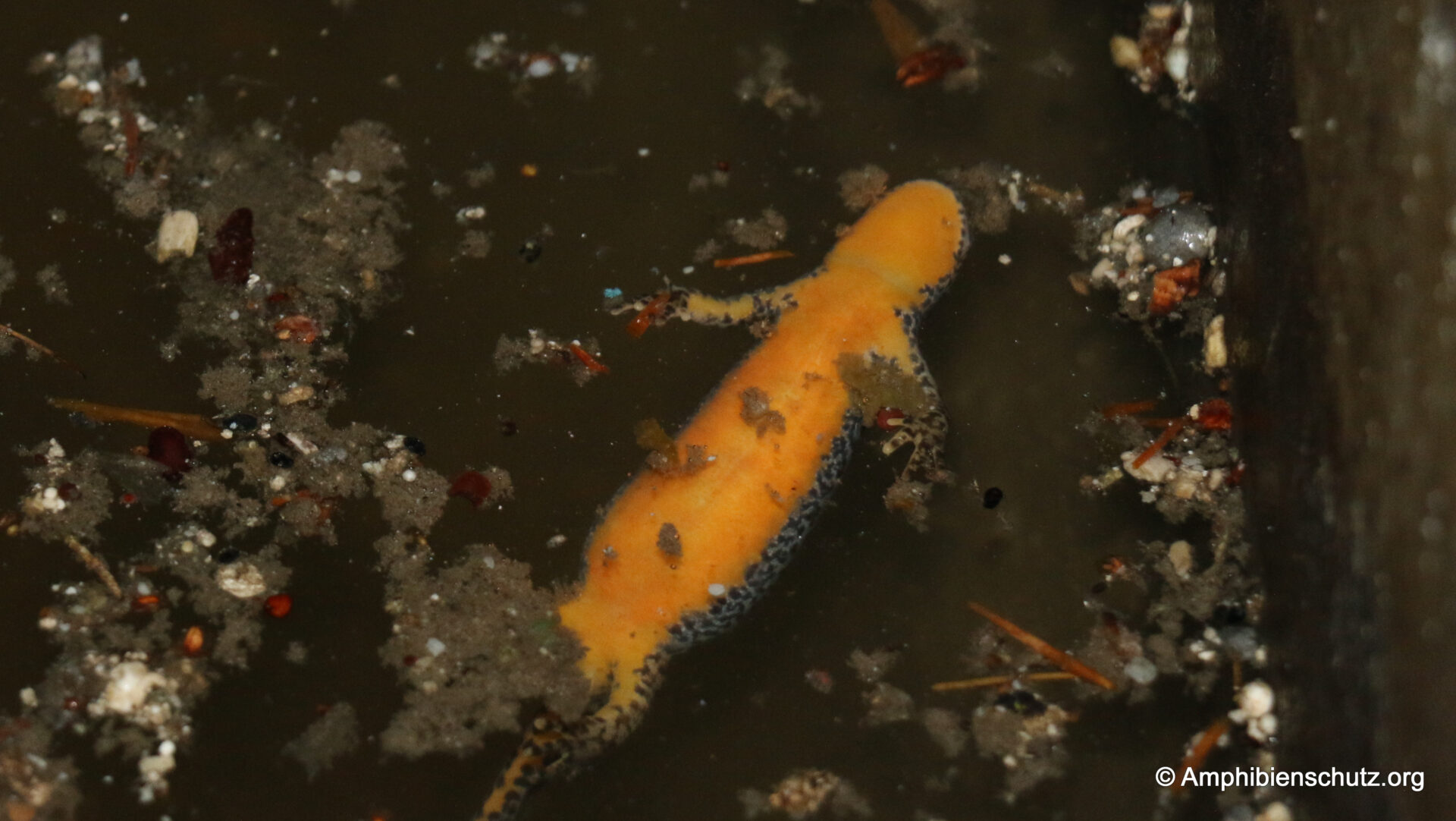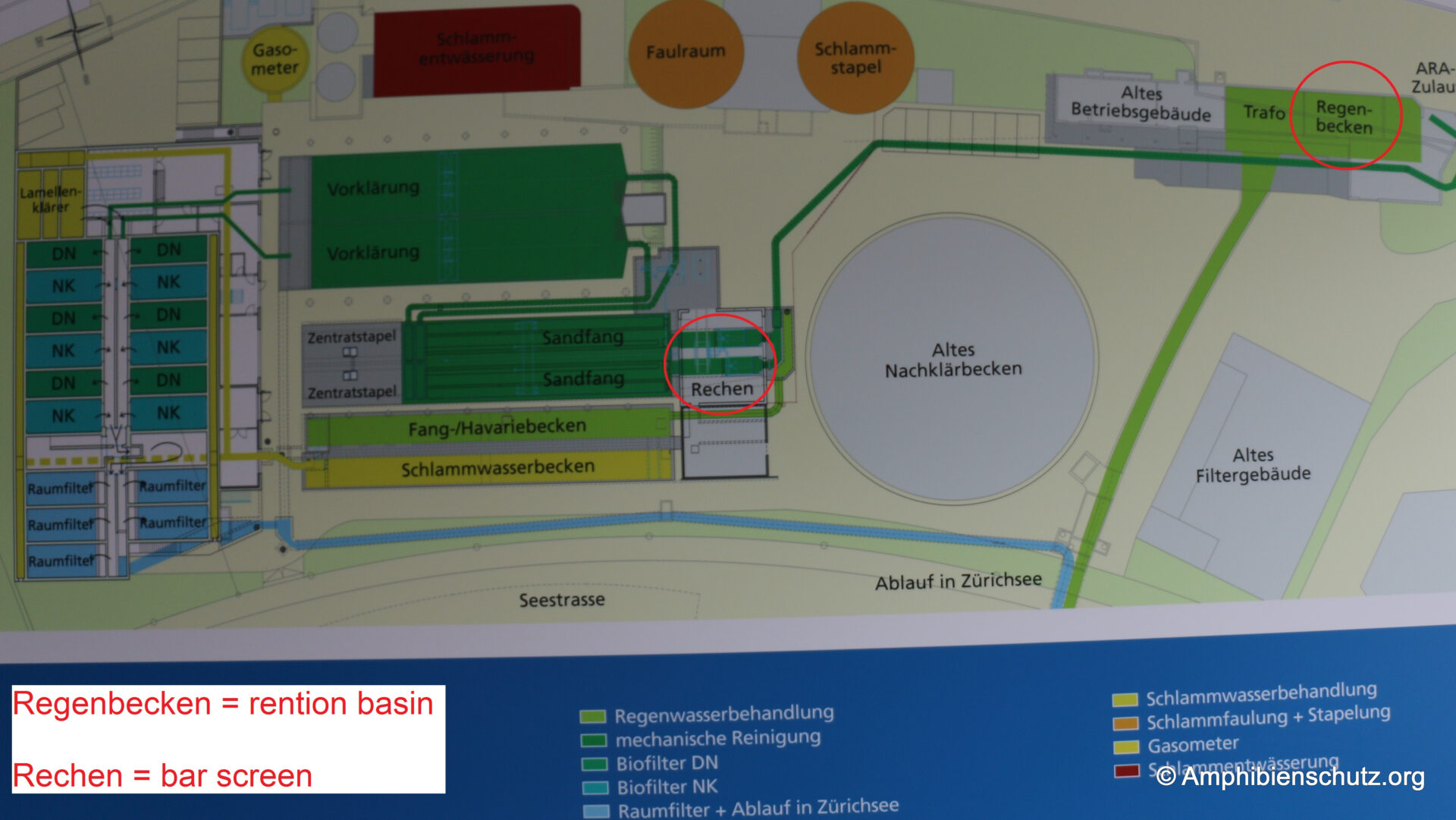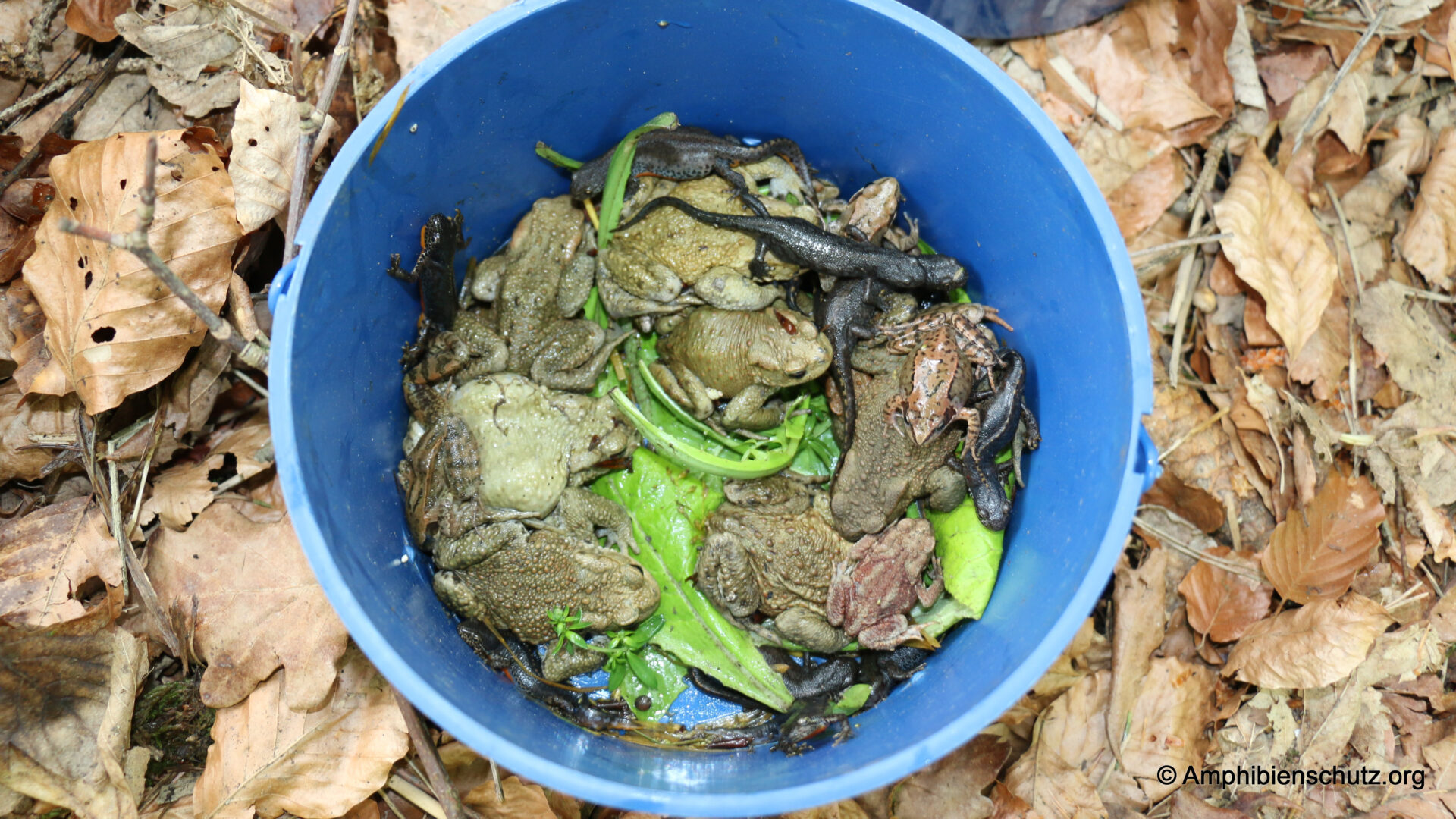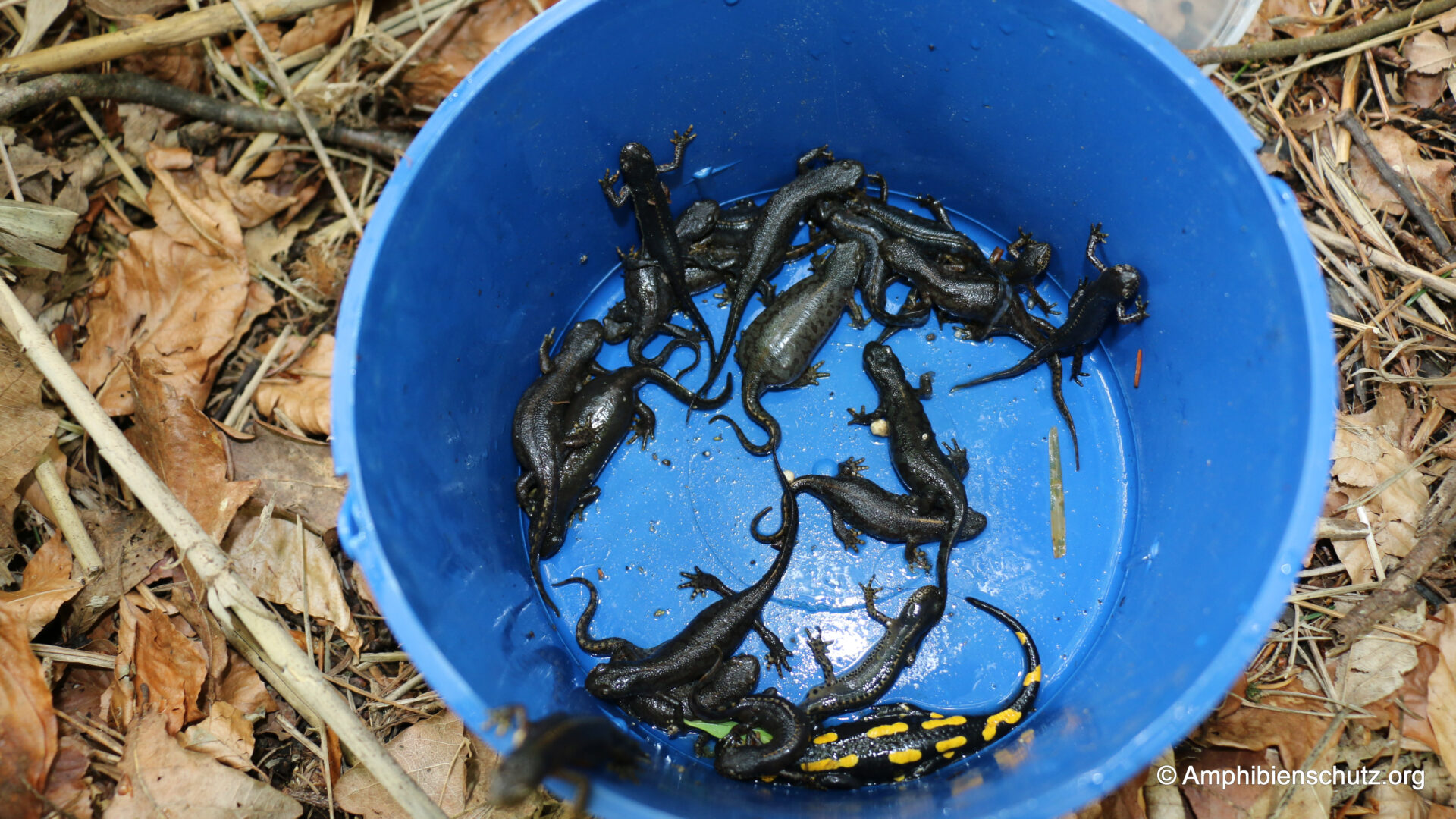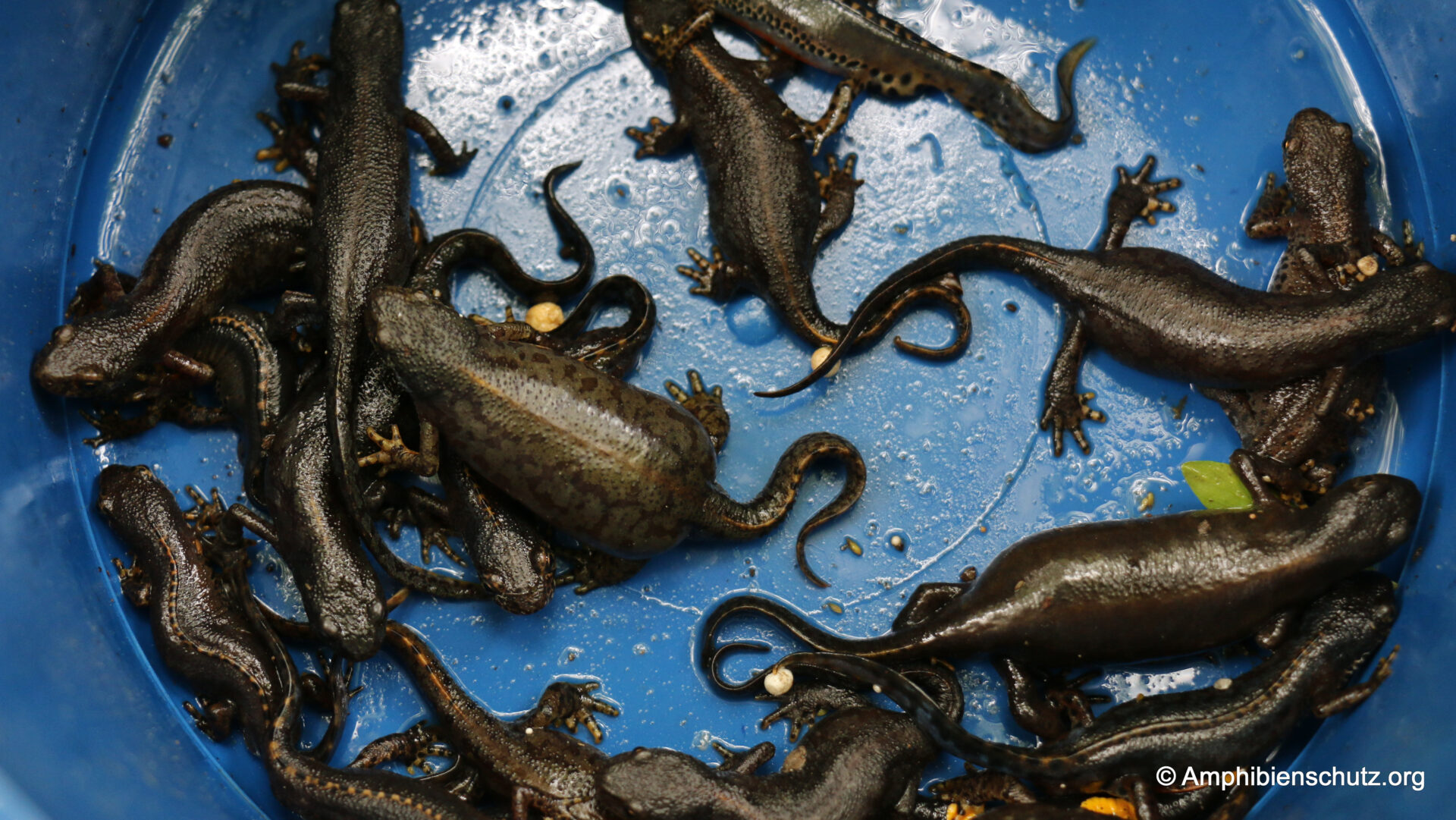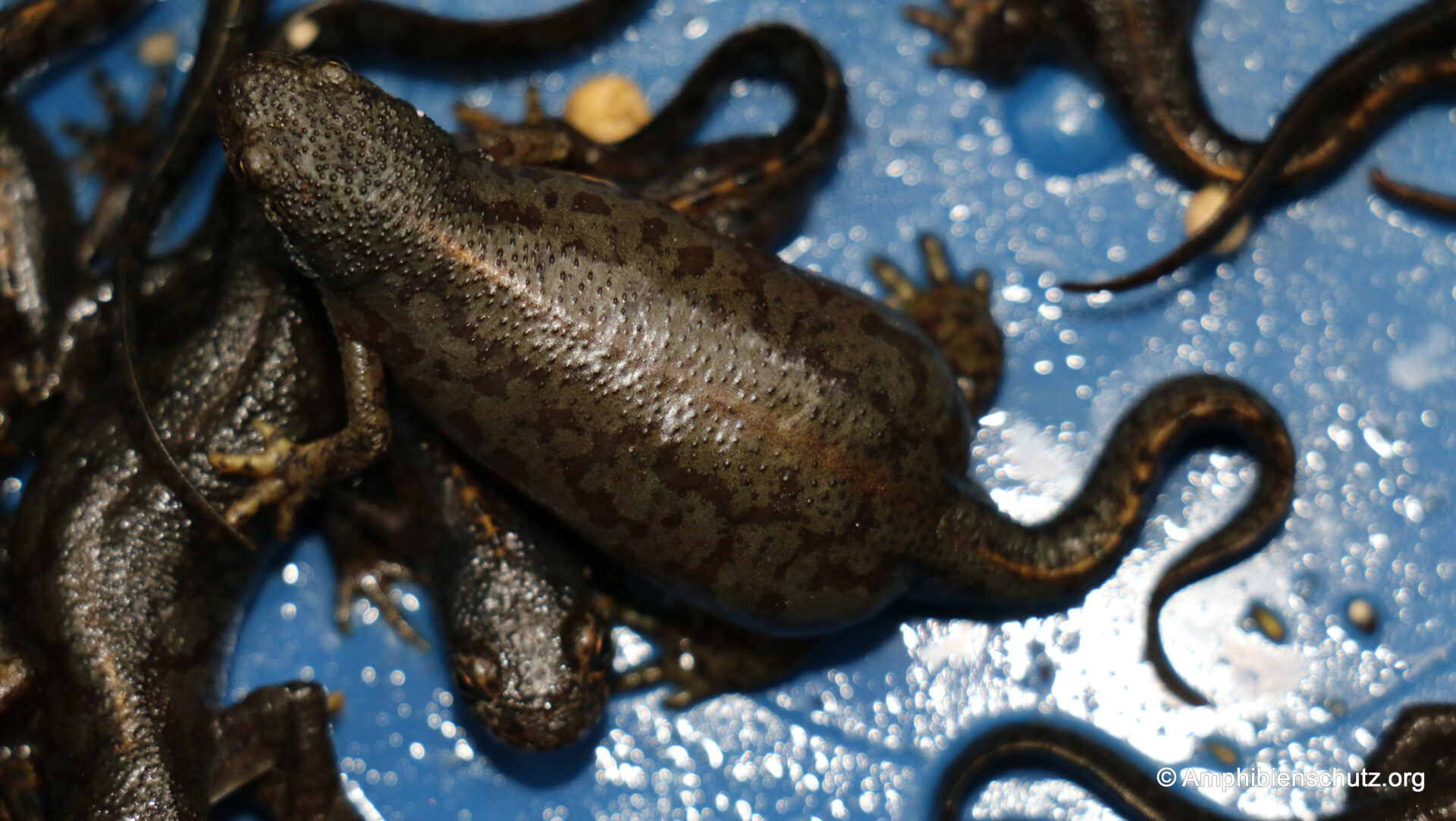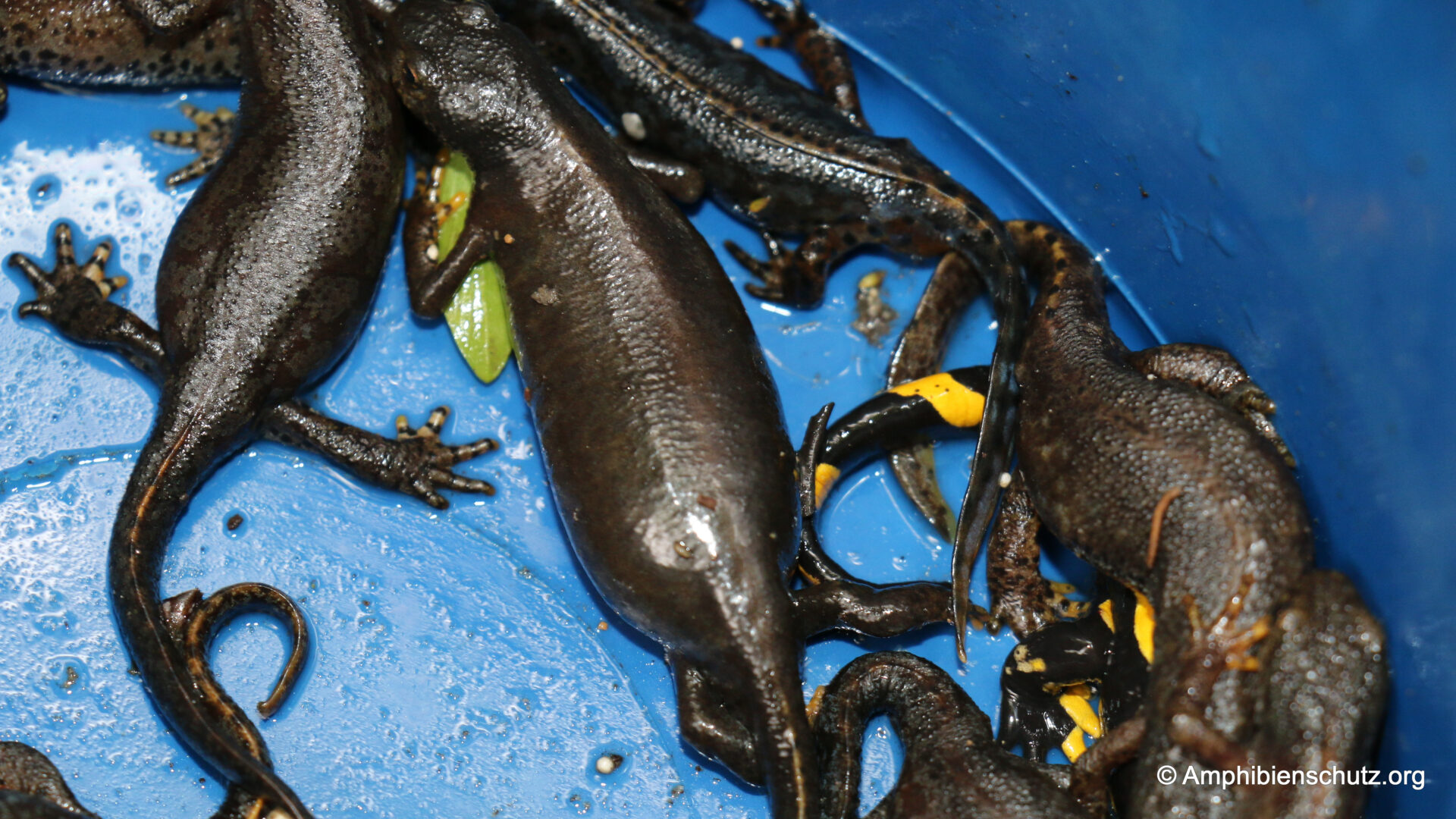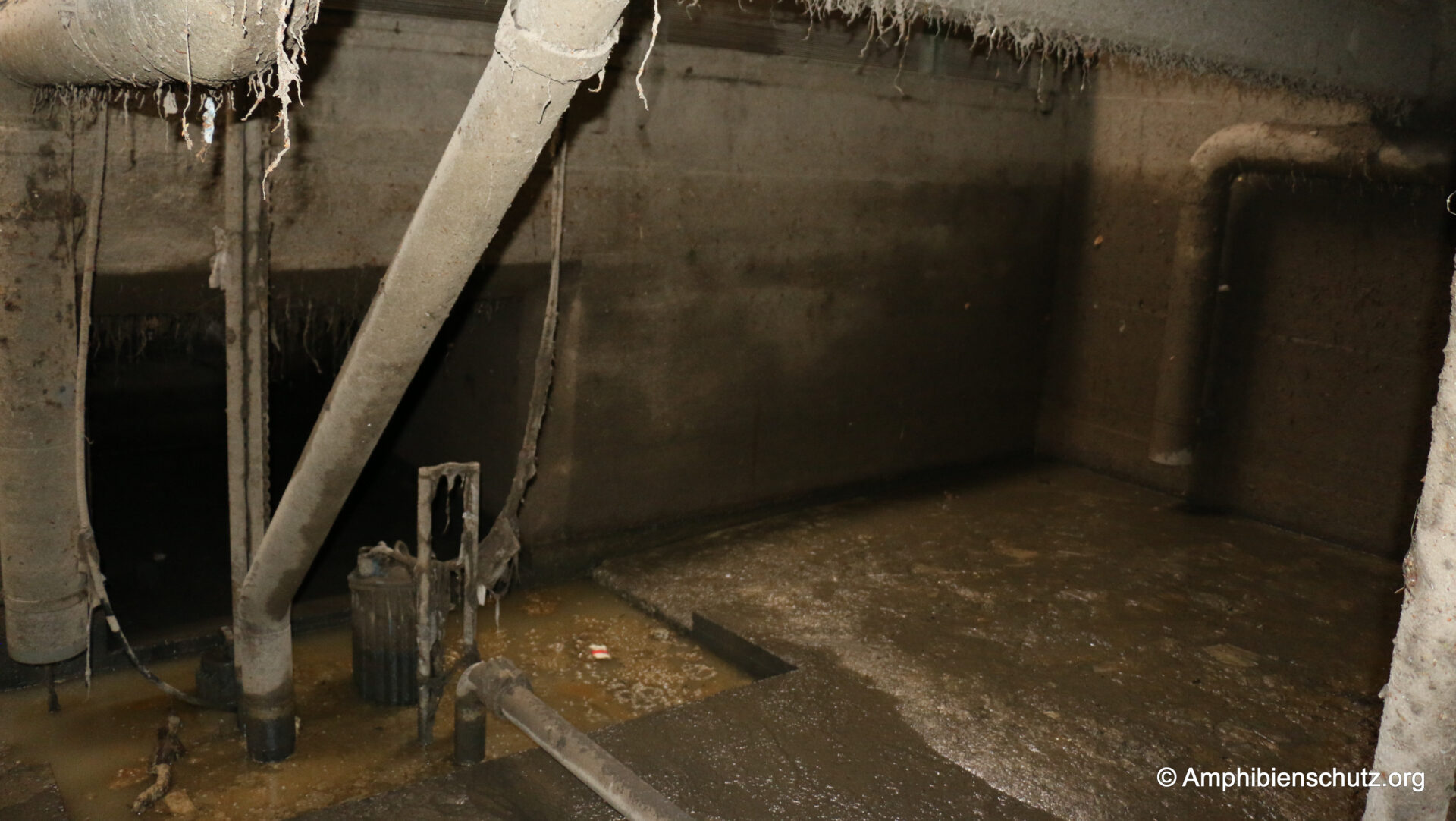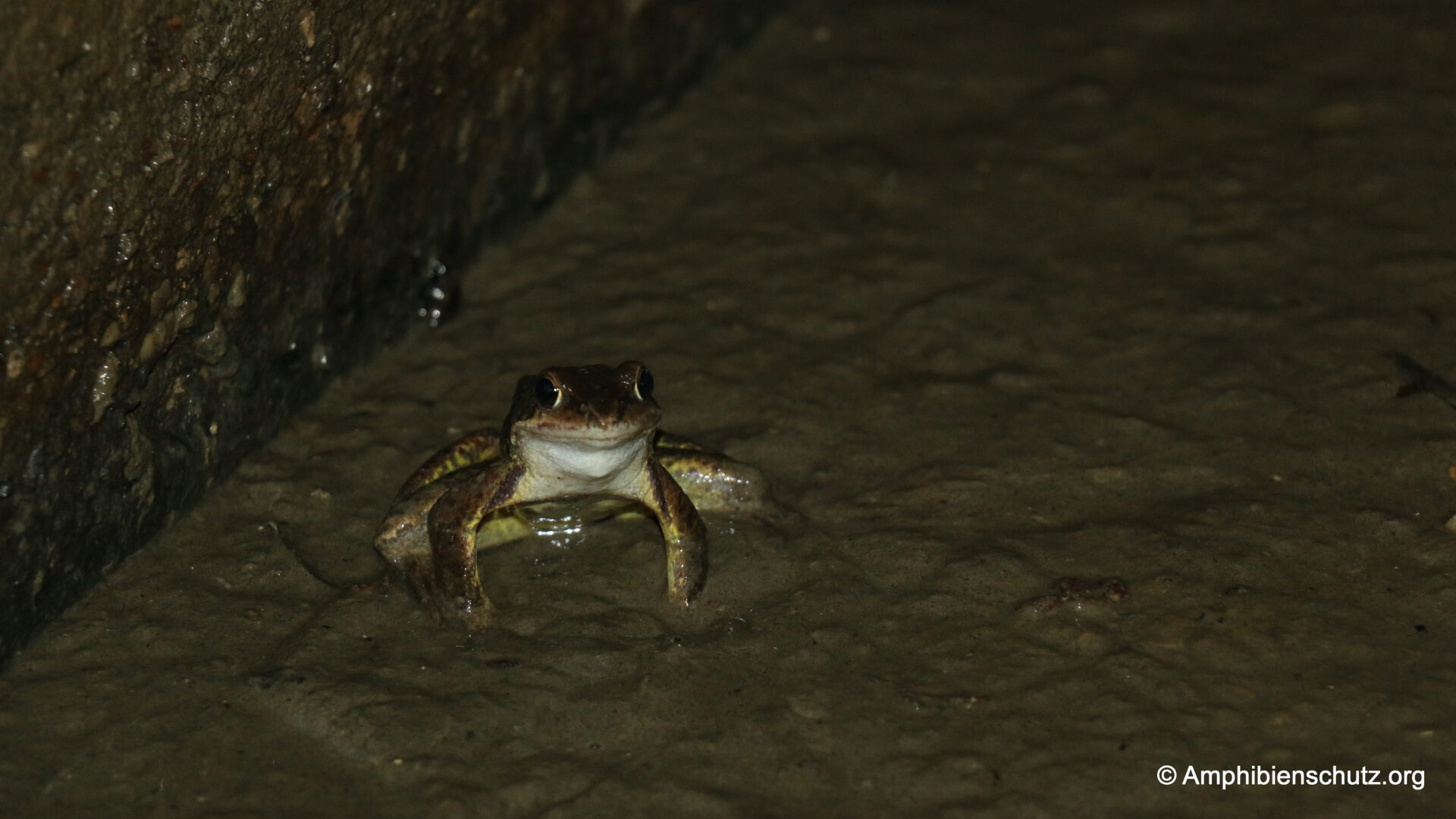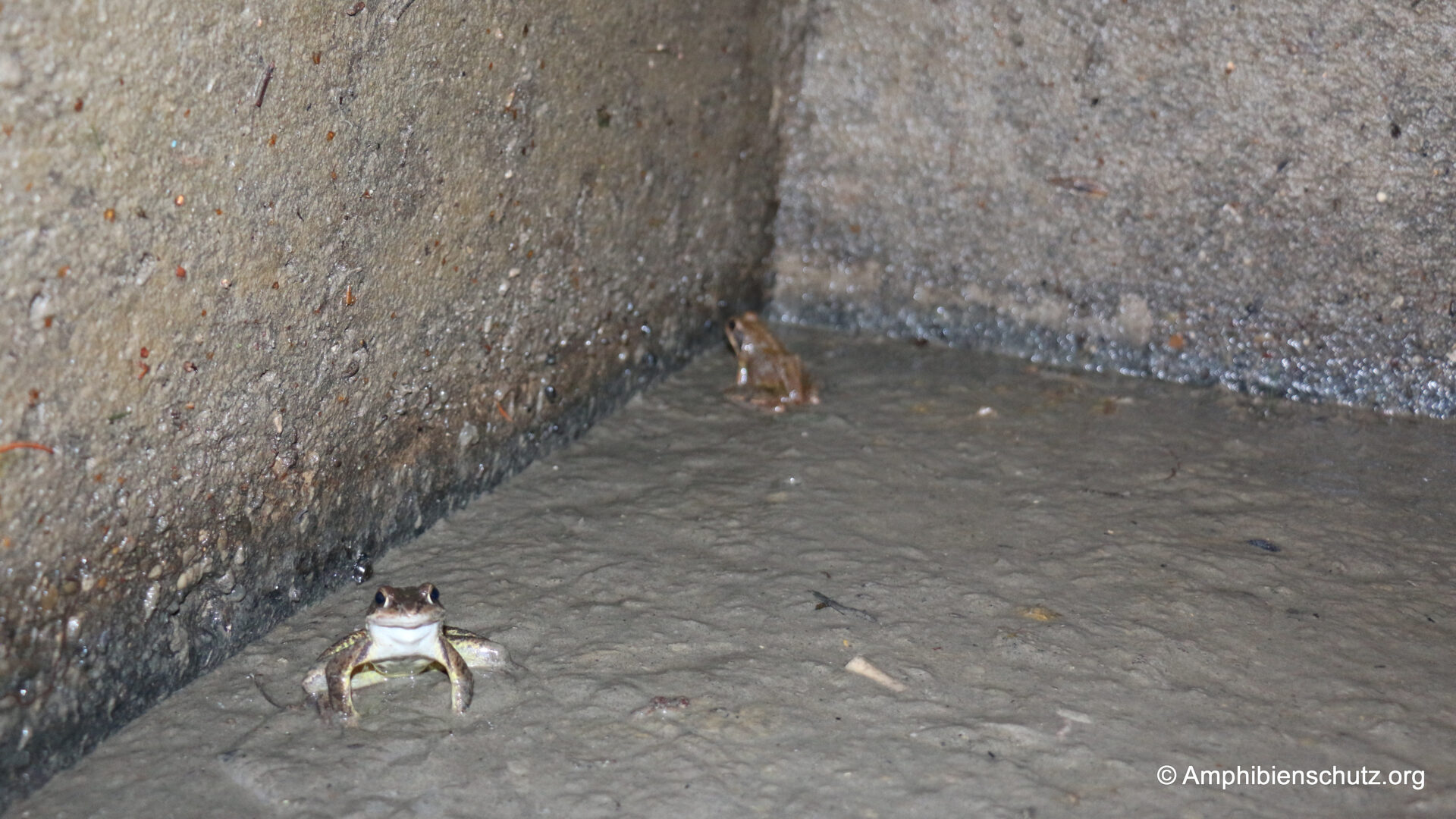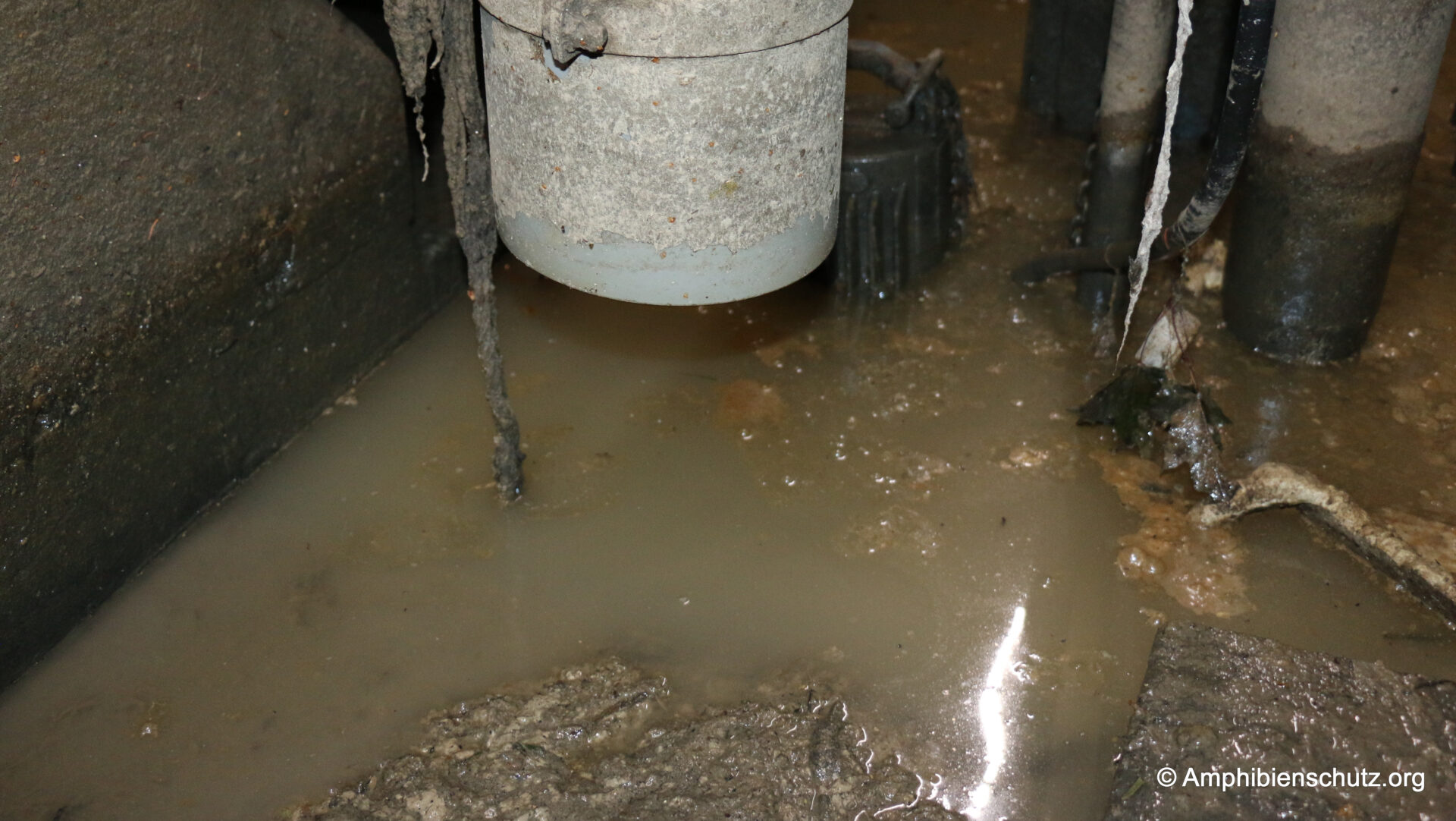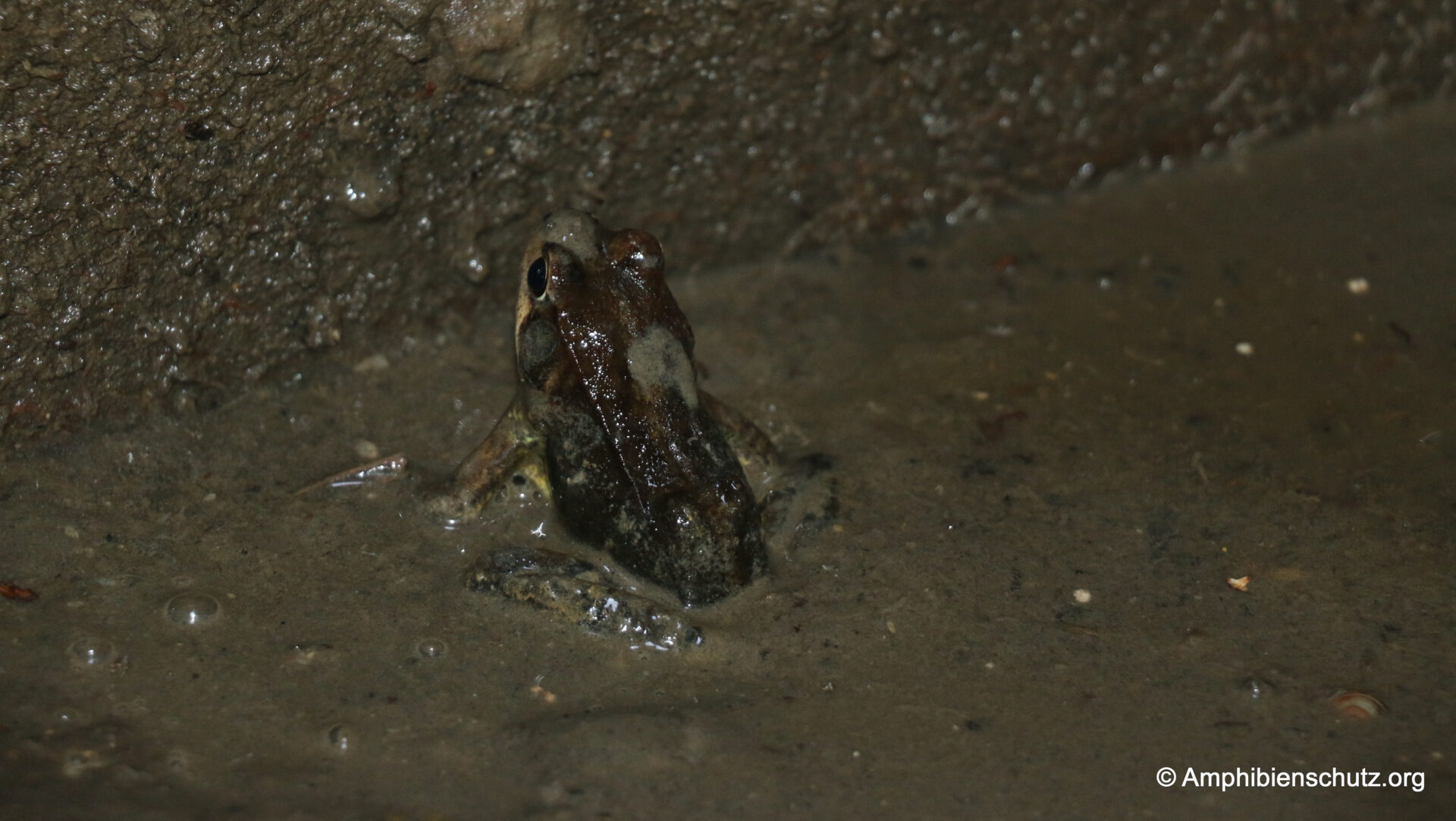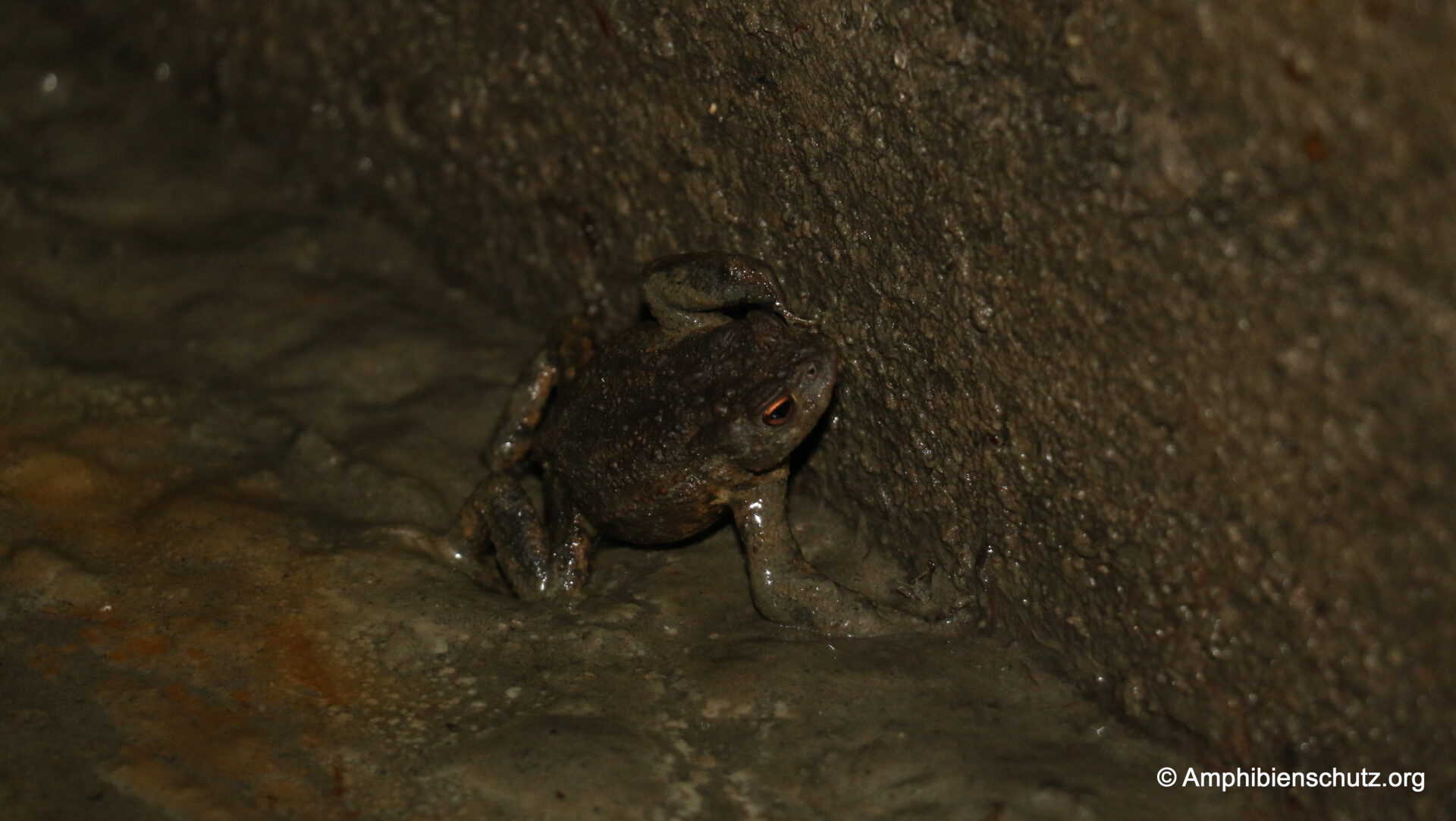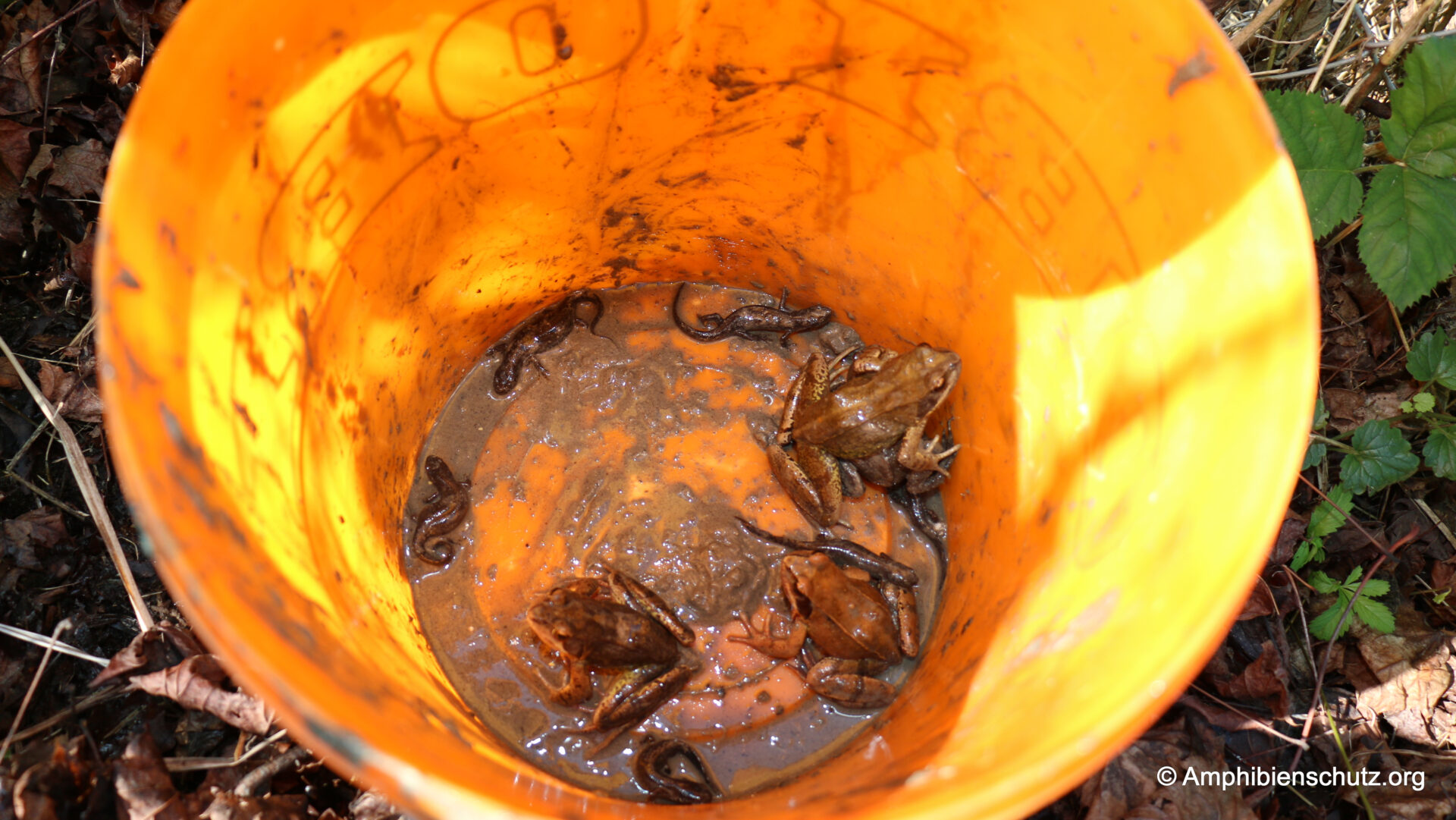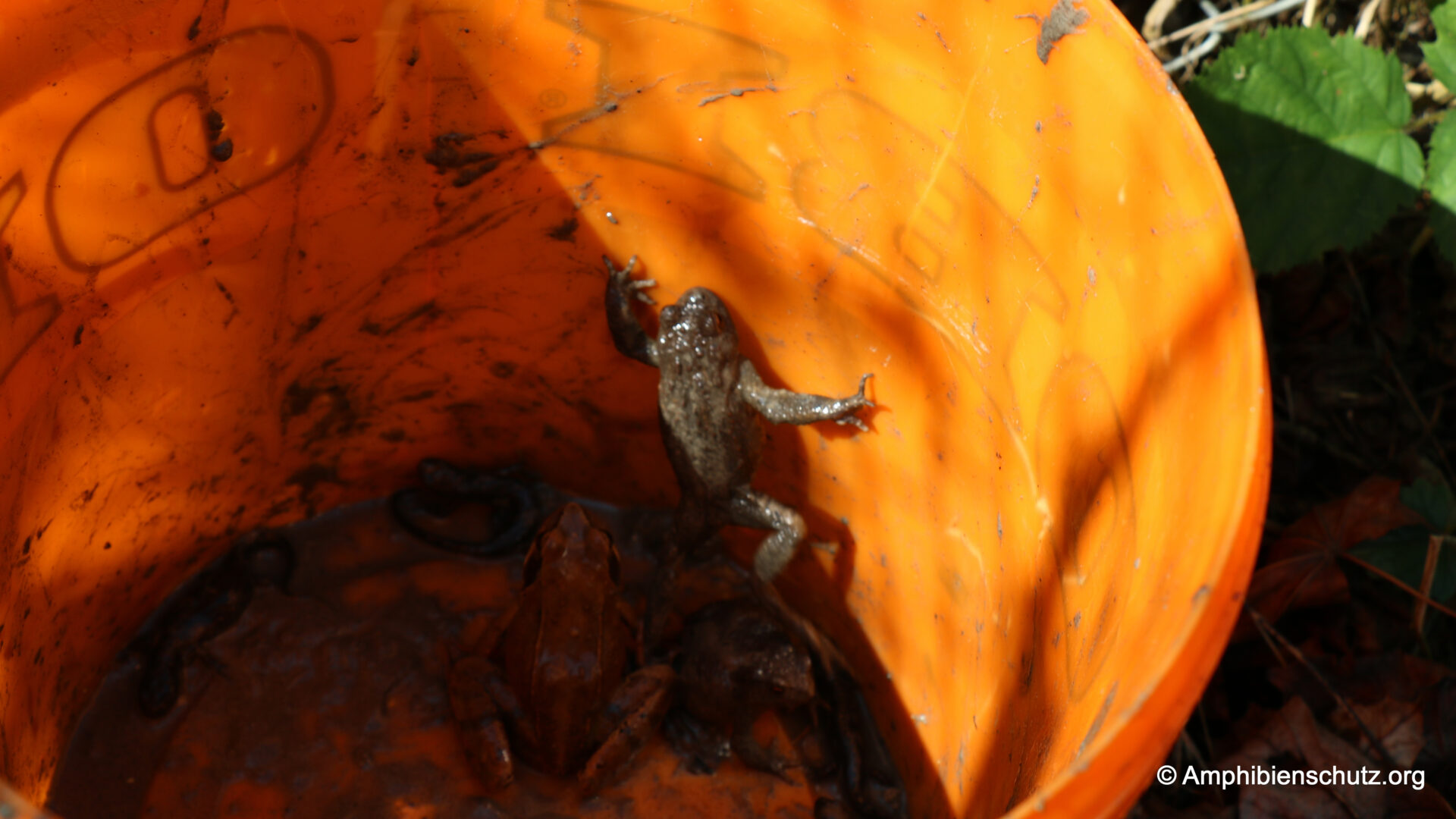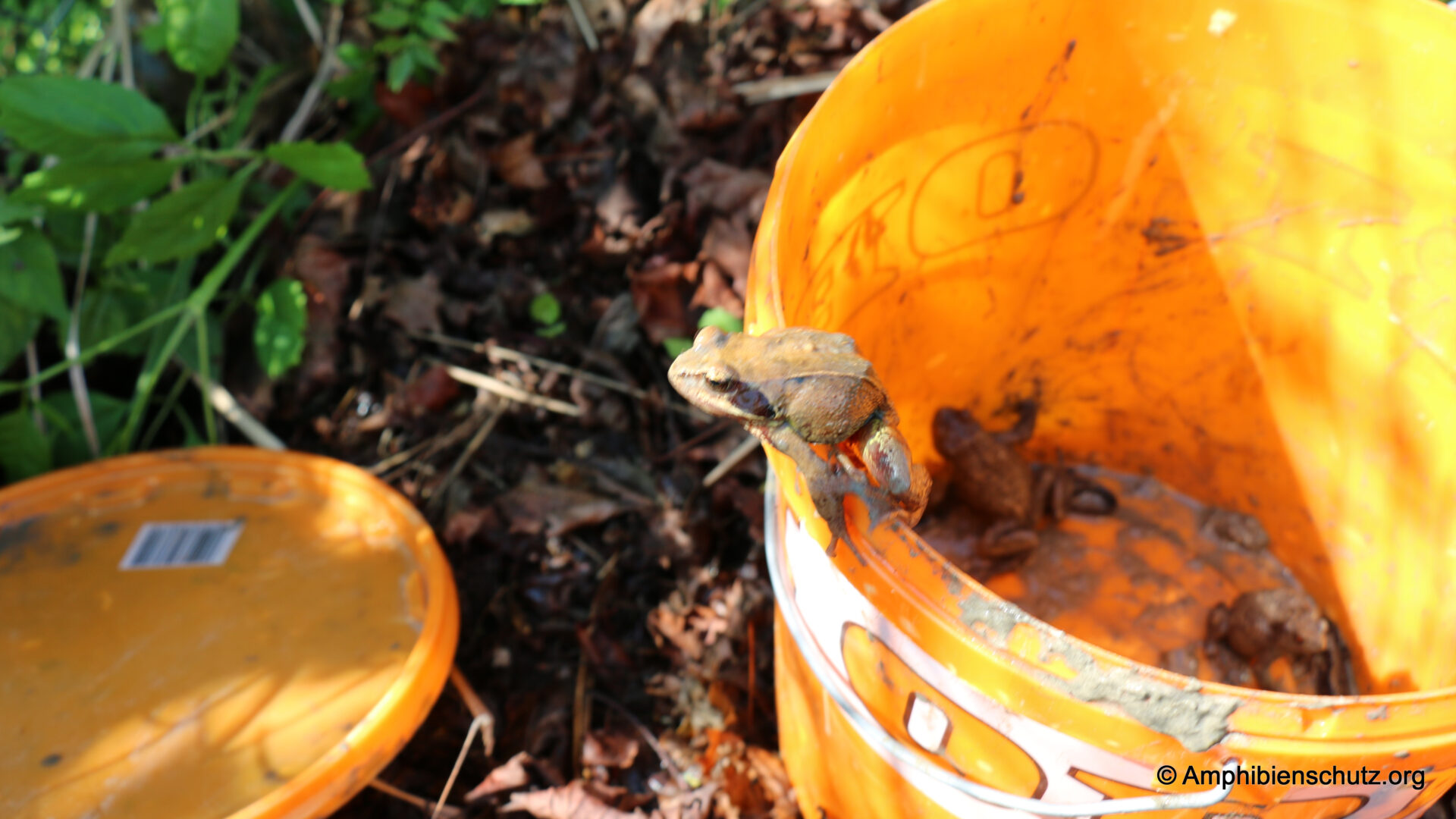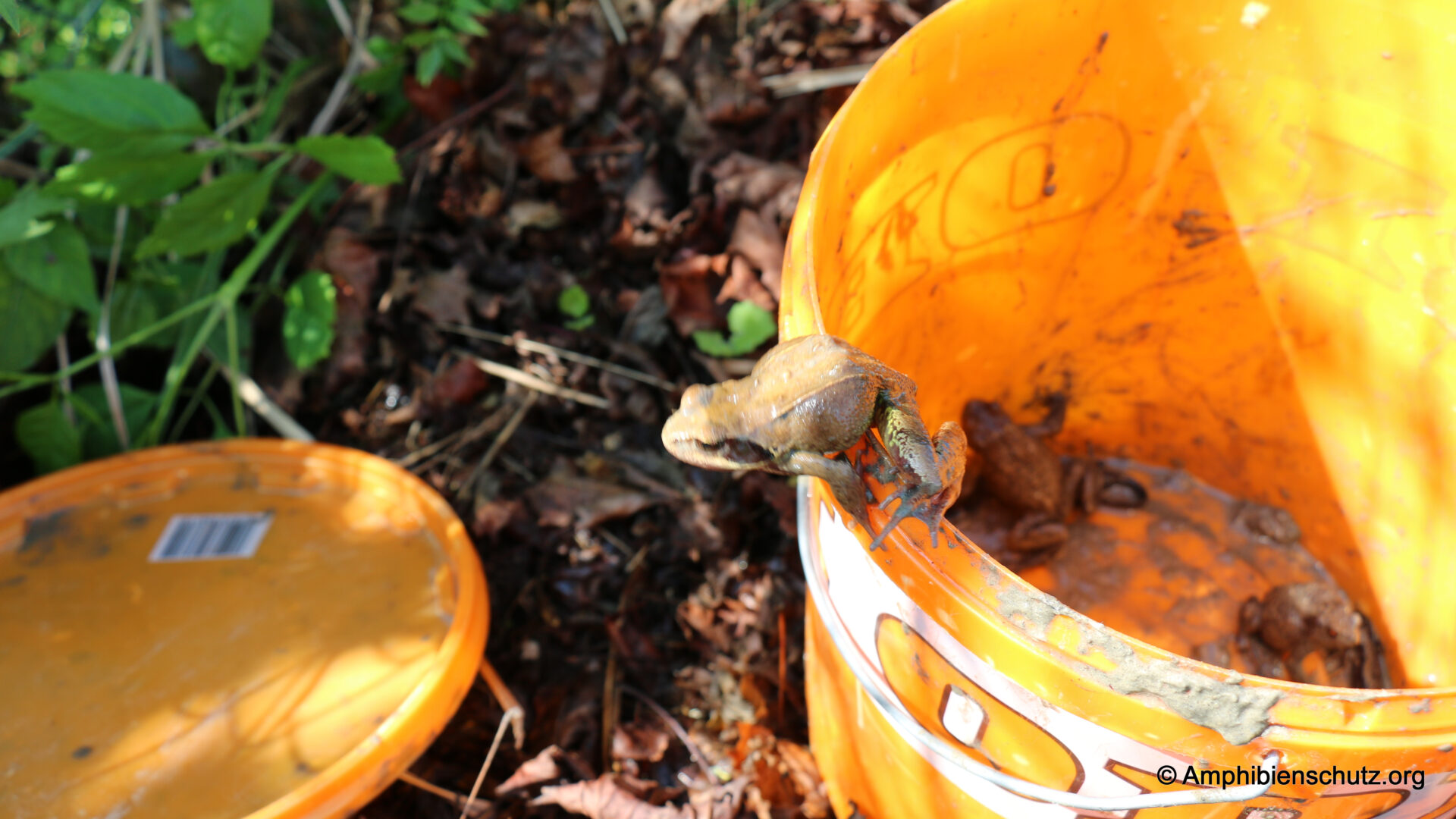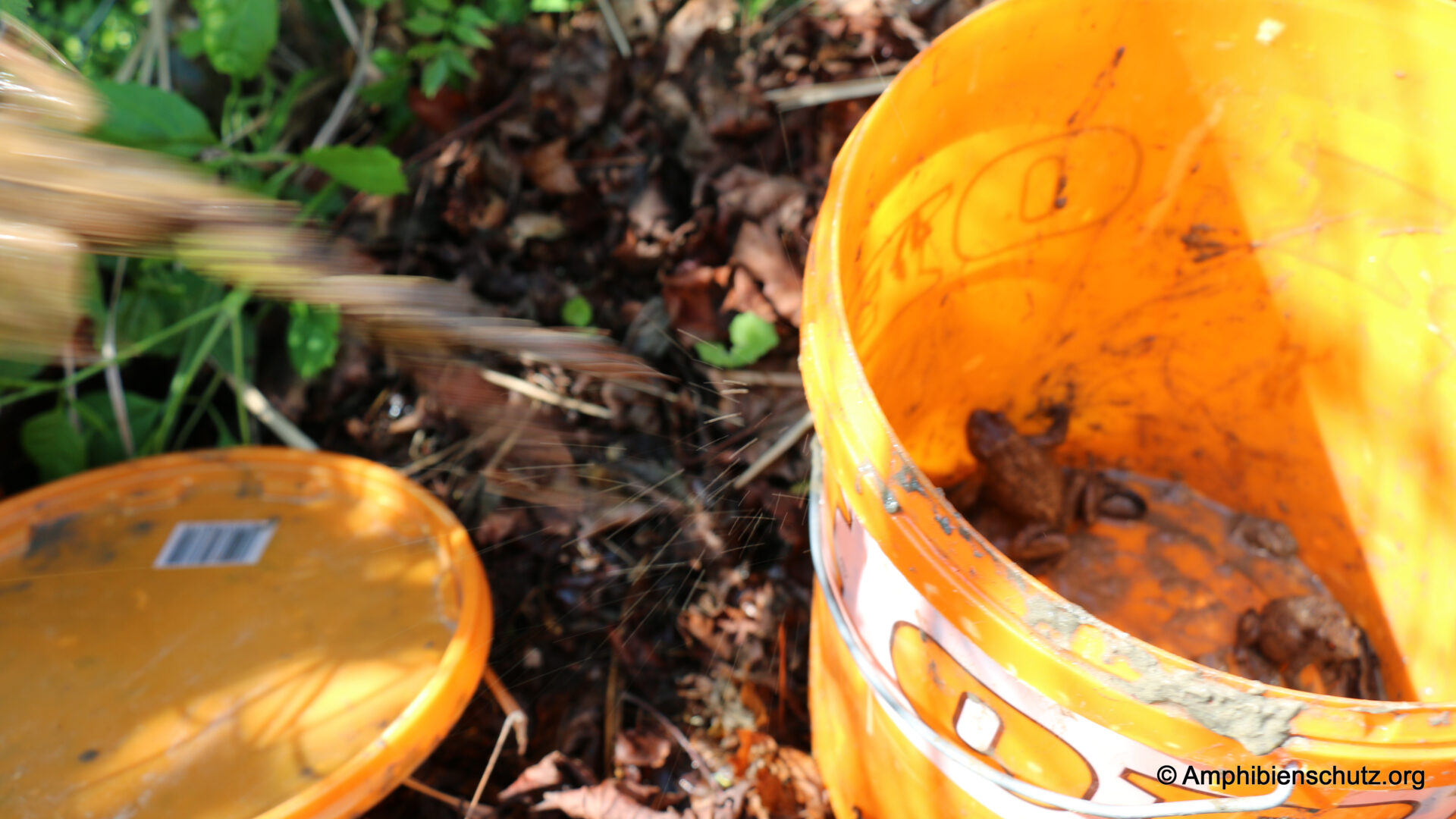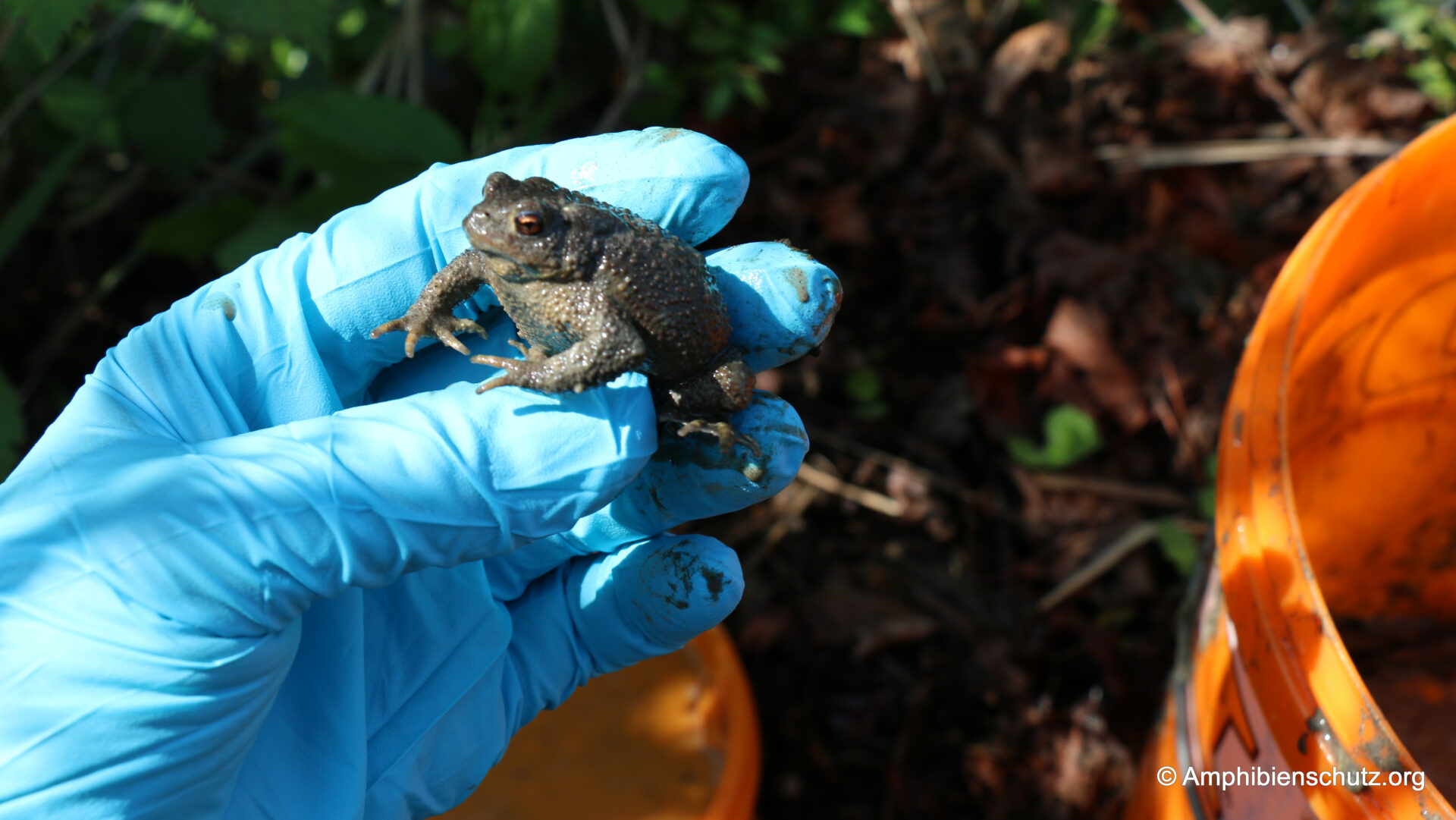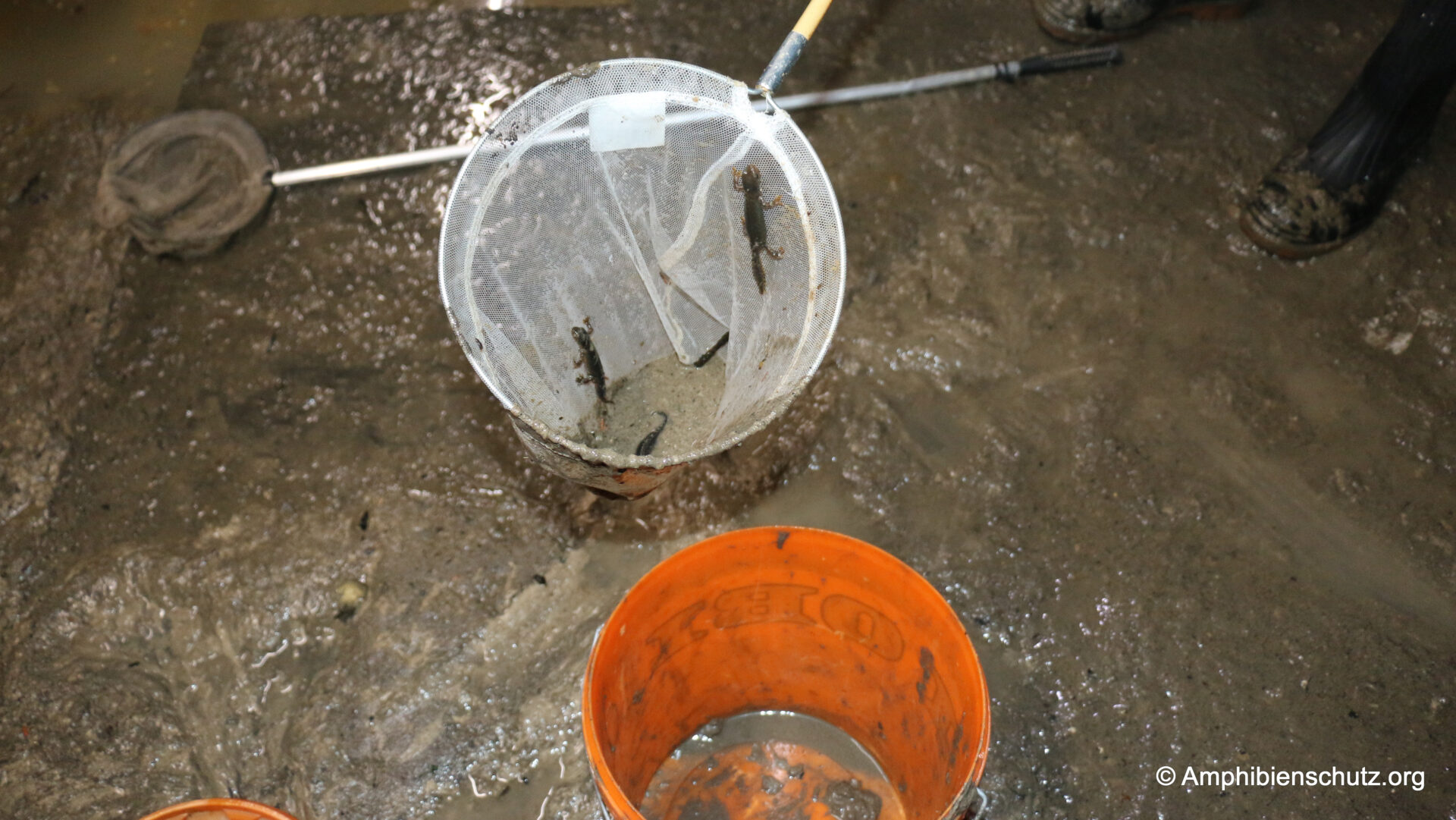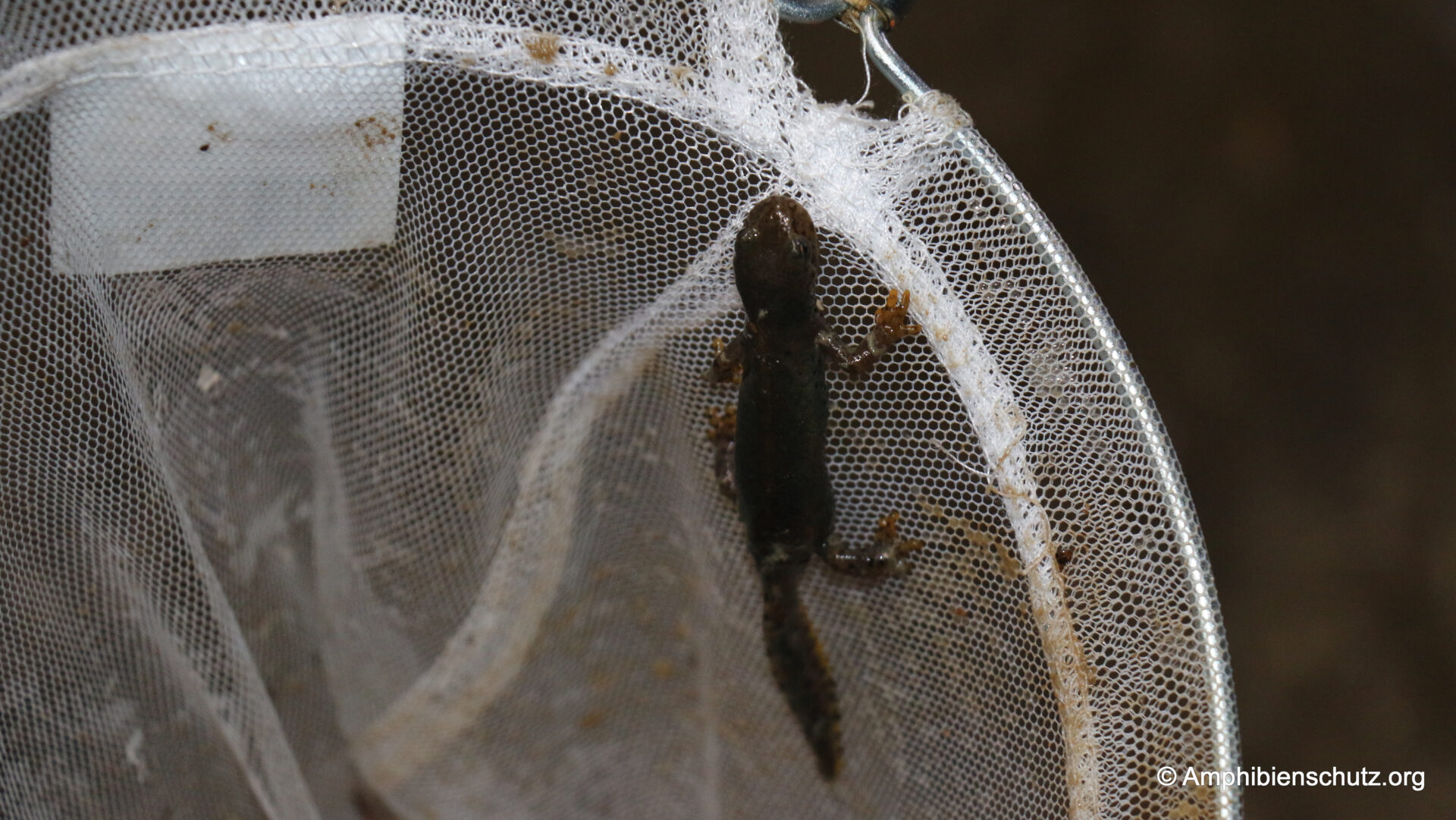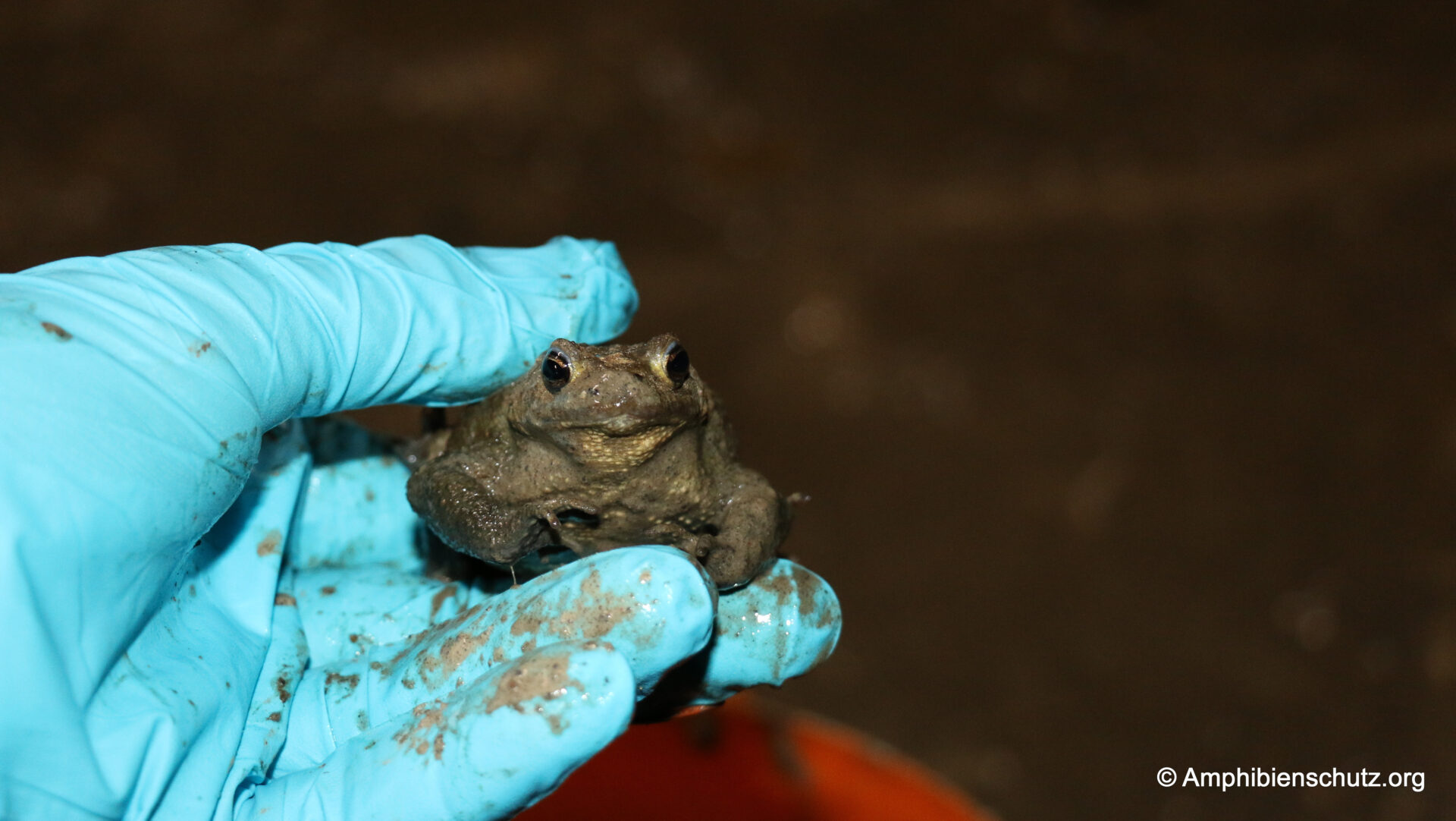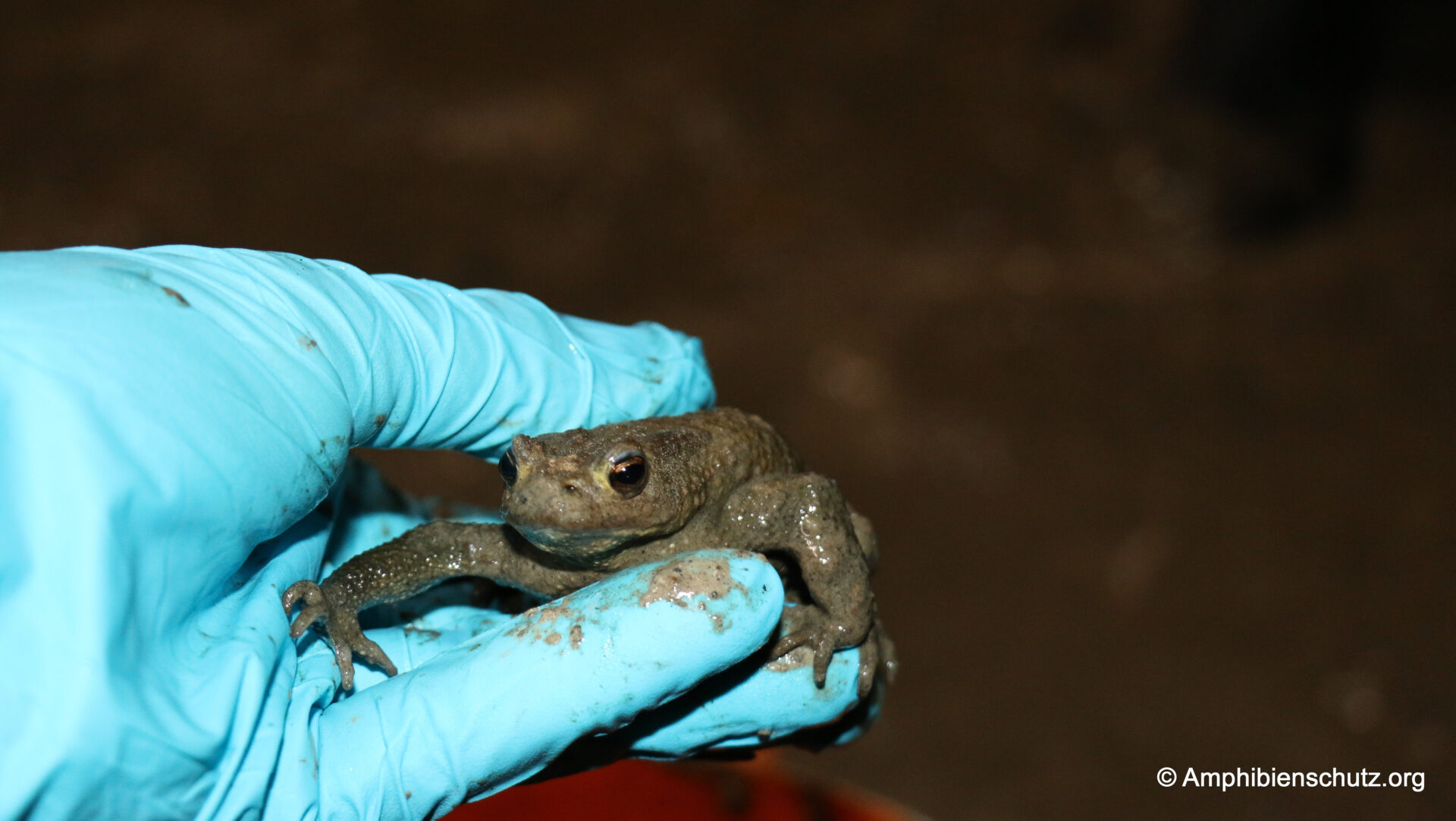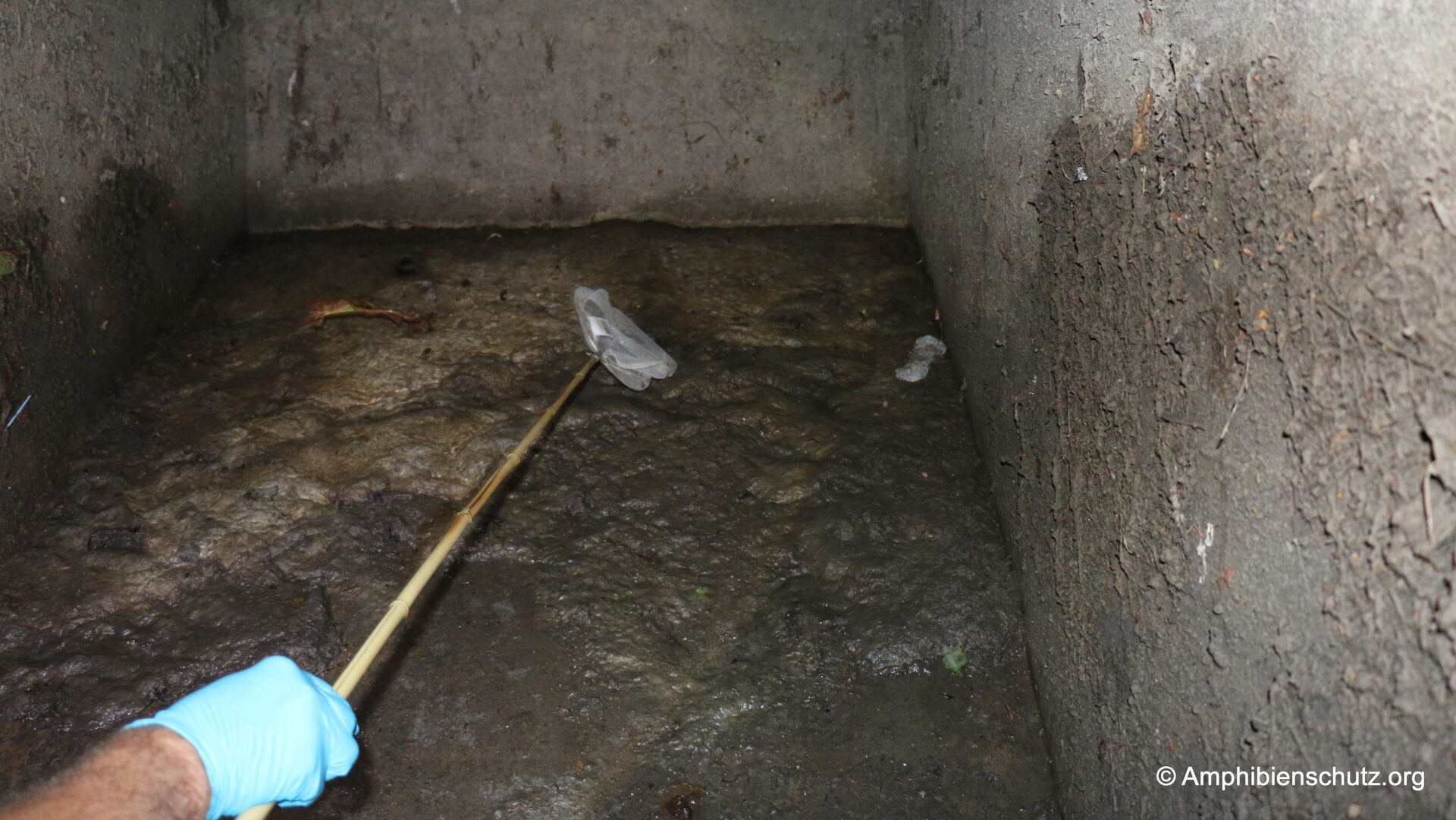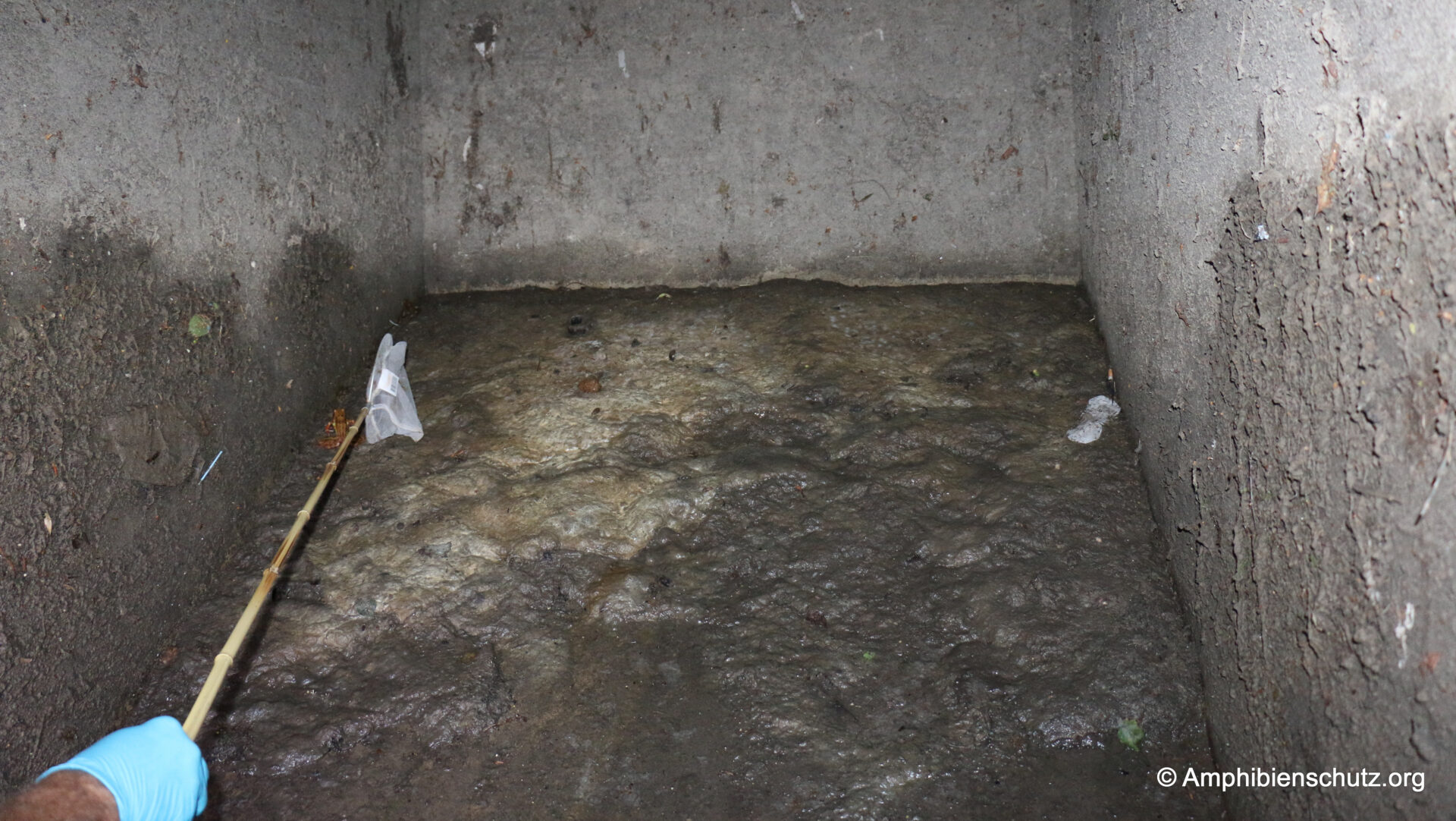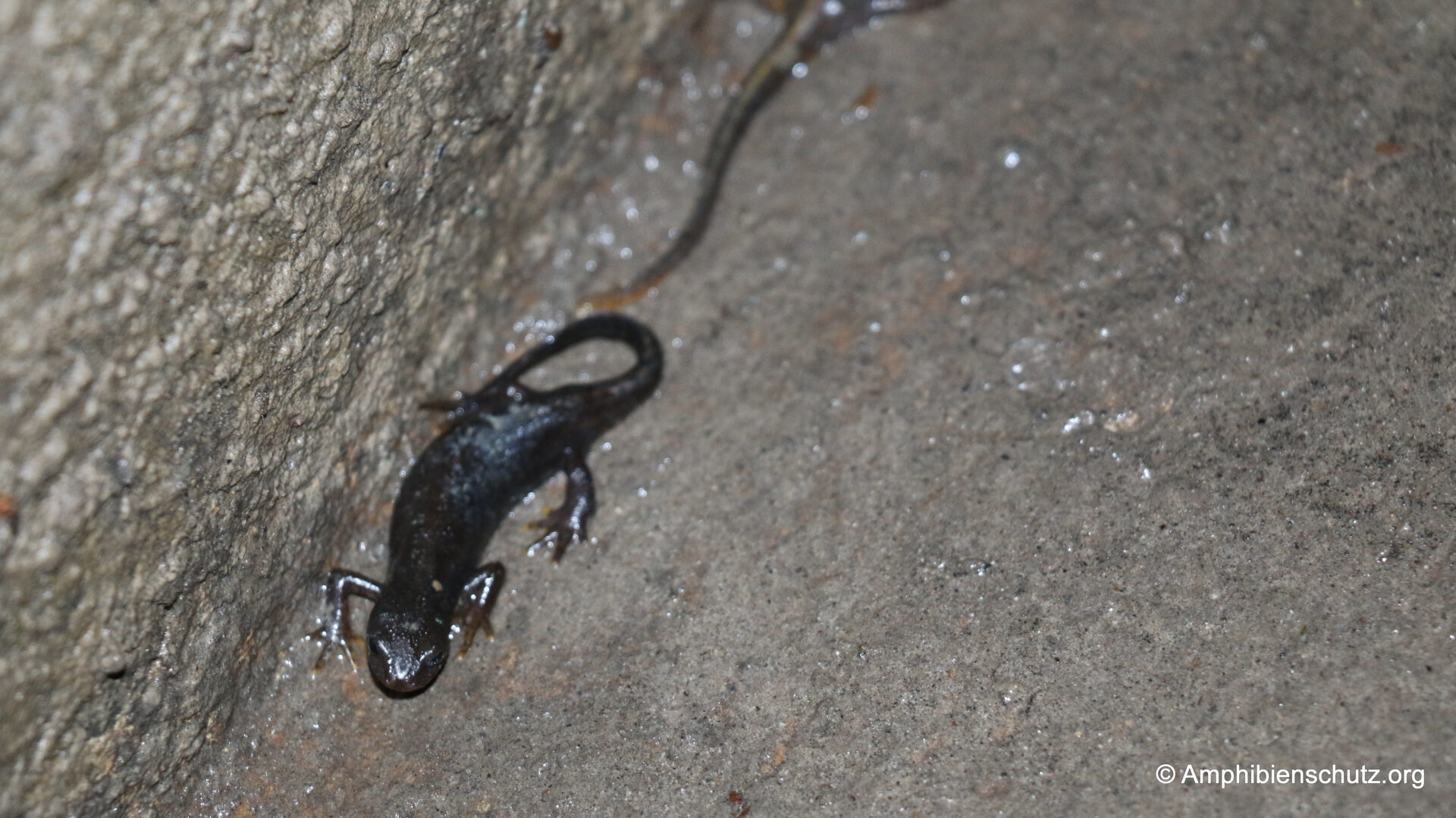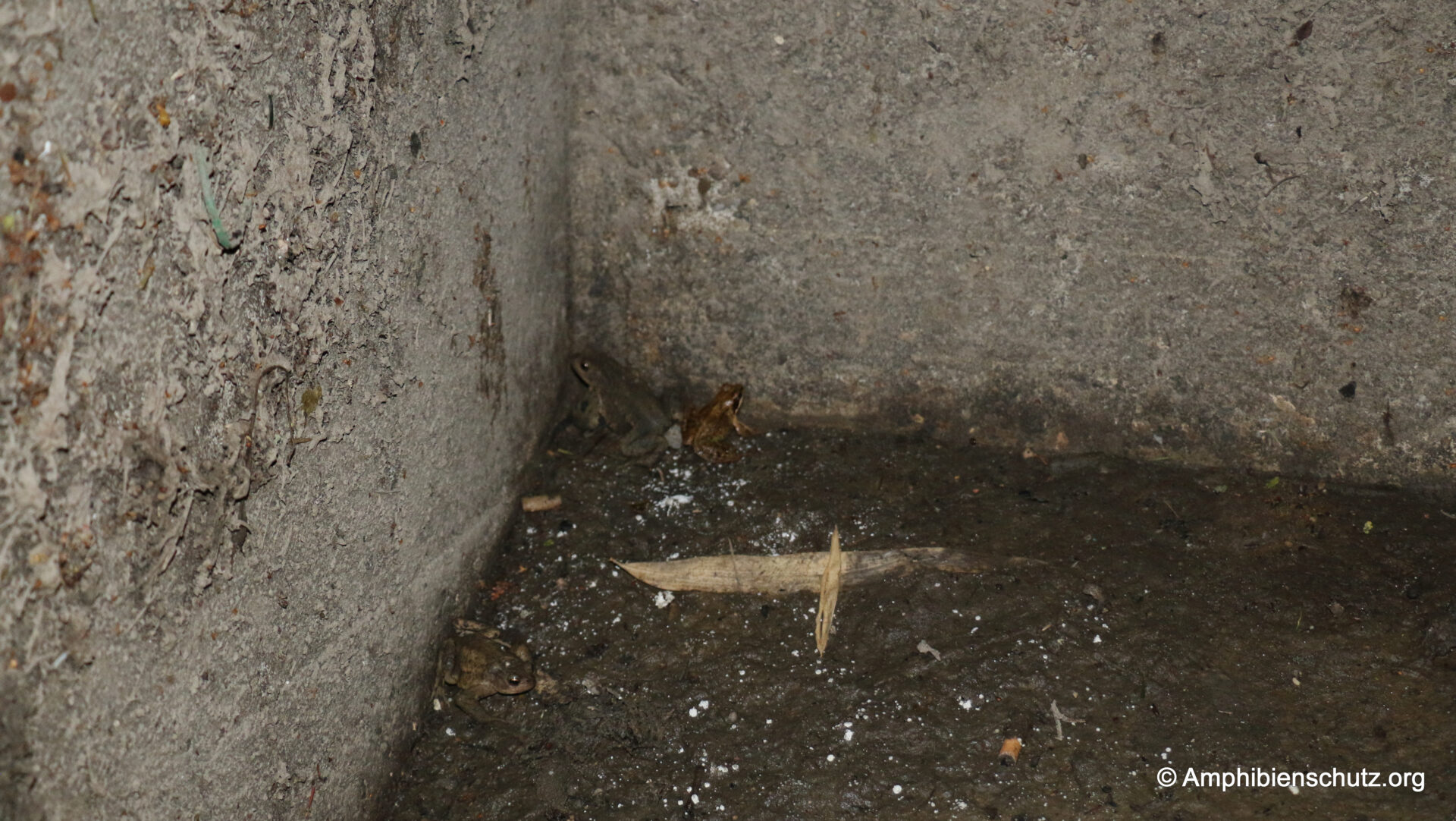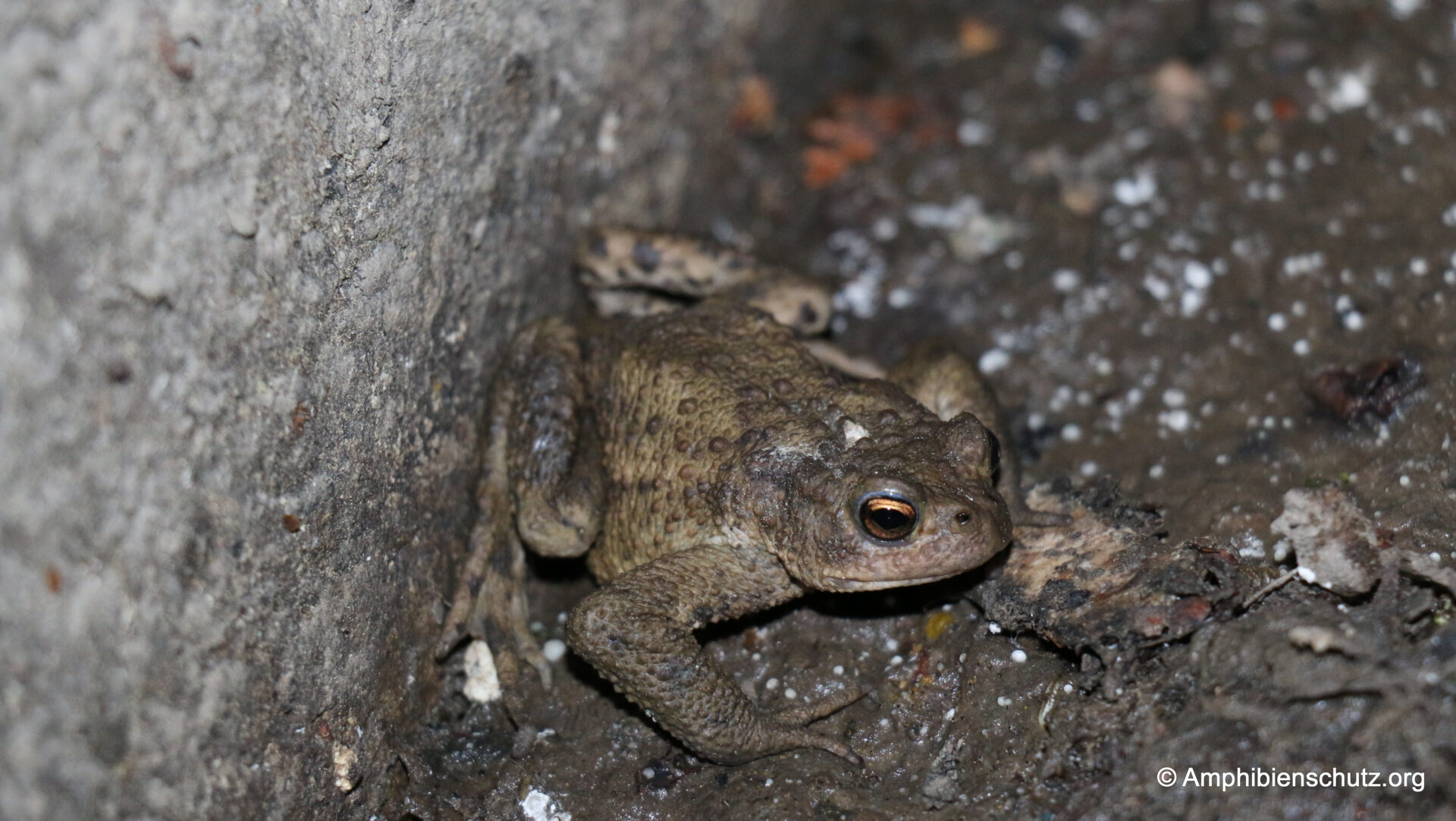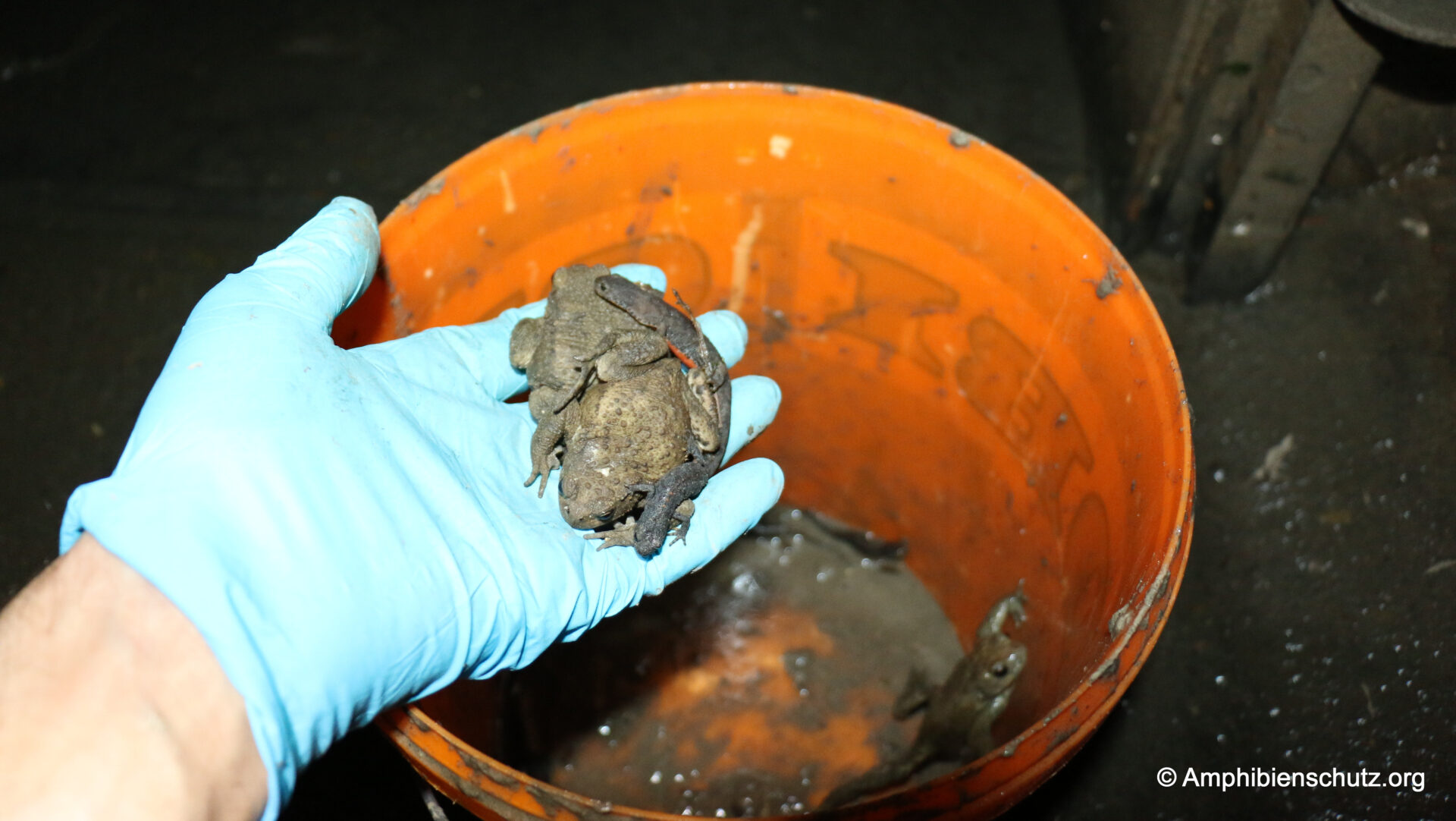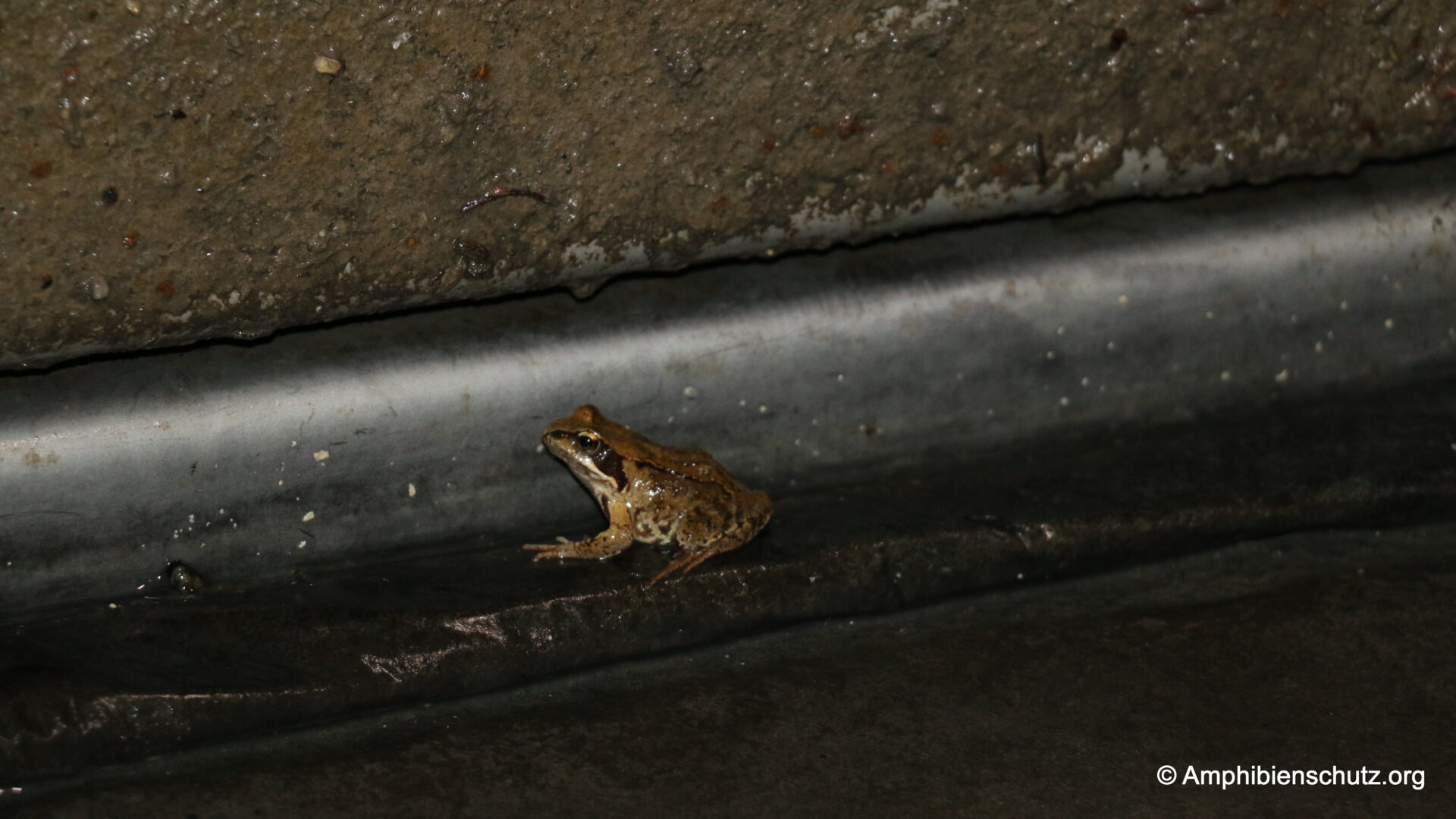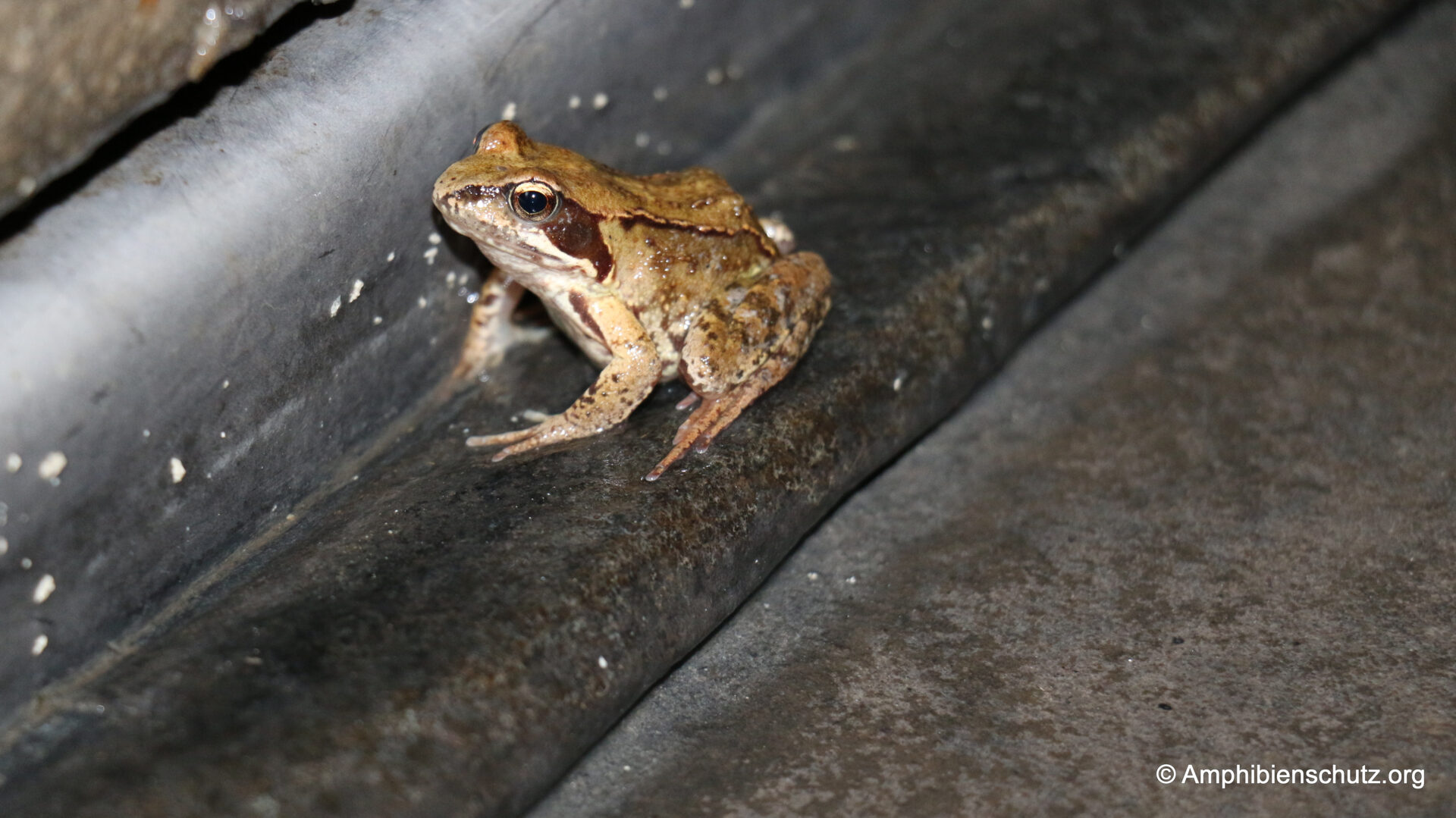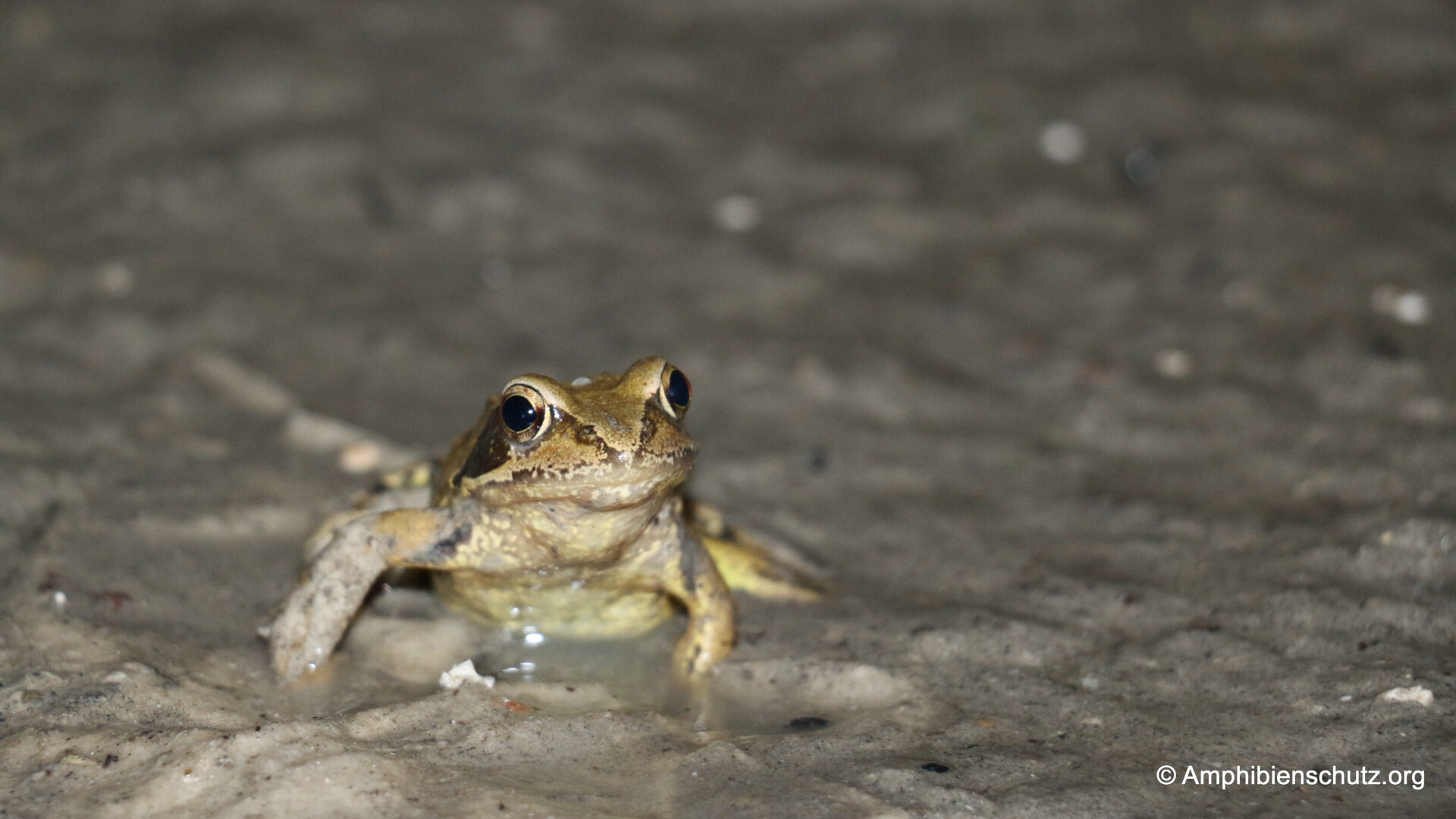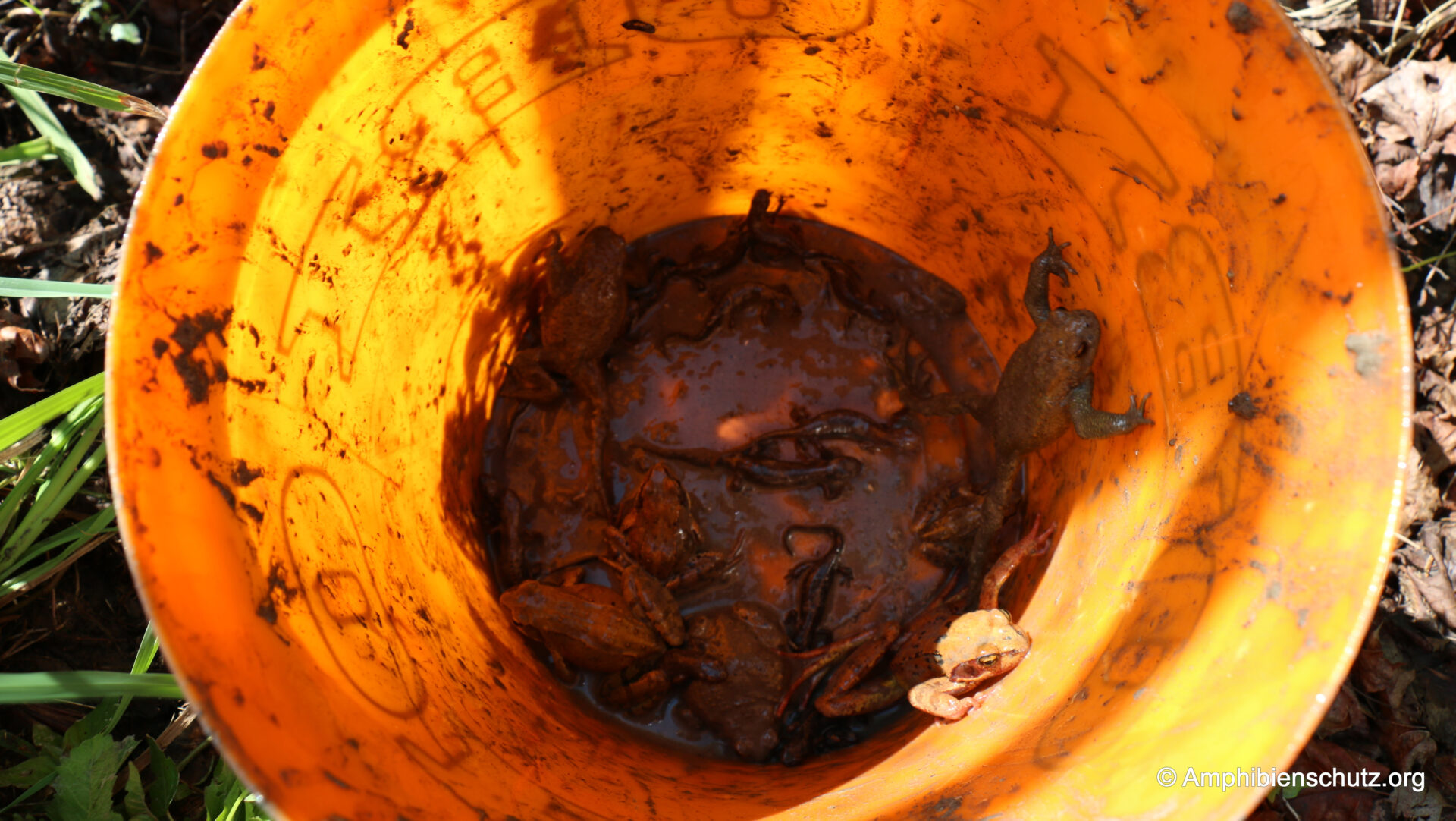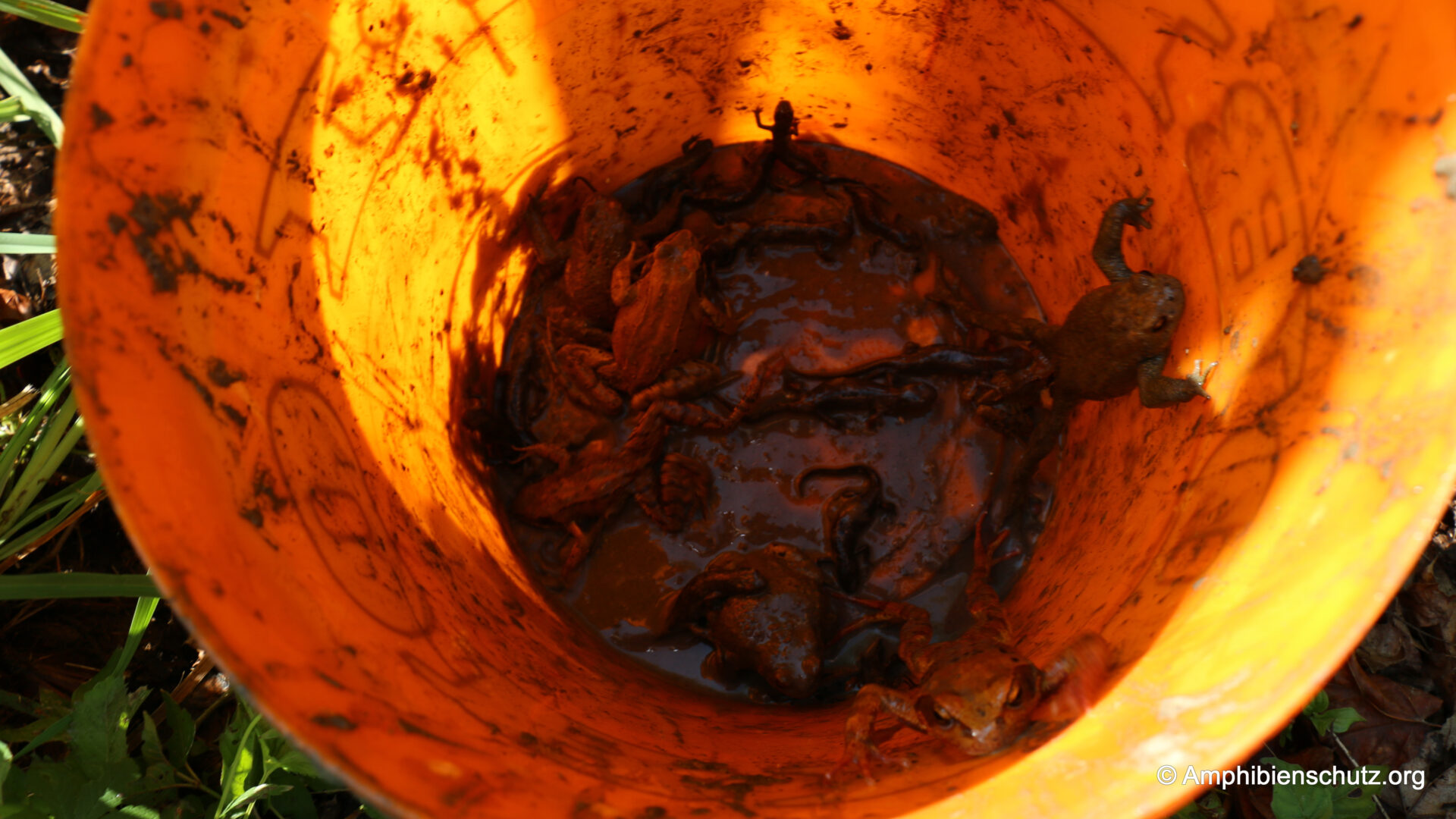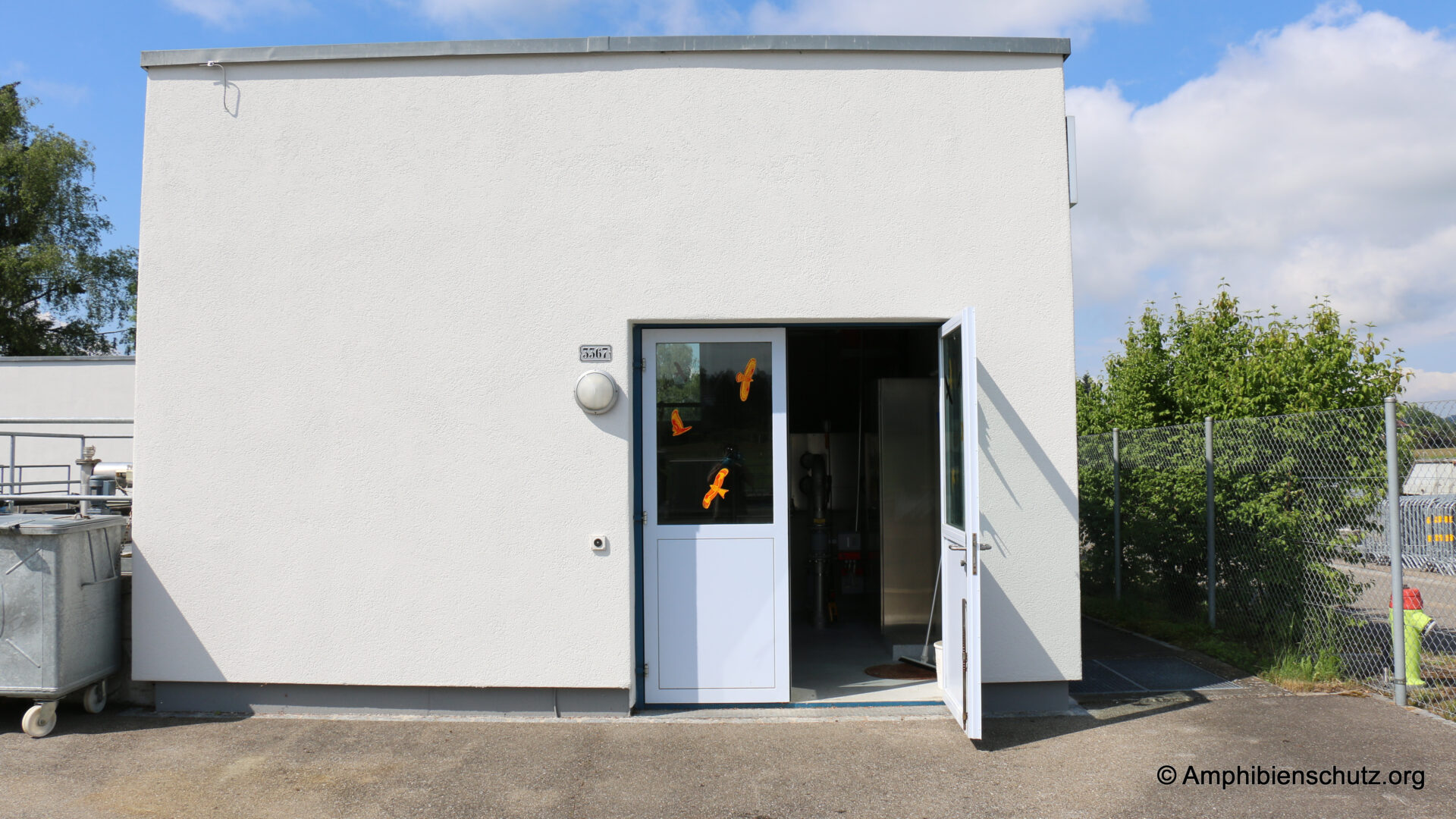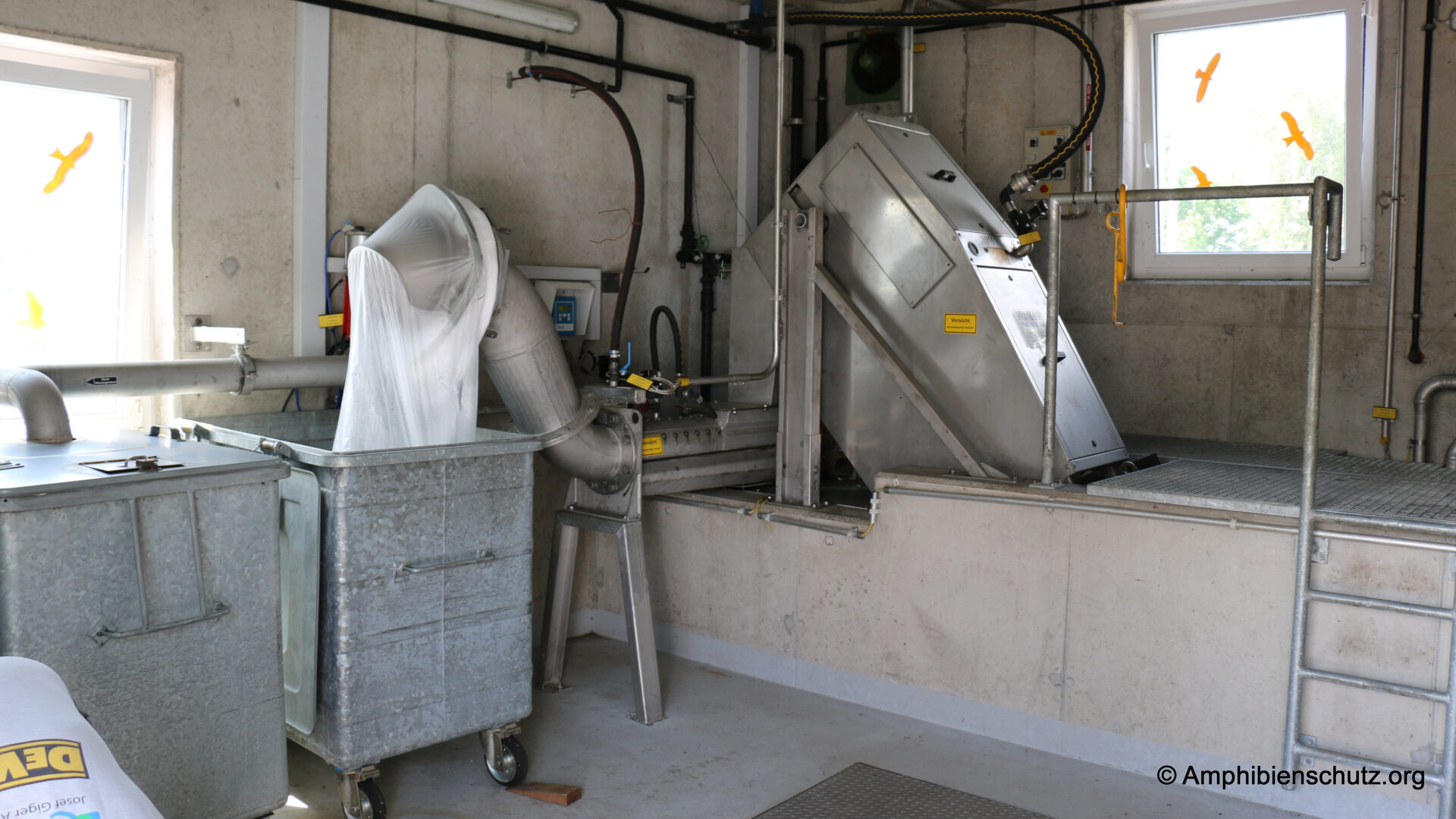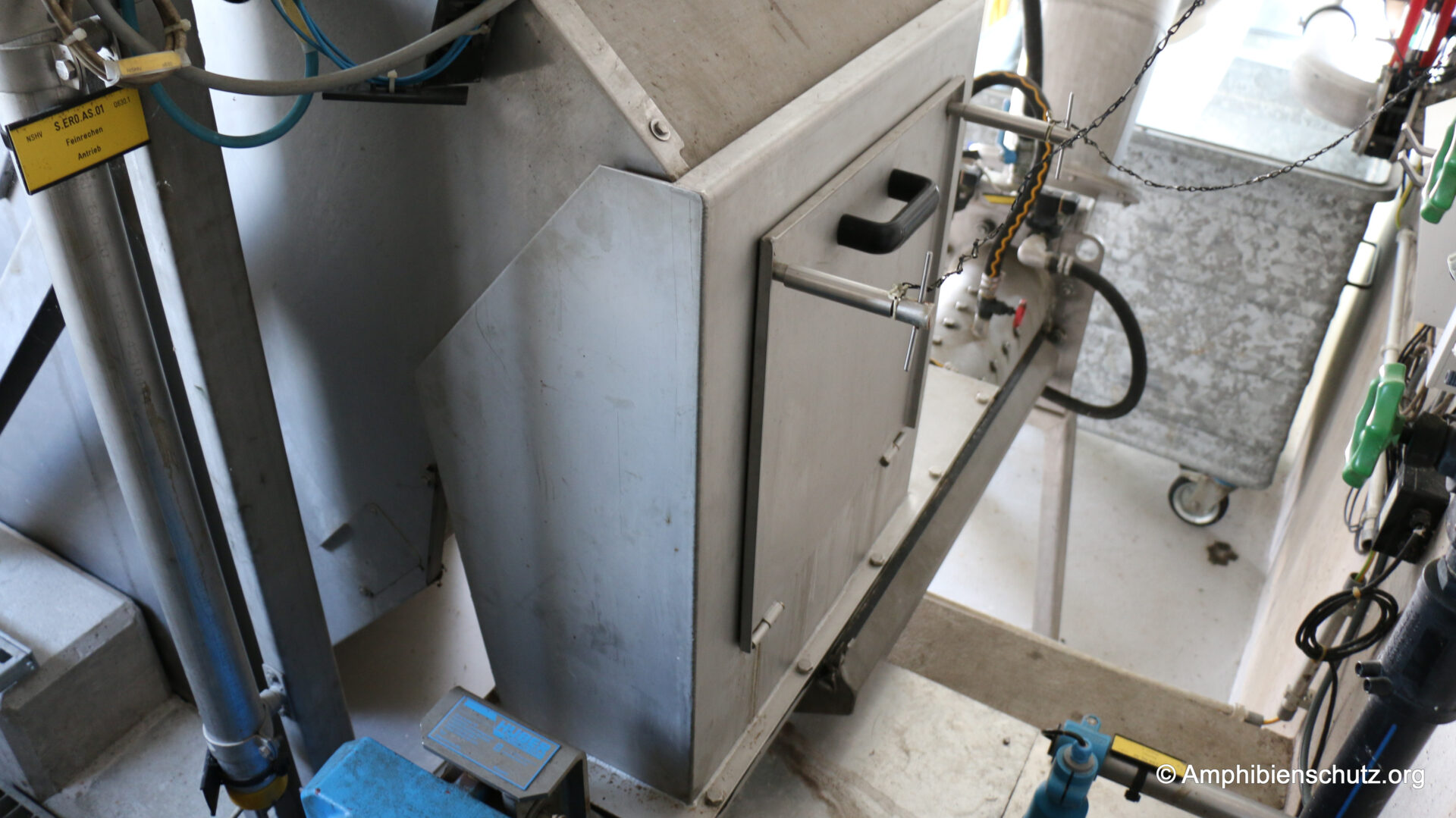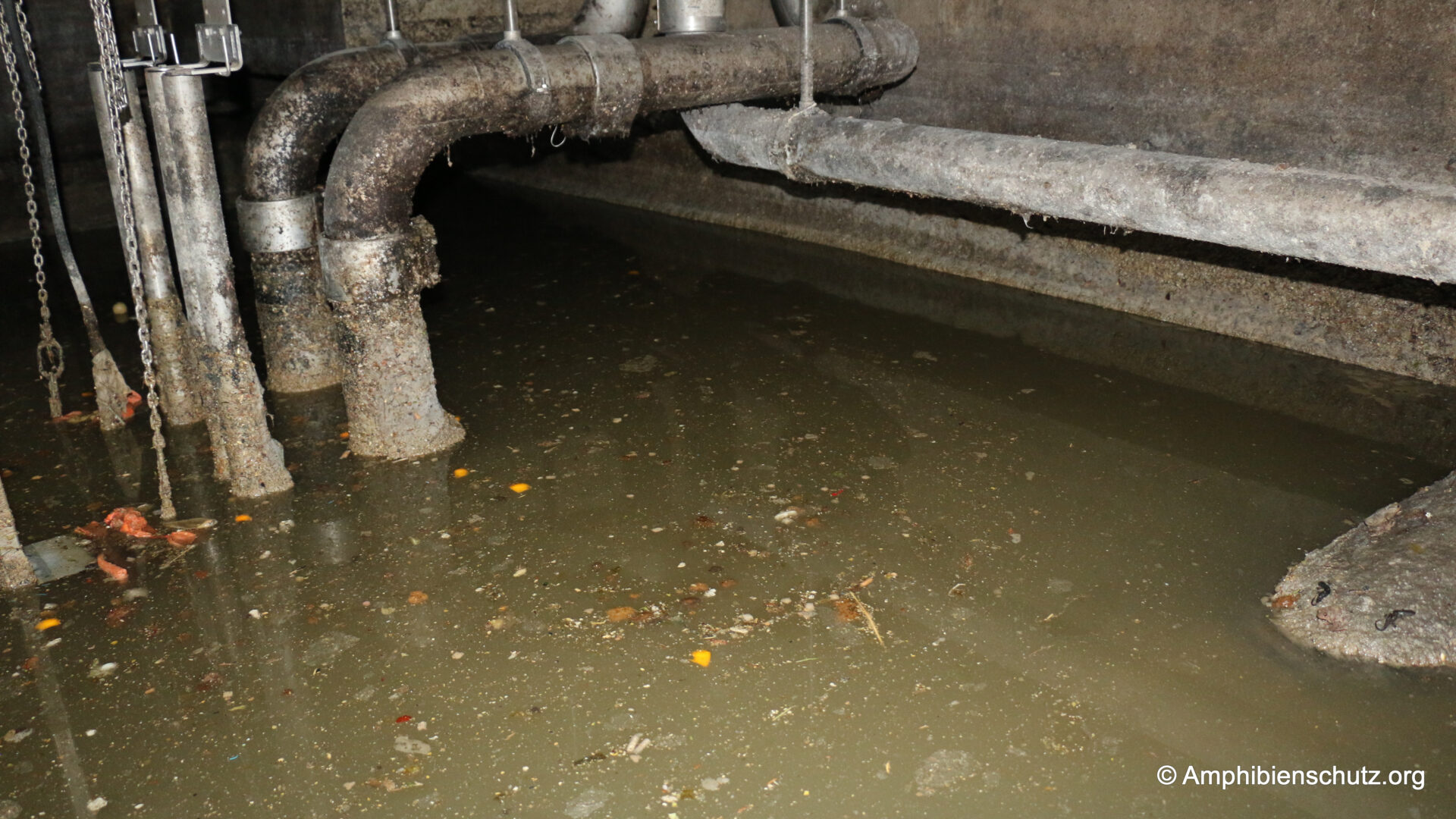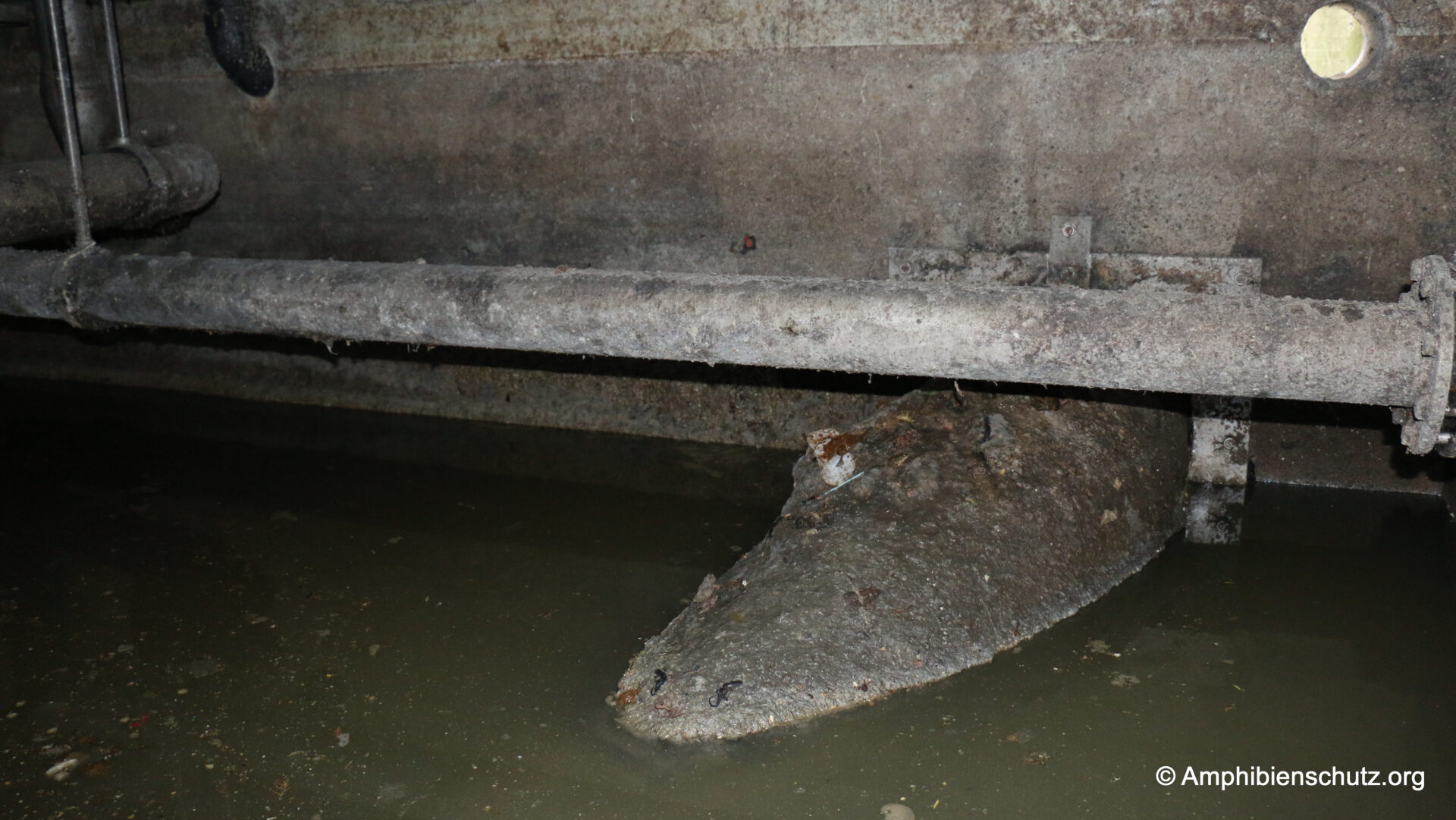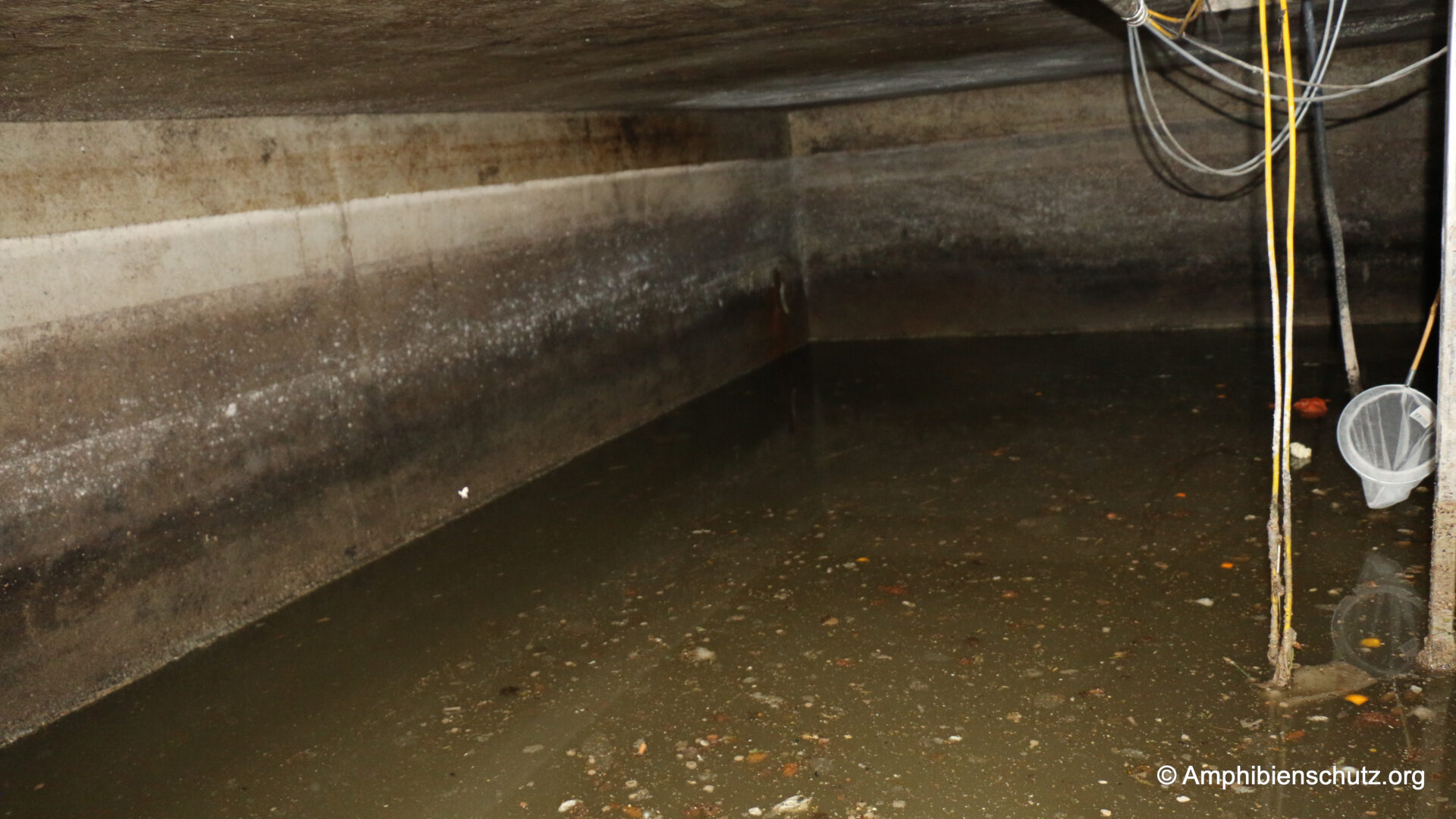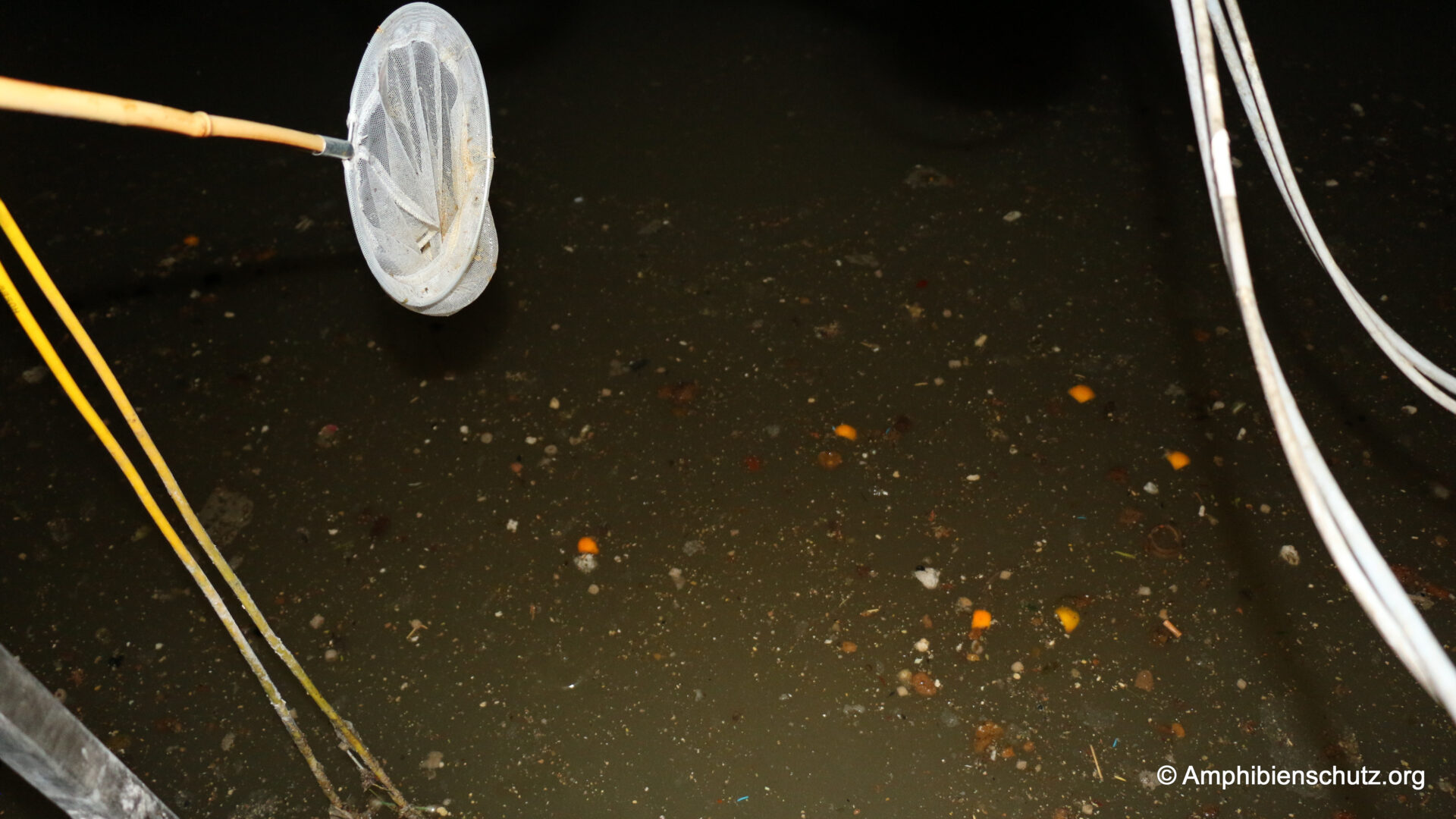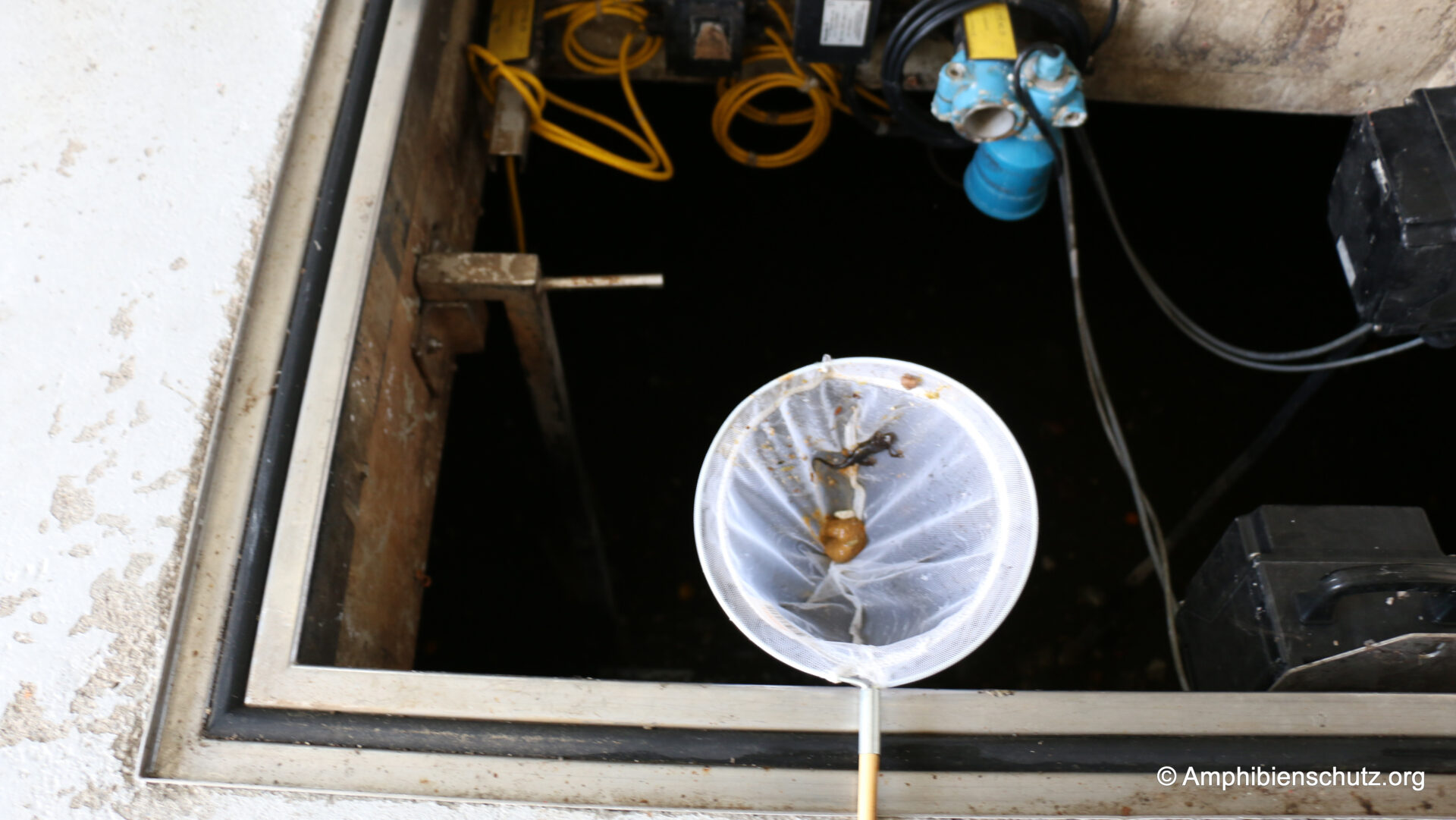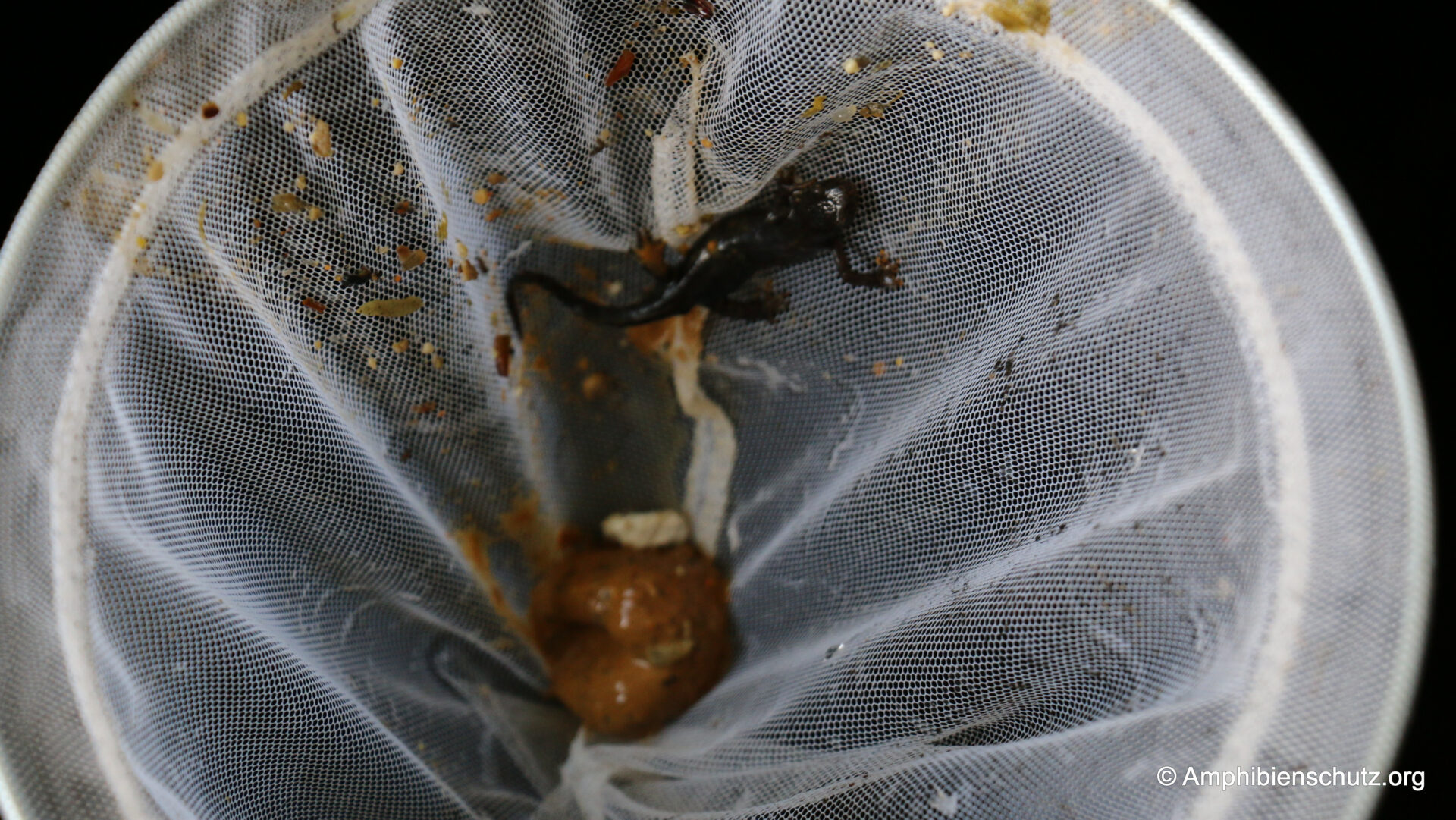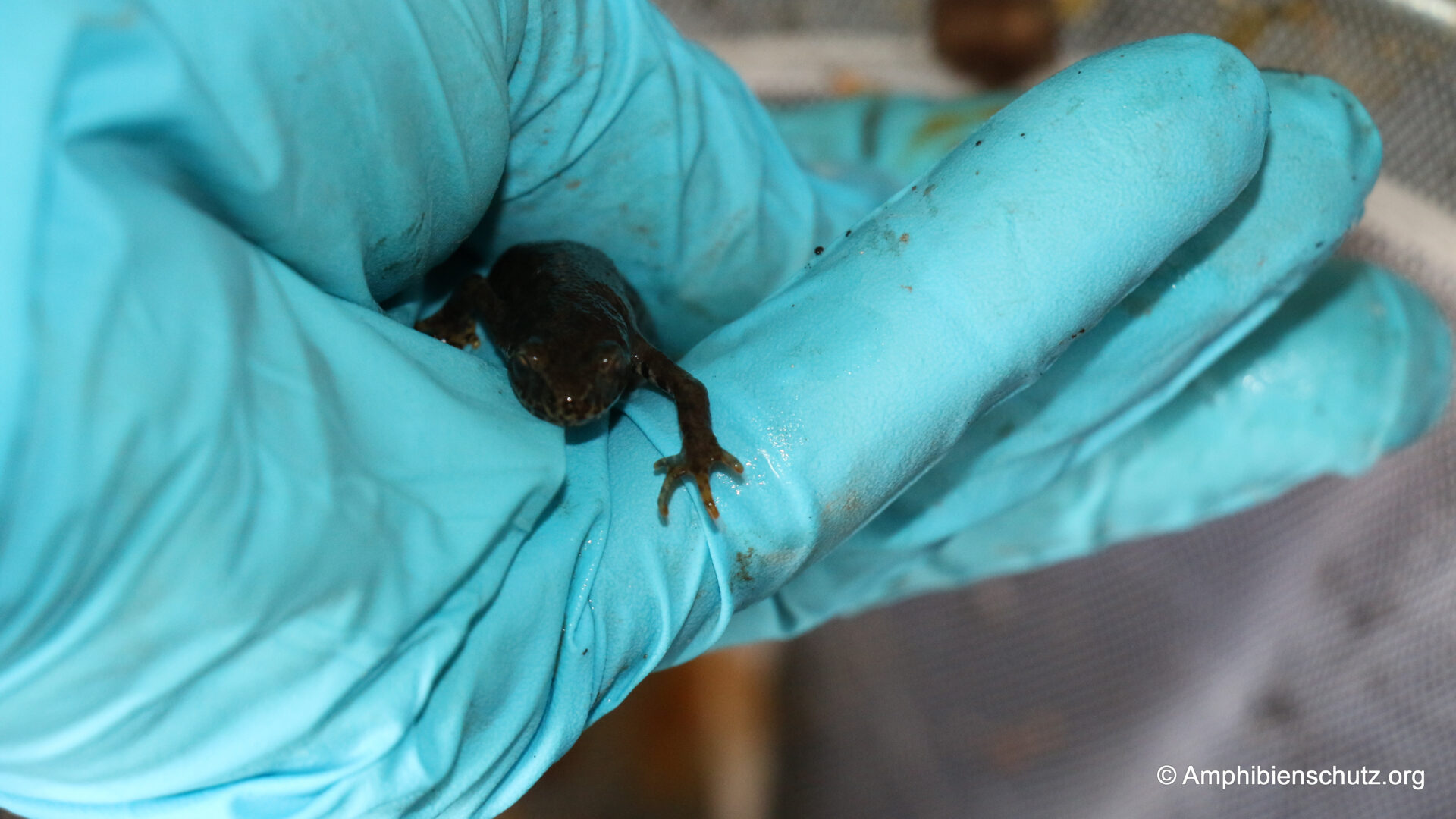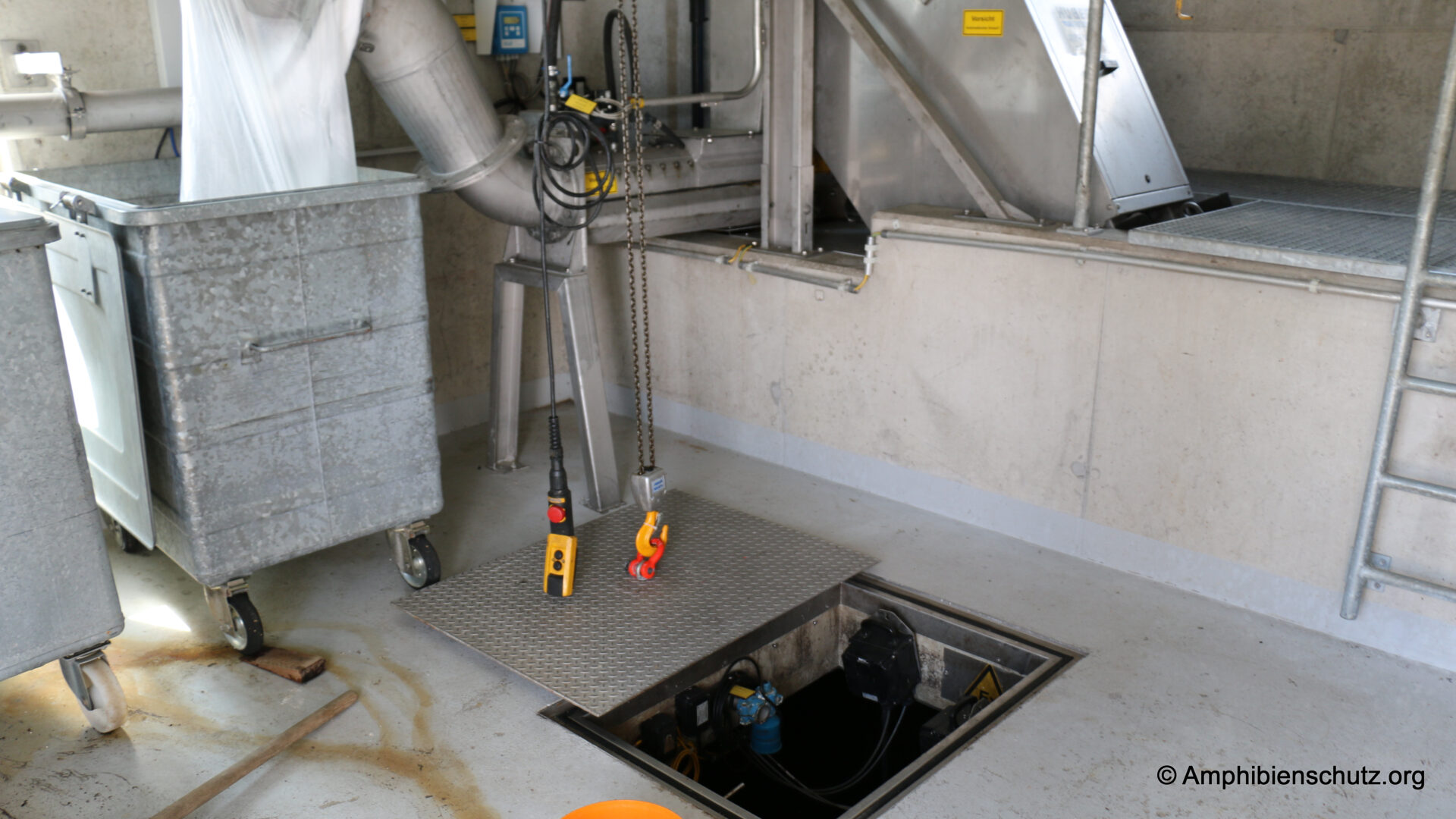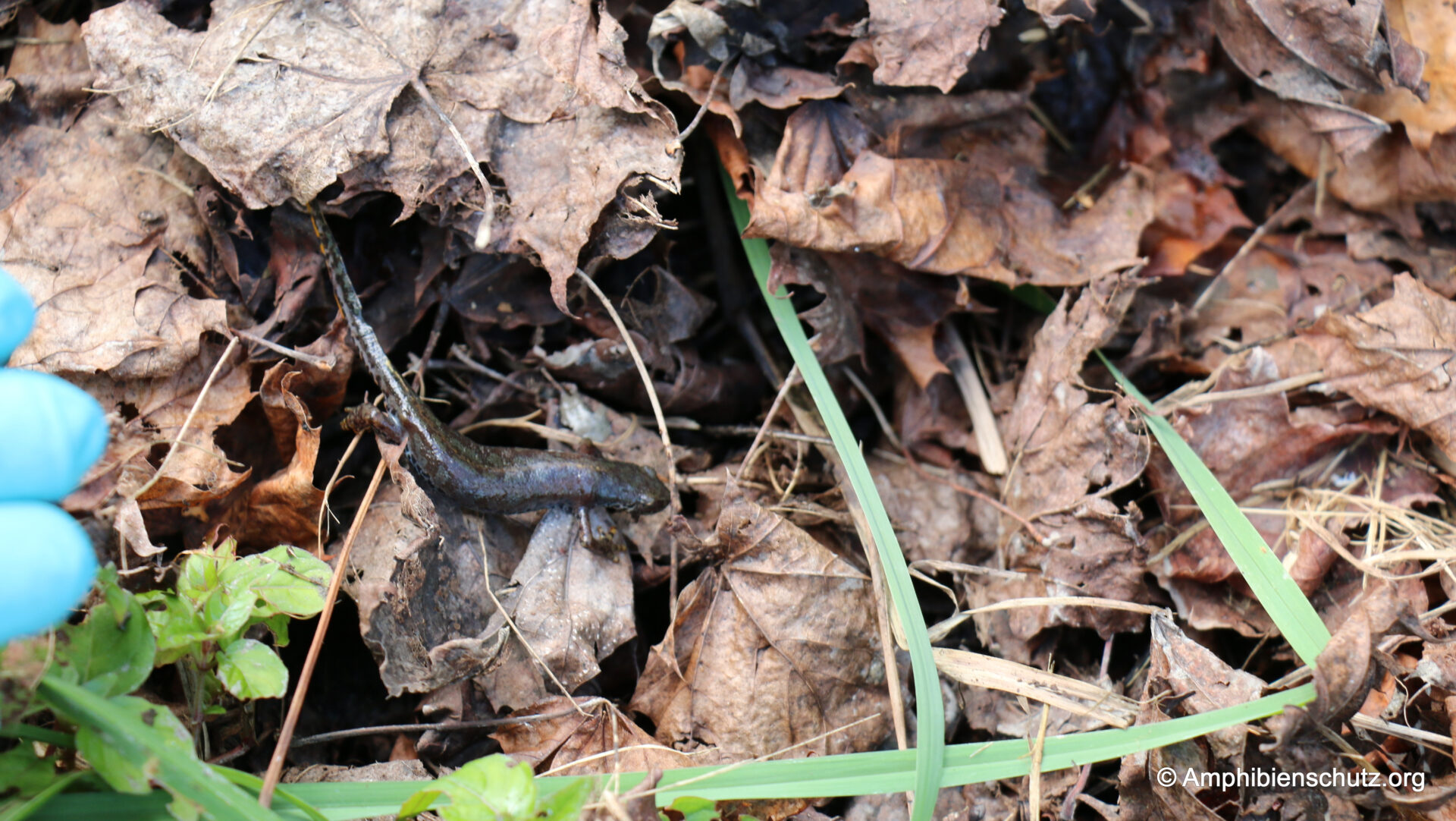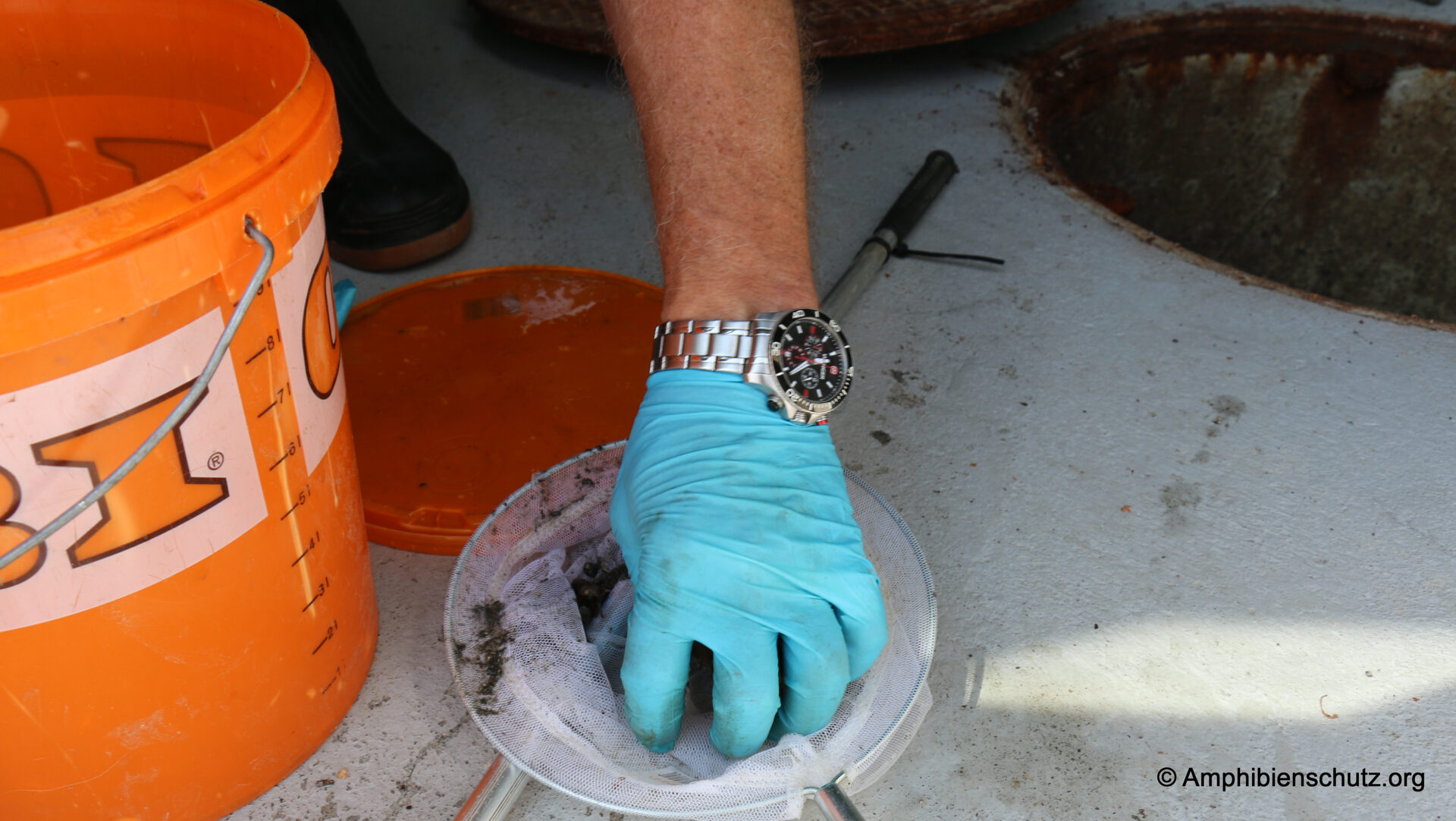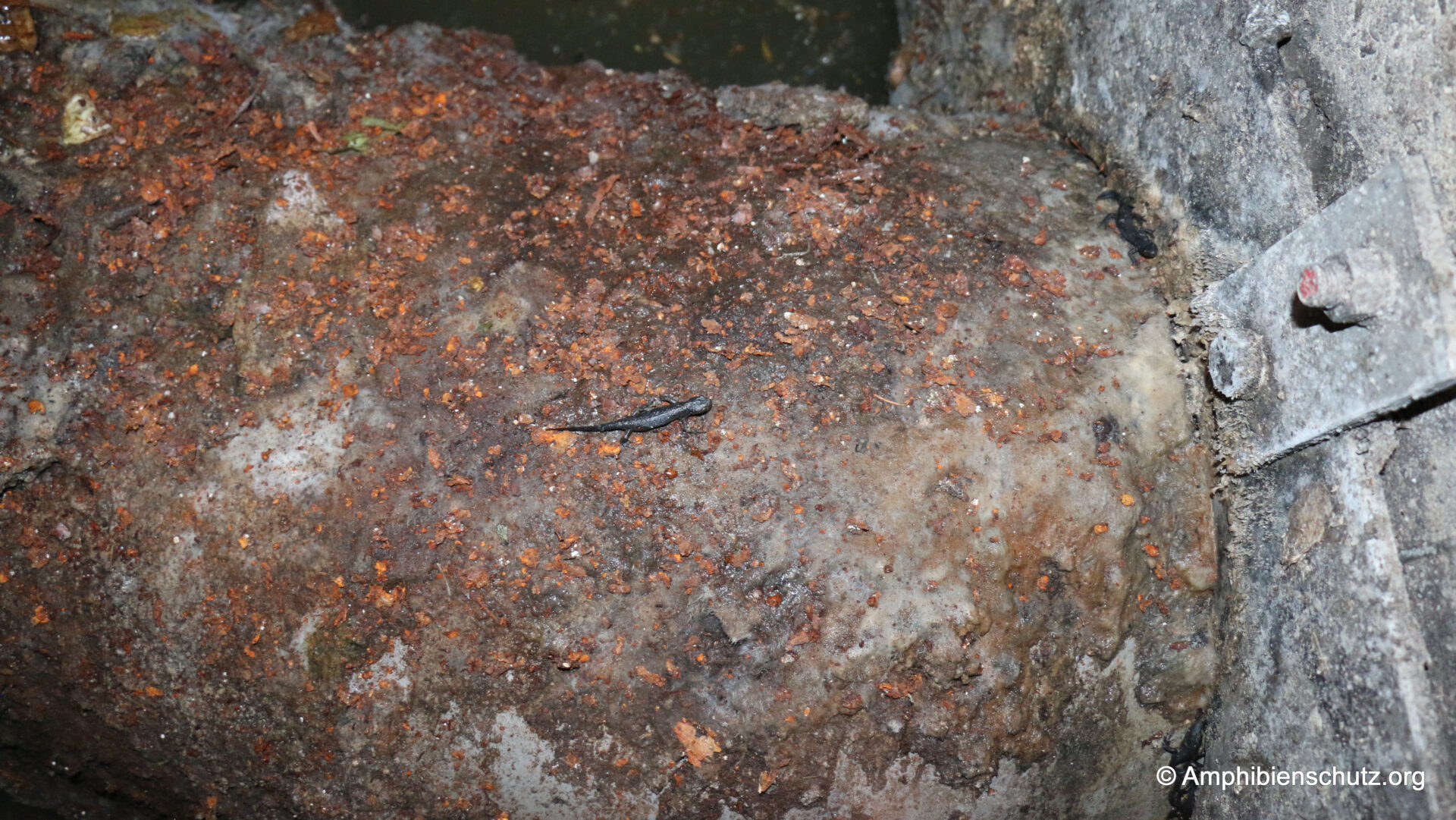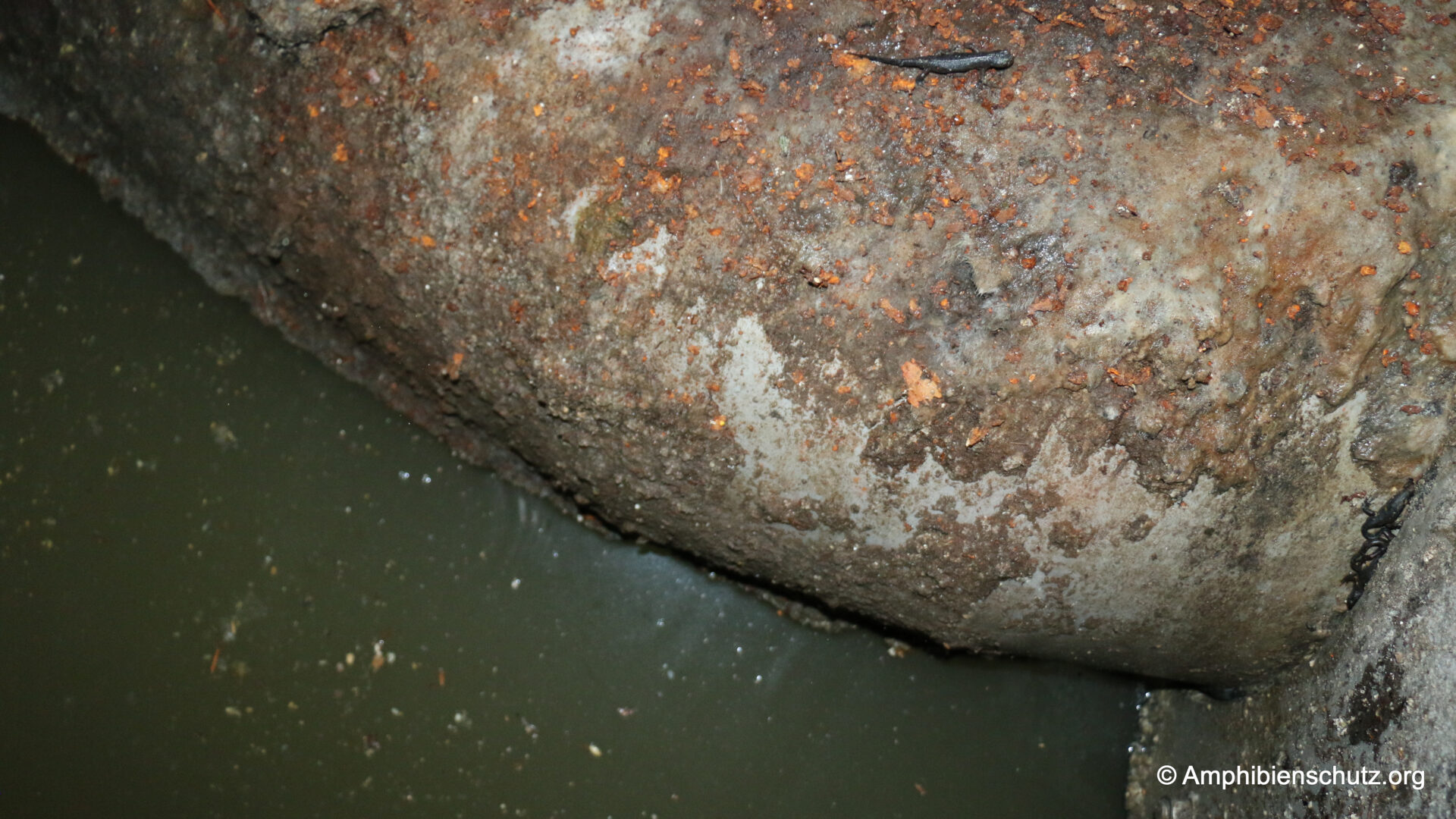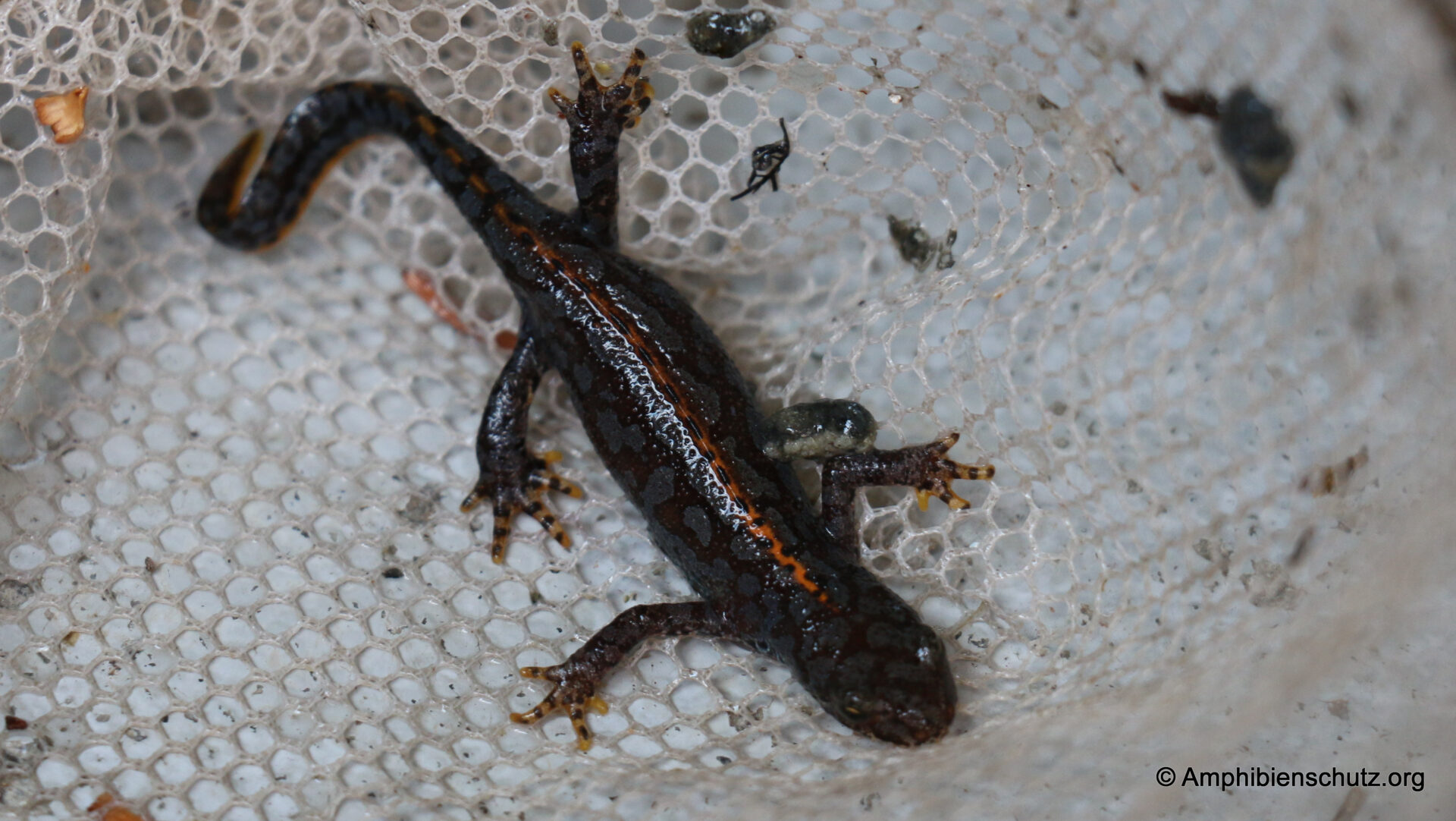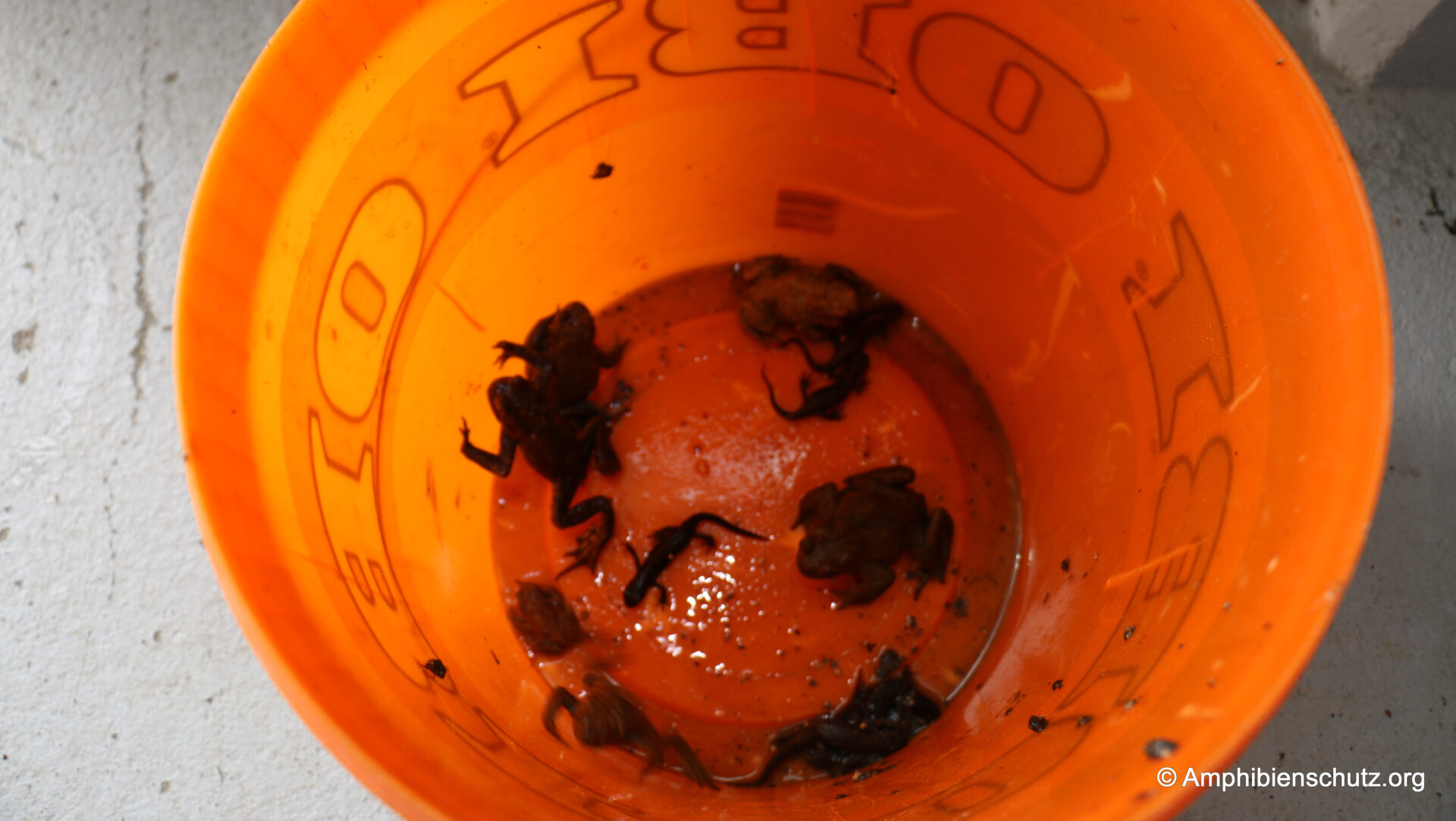Wastewater treament plants
The long-term goal is to prevent amphibians from getting into the pumping stations, rainwater retention basins or wastewater treatment plants or to reduce the number of amphibians that get there as much as possible. On the way to the wastewater treatment plant, the amphibians lose energy and may end up far from their habitat. In addition, not all wastewater treatment plant operators are equally open to innovations or to amphibian protection measures. Whenever possible, the amphibians should be able to get out on their own directly at or in the immediate proximity of where they entered.
Amphibian capture device at the wastewater screening
The amphibian capture device shown here (cf. Figures 1 – 10) is located immediately after the multi-rake bar screen
and in front of the rake press. Basically, every wastewater treatment plant has a multi-rake bar screen. Unfortunately, some of these screens are constructed completely differently and so there is no uniform solution. In certain systems the multi-rake bar screens are completely open and in others they are completely closed. If the screen has a completely open design without a cover grill, frogs will occasionally jump out. However, open structures often have a cover grill that makes it impossible or difficult for the frogs to jump out (cf. Figure 11). If the multi-rake bar screens are designed to be closed, employees are more likely to reject such an amphibian exit system because of the fear that the stench in the room could increase.
Incidentally, the rake distance is not the same in every wastewater treatment plant or for every rake. Experience has shown that from a rake distance (bar spacing) of 15 mm, the amphibians increasingly move on to the next system, a sand trap system with a grease separator. With a rake distance of 10 mm, however, the rake is the final stop for the amphibians.


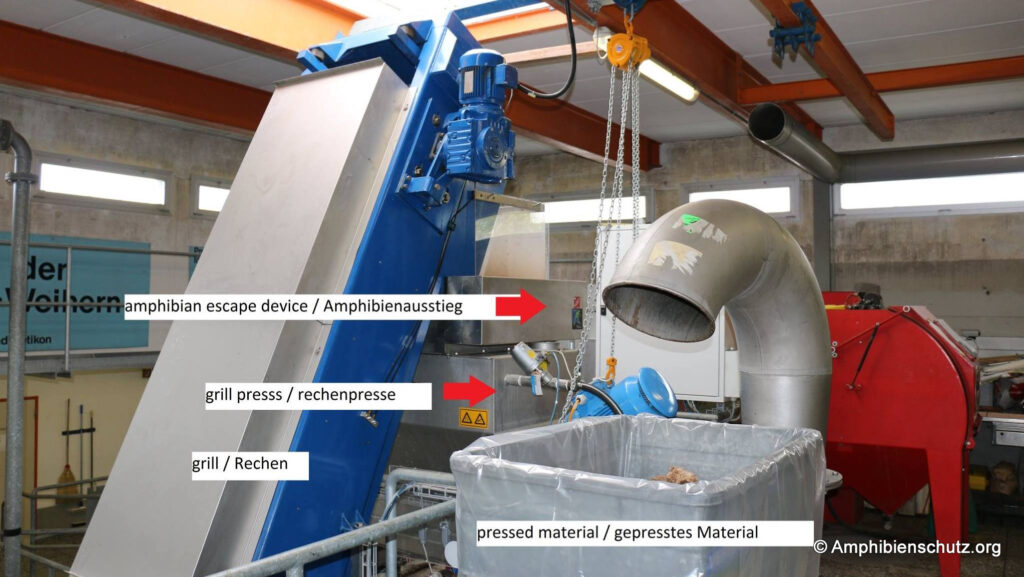
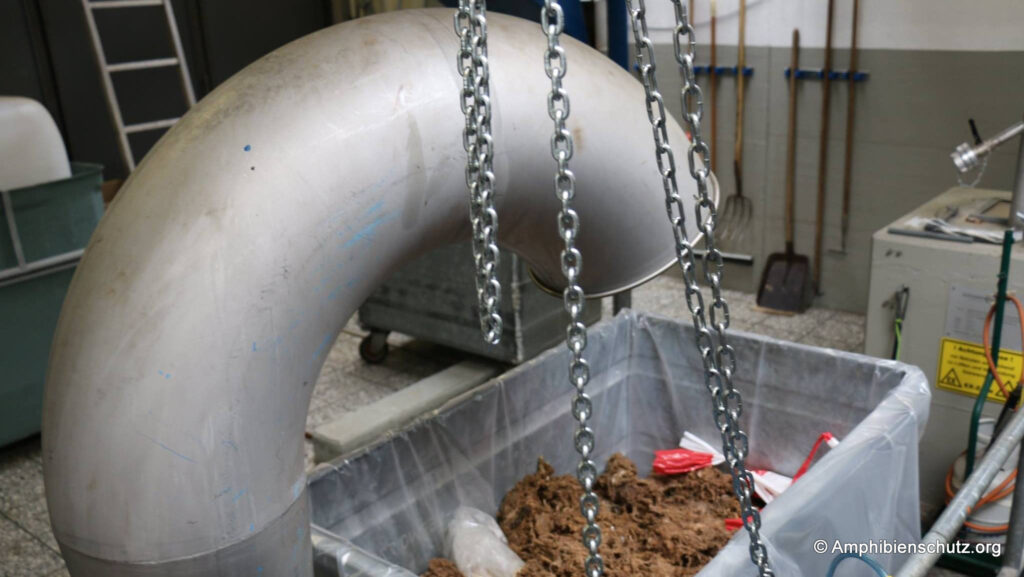
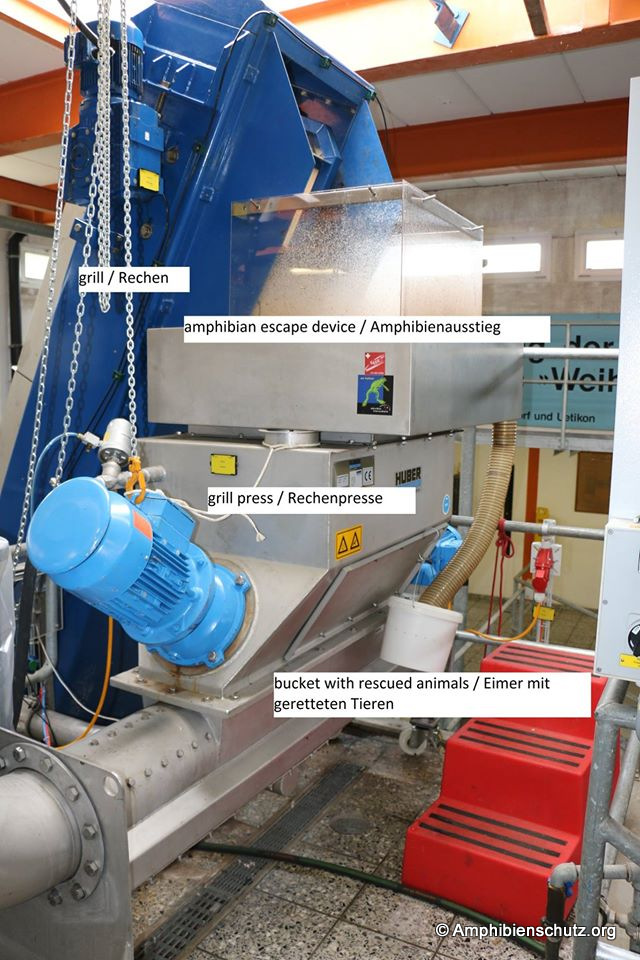
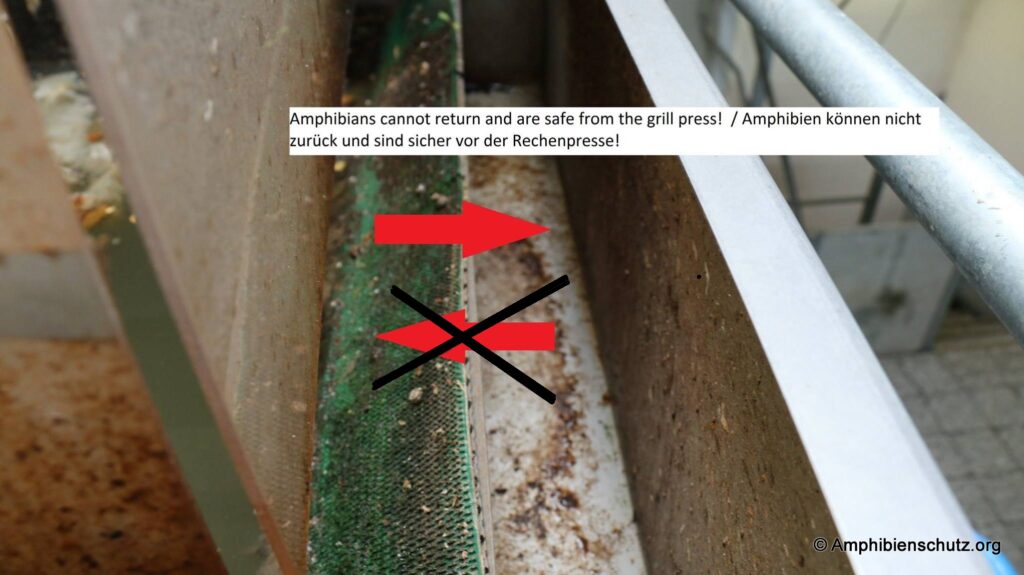



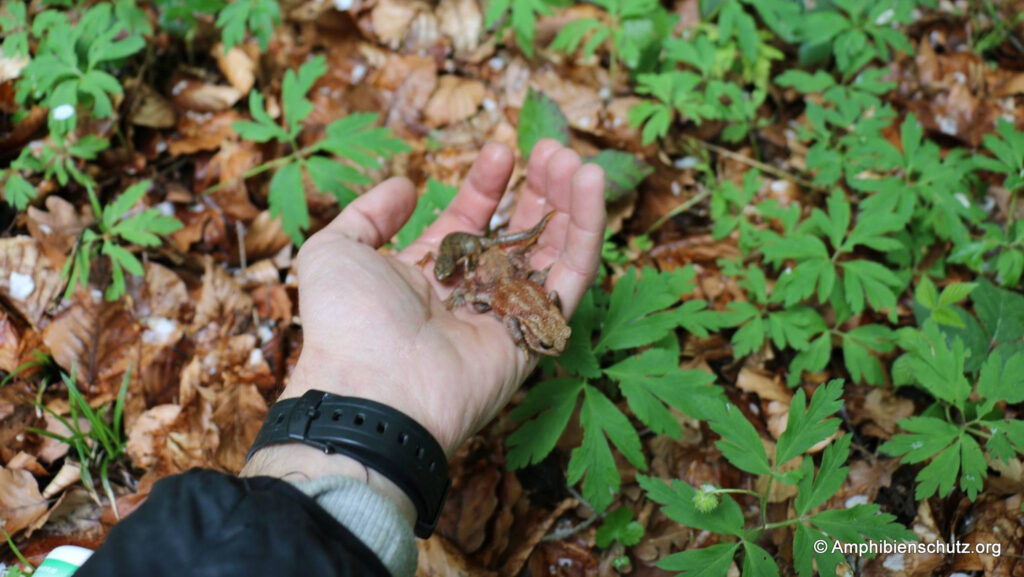

Amphibian collector device in the aerated sand trap system with a grease separator.
Because the rake distance is too large, the amphibians in this wastewater treatment plant reach the sand trap with a grease separator. An amphibian collector device is now used there (cf. Figures 12 – 15). The amphibians that get into the collector device can no longer get out and can therefore be saved. Such an amphibian collector device could also be used in rain retention basins and other systems.

© Christoph Noger
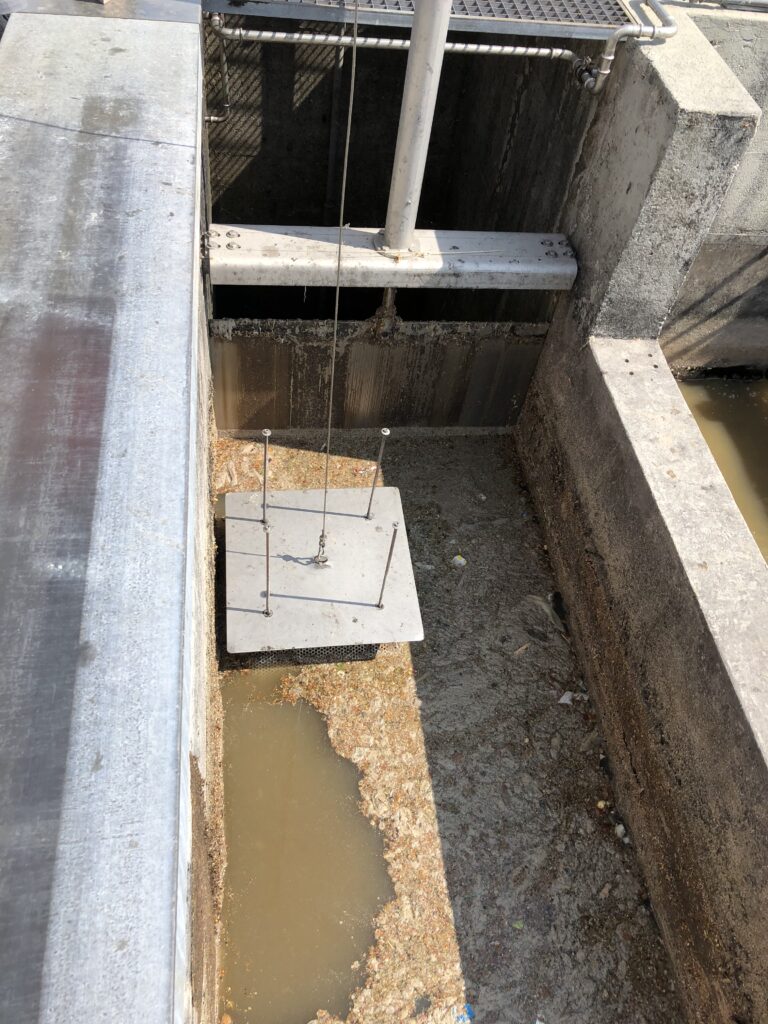
© Christoph Noger

© Christoph Noger

© Christoph Noger
Amphibians in the rain retention basins
Attached below is a photo album that mainly shows pictures of rescue operations from rainwater retention basins. The rain retention basins shown here are located directly next to the wastewater treatment plant. As a rule, there are also rainwater retention basins elsewhere in the community and not just at the wastewater treatment plant itself. Entering the rain retention basins may only be done with a gas warning device and the permission of the operator.

